







Welcome to otherworldly adventure on the pristine Osa Peninsula sea kayaking, whale watching, reef diving & snorkeling, rainforest hiking, trail rides, mangrove exploration, and nighttime rainforest wildlife watching.


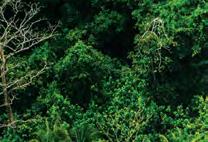

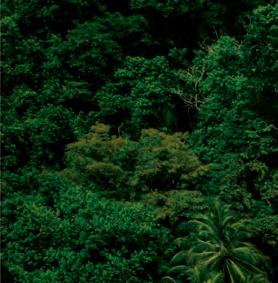




TM for your






















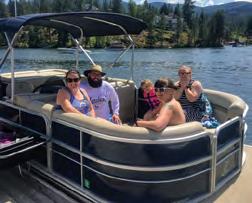


After nearly two decades as the champion of the mid-size pickup truck market, the Toyota Tacoma is ready for its next chapter. This go-anywhere truck is entirely new for 2024 with epic adventures in mind, improving upon every winning aspect that has made it a stalwart for truck buyers for years along with Toyota’s legendary quality, durability, and reliability and much, much more.


JULY - AUGUST 2023

WWW.OUTTHEREOUTDOORS.COM
PUBLISHERS
Shallan & Derrick Knowles
EDITOR-IN-CHIEF
Derrick Knowles
MANAGING EDITOR
Lisa Laughlin
SENIOR WRITERS
S. Michal Bennett
Carol Corbin
Adam Gebauer
Sarah Hauge
Amy McCaffree
Ammi Midstokke
Brad Northrup
Justin Short
Aaron Theisen
Holly Weiler
CONTRIBUTORS
Jean Arthur
Bradley Bleck
Patrick Bulger
Olivia Dugenet
Angie Funnell
Tabitha Gregory
James P. Johnson
Karie Lee Knoke
Heidi Lasher

Alana Livingston
Briana Loveall
Chris Maccini
Kate A. Miner
Rachel Toor
Woods Wheatcroft
ART + PRODUCTION
Jon Jonckers

Shallan Knowles
TO REQUEST COPIES CALL 509 / 822 / 0123
AD SALES Derrick Knowles: 509 / 822 / 0123 derrick@outtheremonthly.com


SUBMIT CONTENT IDEAS to: lisa@outtheremonthly.com
OUT THERE OUTDOORS Mailing Address: PO Box #5, Spokane, WA 99210 www.outthereoutdoors.com, 509 / 822 / 0123
Out There Outdoors is published 6 times a year by Out There Monthly, LLC. No part of this publication may be reproduced without written consent of the publisher.
©Copyright 2023 Out There Monthly, LLC. The views expressed in this magazine reflect those of the writers and advertisers and not necessarily Out There Monthly, LLC.
Disclaimer: Many of the activities depicted in this magazine carry a significant risk of personal injury or death. Rock climbing, river rafting, snow sports, kayaking, cycling, canoeing and backcountry activities are inherently dangerous. The owners and contributors to Out There Monthly / Out There Outdoors do not recommend that anyone participate in these activities unless they are experts or seek qualified professional instruction and/or guidance, and are knowledgeable about the risks, and are personally willing to assume all responsibility associated with those risks.
PROUD MEMBER OF
the Wolf on Schweitzer) that would take some training. With all my shoes-on-thedirt time, I realized that no matter what you think you know, there’s always more to learn. This is especially true and beneficial to remember when you recreate in the backcountry.



With this spirit of learning, I signed up for Fleet Feet’s Explore Trails running group on Wednesday nights. This group of 40 or so runners took me to new-to-me trails (hello, Waikiki Springs Nature Preserve) and gave me pointers on where to look when running through trail obstacles (not at your feet). When my uptick in mileage created knee pain, I sought out my physical therapist and learned that postpartum hip weakness can remain long after having a child if you don’t work on it. As I ran, I saw coyotes and rattlesnakes; a reminder that we run (or hike or bike) in their territory and should know how to react when we inevitably cross paths with wildlife.
without a Band-Aid when I cut my hand by falling into a sagebrush on Beezley Hill.) Just before we parted ways, we mused over how it can take years for our bodies to adjust when we experience a big change. I’d had two kids. She had lost over 100 pounds. Meeting this runner was an experience that reminded me it can be a joy to leave ourselves open to trail encounters when we run prepared.
I’VE HIT THE BACKCOUNTRY more than I have in years this summer. From camping amidst yarrow and wild strawberries in the Okanogan National Forest to biking the Route of the Hiawatha through steep, pine-

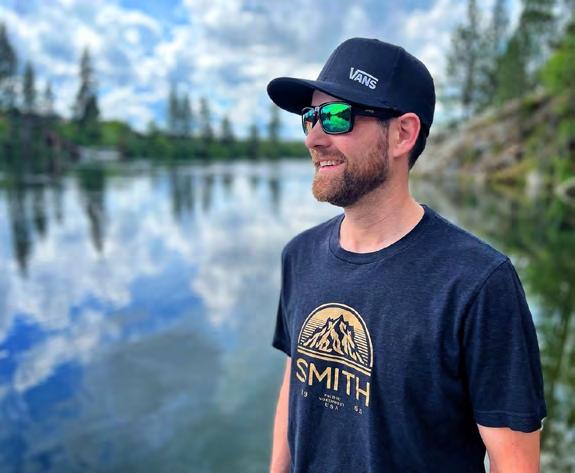
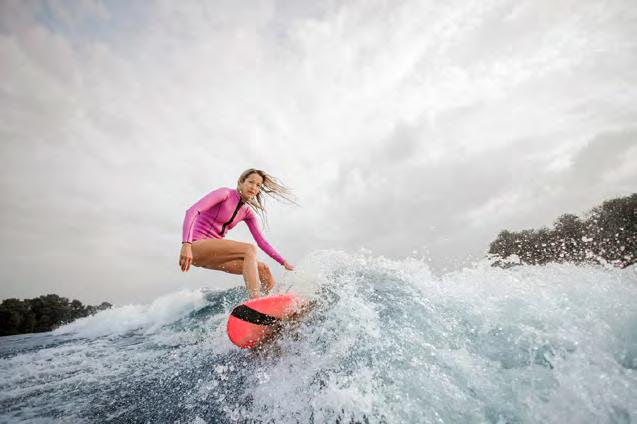


filled hills, I have been reminded of the incredible variety of terrain in our region. I’ve also been running the trails close to Spokane multiple nights a week, as I signed up for a tough trail half marathon (Race
During a long solo run in Riverside State Park, I met another female runner and stayed with her a few miles. We exchanged map technology and stories from other trail runs and races. We talked about the importance of carrying a first aid kit. (She packed clotting gauze to slow horrendous bleeding in case of a bad cut; I recently found myself


My last and hardest recent trail lesson was that, despite great plans, life doesn’t care if you’ve signed up for a race. The week of Race the Wolf, a virus and ear infection made it clear that I needed to respect the reasonable limits of my body. I dropped from the half marathon distance to the 5-mile race. It felt disappointing after all my training, but I still enjoyed the beauty of Schweitzer without wrecking my already weakened body. In this issue, you’ll find many suggestions on how to get out onto the trail and lakes in our region. From trail crew volunteering, to a guided fly-fishing experience, to how to safely mountain bike in grizzly bear country, we’ve gathered some of our best summer content to inspire your outdoor time. The learning you do on the trails, and about yourself, is up to you. Happy exploring. //






Shortly after getting off-route on a backcountry backpacking trip in northcentral Idaho, I heard about Topo Maps+, a backcountry navigation and mapping app developed by 45-year-old Spokanite Stephen Johnson. Talking with him, I learned that the Topo Maps+ app was built to be a simple navigation solution for people like me who would rather be spotting wildlife than plotting waypoints on a screen when they’re out in the wilderness. But it still has all of the features and layer options that make it a powerful app for special data and mapping needs. It’s effective for hiking, mountain biking, hunting, backpacking, back road driving, and even backcountry skiing and snowshoeing, thanks to a slopes layer that can help identify quality skiing and potential avalanche terrain.
Before developing Topo Maps+, Johnson, an avid hiker and backpacker, use to worry about getting lost on his adventures, and then he did. “I got lost up by Priest Lake at night in the snow on snowshoes after trying to cut off the trail. Totally lost. I’m not even sure to this day where we were,” Johnson recalls. He had read a lot about backcountry navigation at that point and used his compass to head due west and eventually made it back to a truck. “This was pre-iPhone and got me thinking about a GPS.” Not long after that, Johnson was at Apple's development conference when the new iPhone came out with a GPS built in. That’s when he knew he had to develop a mapping app.
Eventually, what would evolve into the Topo Maps+ app became Johnson’s full-time job in 2017. In addition to all of the usual on- and off-trail backcountry adventure sport uses of the app in disconnected environments with no cell service, Johnson says the app is also widely used by park rangers and wildland firefighters.
Topo Maps+ has an interactive map for the Apple Watch too. “It’s especially useful in the winter so you don’t have to dig out your phone. You can just navigate from the watch,” Johnson explains. While there are a lot of competitors out there, Topo Maps+ is one of the best options for those who primarily want a simple, functional navigation tool, plus it has the benefit of being a local company. “We focus on the maps and navigation,” says Johnson. “We have all of the trails, but navigation is our main focus. What we do really well is give people the tools to plan their own trips, on and off trail. We don’t just provide a canned trip.”

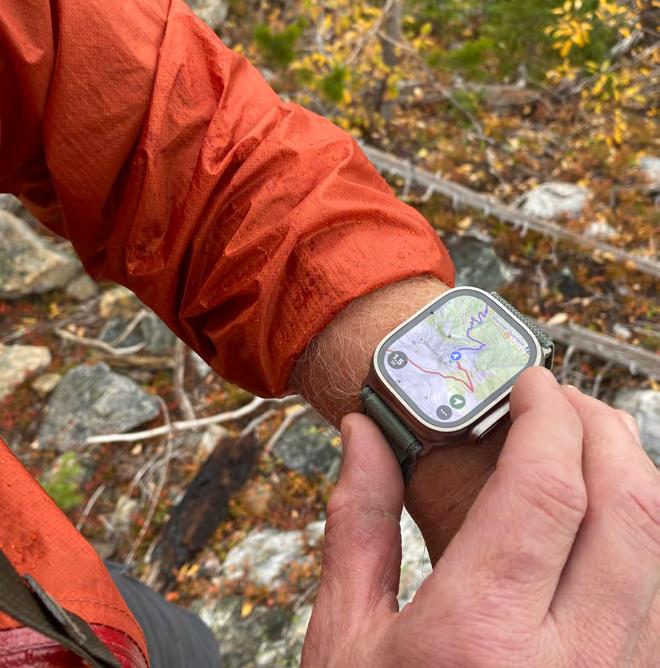
The app is also really good for people, like me, who don’t like using apps all that much.

“You can do the planning in the app and then print out these really great maps and use them with a compass while you’re out there and just use the phone as a backup,” he adds. This is always the best bet, since phones can and do die, but paper maps persist when kept dry.
Topo Maps+ has three different feature level tiers between $25 and $70 a year to choose from. Learn more at Topomaps.co.

(Derrick Knowles)
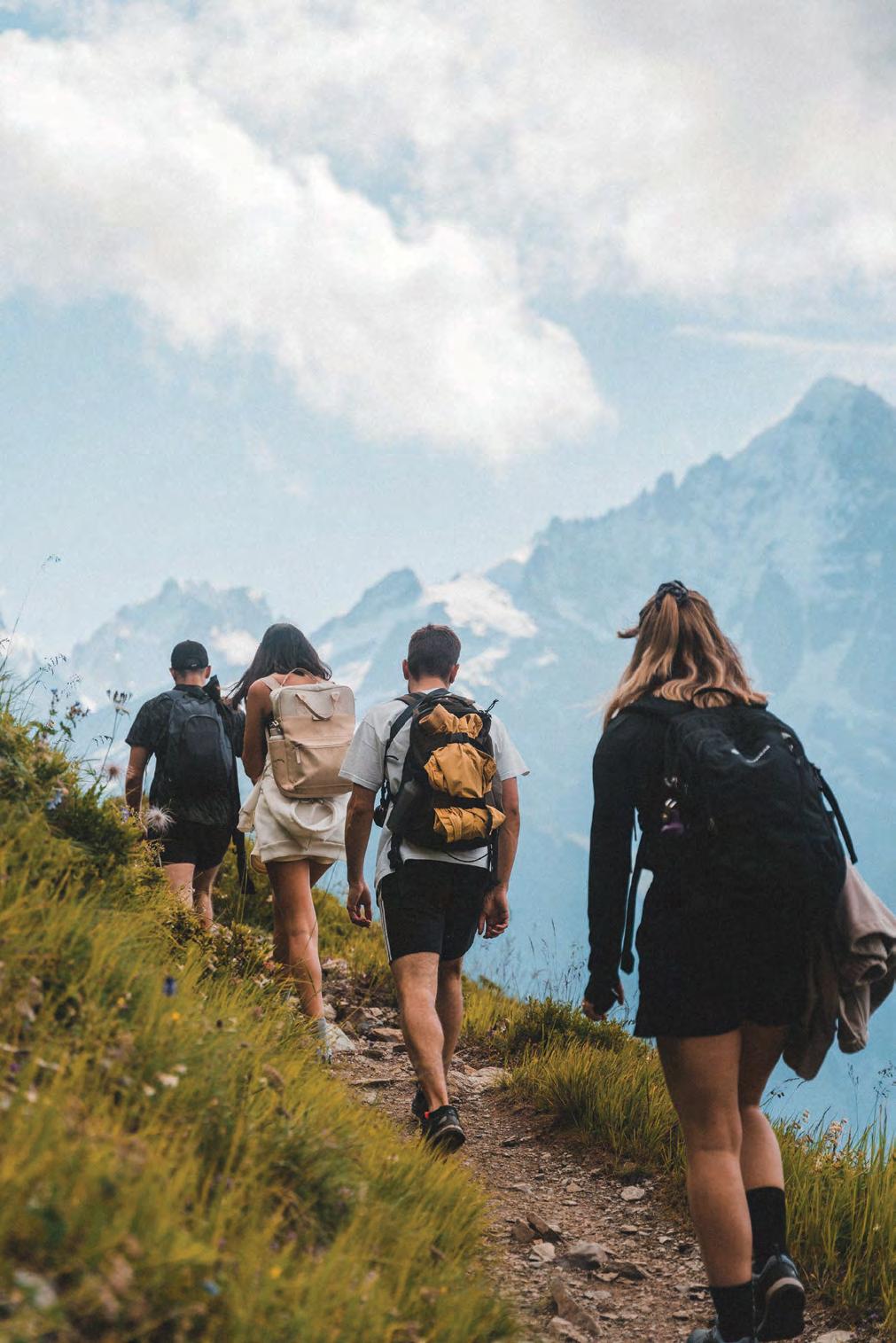
SPOKANE VALLEY, WASH.
In 2019, the Spokane Valley Farmers’ Market came to fruition and set roots at CenterPlace Regional Event Center. In the past four years, market organizers witnessed an abundance of family, friends, and neighbors come together to support local farms, artisan crafters, food trucks, musicians, and an array of small businesses that just keeps growing. But they have never had a year-round, permanent location.
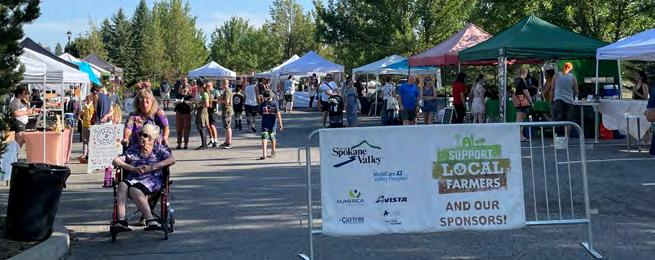
SANDPOINT, IDAHO
Starting at Sandpoint’s scenic City Beach Park and running out-and-back over the historic Long Bridge, this new race is a great option in place of the well-loved Sandpoint Scenic Half Marathon, which could no longer use their route and ended in 2022. The Long Bridge Half Marathon gives runners plenty of time to soak up the views of the stunning Cabinet and Selkirk mountains that frame Lake Pend Oreille, the body of water they’ll spend 3 miles running over. This race, set for Sunday, September 24, also includes a 10k distance
the site's important watershed, habitat, recreational, and educational uses. The next phase in campus development is to rehabilitate the site into a year-round farmers’ market and educational commercial kitchen.
Preliminary studies suggest the Scale House Market and Kitchen could host 249,000 visitors annually, including 18,000 who qualify for food assistance programs such as SNAP, Market Match, and Senior Farmers Market. This initial $750,000 will launch the project and will require two additional phases of funding, with a total of $2.3 million. SCD is looking to raise $1.5 million in matching funds, supported by an upcoming capital campaign and other fundraising efforts. The Scale House Market and Kitchen project truly paves the way for economic growth and opportunity through community engagement, sustainable small business viability, and food system resiliency in the greater Spokane Area. (Jon Jonckers)
donation of $20,000 to PNTS, a 501(c)(3) that connects organizations to further the protection, completion, and stewardship of the 32 national scenic and historic trails within the National Trails System. PNTS also advocates for trail preservation and stewardship and initiates youth outreach programs. After you pledge your time on Bell’s website at Bellsbeer.com/trails, you can enter to win a $1,000 REI gift card to stock up on gear for your next outdoor adventure. (OTO) NEW! 2023 THOR RIZE 18M Sale $99,990 Was $119,881
NEW! 2022 SPRINGDALE 220BHWE STOCK #75632 $256/MO*

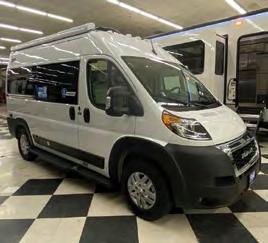

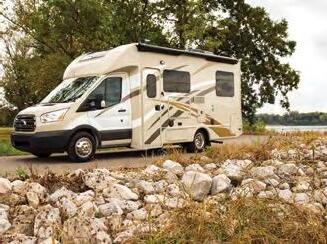


NOW $30,798 Was $38,680
Summer Sale! Save Thousands On 2022 Models! North Spokane - 509.244.5888 www.RnRRV.com Liberty Lake - 509.927.9000 *All offers OAC. 180 mo. @ 7.24% plus tax, title, license and 10% down. Subject to prior sale. Expires 8-31-23.



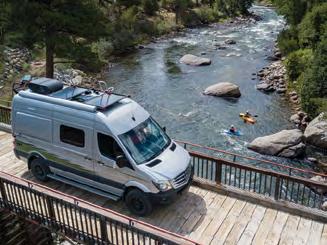
If you’ve heard of the Spokane Riverkeeper, it is likely you’ve heard of Jerry White, Jr., who has operated as the Executive Director of the organization since 2014. As Riverkeeper, White has worked to protect the health and rights of the Spokane River through education, collaboration, and litigation. He has worked on river issues such as salmon recovery with the first waterkeepers, the Upper Columbia Tribes, and strengthened those tribal relationships. With a dedicated board and passionate volunteers, the Spokane Riverkeeper has implemented valuable river cleanups and policies to protect our local watershed.
“When I arrived in this position, I recognized this was the highest purpose for my personal and professional life,” says White, who is now ready to pass the torch. “I feel that this is a natural time in the life of the organization to invite new energy and vision
into the community.” The organization will seek a new Riverkeeper this summer who will guide the future of the Spokane River and its tributaries as our region continues to grow. The vision remains a clean Spokane River that has healthy ecosystems and aquatic communities, is safe from pollution, and is accessible by and connected to the entire community for health and enjoyment.
White says he will continue to support the community as it meets its responsibility to the Spokane River, and will be out there swimming with trout and listening to the river. “I will grow into a slightly different kind of River supporter. Perhaps one who tries to hold the lantern for others. I want to thank the many friends, partners and associates who have cared for the river. I am humbled and proud to have worked with you, worked for you, and shared your frustrations, joys and successes.” (OTO)



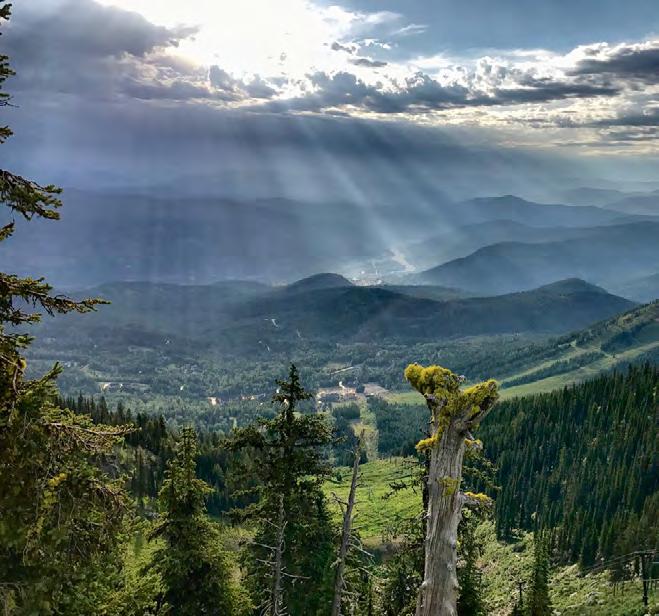
Ever notice that music seems to sound better with an epic view? On September 15-16 a new music festival in Rossland, B.C., will use the natural slopes and amphitheaterlike setting at the base of Red and Granite Mountains as a backdrop to a variety of Canadian, international, and local acts. “Between the Peaks” music festival will include two stages, food and drink vendors, craft beer and cider, and a familyfriendly atmosphere. Outside of the concert
experience, take advantage of the great mountain biking, hiking, and trail running opportunities that await on the trails just outside Rossland to make this a multiactivity weekend. Artists at Between the Peaks include The Strumbellas and Yukon Blonde and many more. For the full artist lineup, suggestions on where to stay, and to buy tickets, visit Redresort.com/betweenthepeaks. You can also sign up to volunteer at this first-ever event. (OTO)



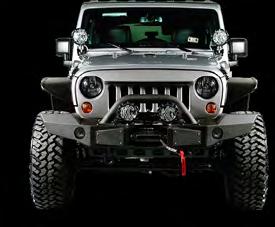


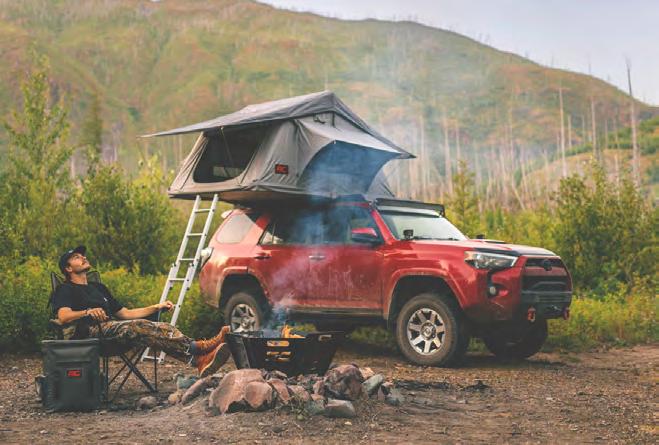

Schweitzer is an anomaly in several ways. It’s one of the few large Western U.S. ski areas that sits entirely on private land, rather than public Forest Service acres. It also features one of the best lake backdrops, second only to Tahoe resorts. With its first public chairlift opening in 1963, Schweitzer also has deep roots in the Inland Northwest and a loyal following of skiers, snowboarders, and mountain visitors and residents.
This past May, it was a surprise to many when news broke that Alterra Mountain Company, owner of the Ikon Pass and 17 other ski areas, announced its intention to purchase Schweitzer. The addition of the northern Idaho powder mecca will give Alterra five of the 20 largest ski areas in the United States. Nevertheless, Schweitzer fans shouldn’t expect any major changes for the upcoming season.
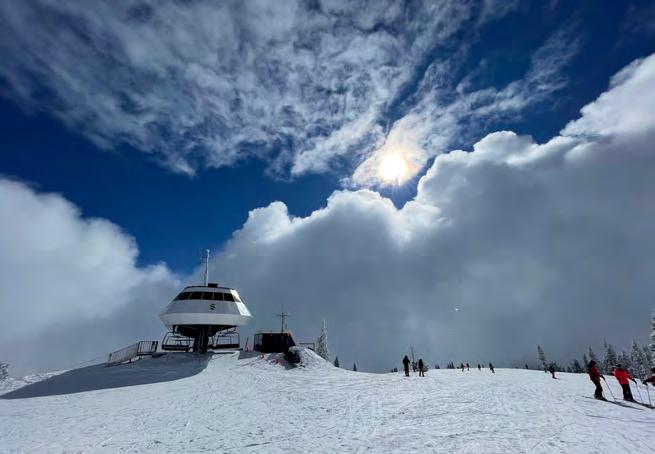


Despite the changing of hands, the resort’s daily operations and its 2023/24 winter season pass offerings are not expected to change, says Taylor Prather, Schweitzer's public relations officer. Also unchanged are plans for the first phase of Schweitzer Creek Village. That development, already underway, will include a new road and parking lot as well as a new high-speed, four-person
chairlift that will replace the Musical Chairs double chairlift. A new skier bridge across Schweitzer Creek is also moving forward. When fully completed, the Schweitzer Creek Village project will also include eight new runs, a total of three new lifts and new magic carpet, as well as additional rental and SnowSports School facilities and a base lodge.
In a press release on the Schweitzer website, CEO Tom Chasse reports, “For the last 20 years, I’ve watched Schweitzer evolve into a nationally-recognized destination, and our community grow more than many of us could’ve imagined. Some highlights include terrain expansion, the addition of 5 new chairlifts, the construction of Sky House and Humbird boutique hotel, as well as the recent opening of Cambium Spa.”
Chasse adds, “With room for growth and plans for future expansion and development, MKM’s decision to exit the mountain resort business puts Schweitzer in a favorable position to begin a new chapter with Alterra at the helm. I’m personally very excited to join a family of world-class destinations with passionate industry leaders who can help guide Schweitzer in becoming the best version of itself.”




(Jon


 Jonckers)
Jonckers)


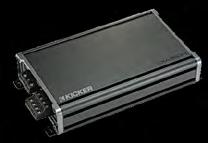


MEAD, WASH.
Did you know that Mount Spokane is Washington State’s largest state park? With four seasons of recreation, including hiking, mountain biking, Nordic and downhill skiing, horseback riding, snowshoeing, foraging, and more, this popular area is loved by recreators all over the region. And now, the Friends of Mount Spokane and Washington State Parks are delighted to announce a brand-new four-season trail map to help you plan your next adventure. This full-color map, printed on waterproof
paper, features summer trails on one side and winter trails on the other. Sponsored by area businesses and produced by state parks staff and members of the Friends of Mount Spokane board, the map is an invaluable resource for those hoping to find new adventures in the area. Maps are currently available at Fitness Fanatics, The Bike Hub, Rambleraven, Shred Sports, local Washington State Parks offices, and online at InlandNWLand.org. Prices vary.
(Carol
 Corbin)
Corbin)
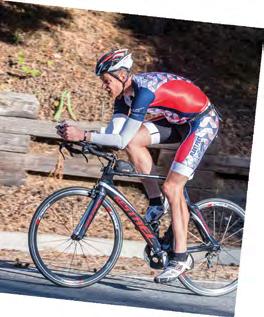
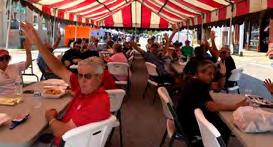
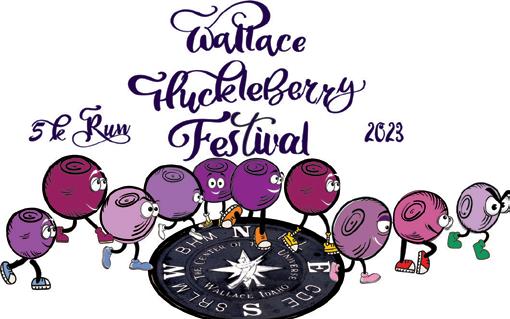
A great way to get out on the stunning Priest River is through the upcoming PORPA Sprints, put on by the Pend Oreille Rowing and Paddling Association (PORPA). This second-annual event is a day full of non-motorized races on the river, including watercraft demos and a free session from local Kalispel tribe members on the historical relationship of the Kalispel people with the Pend Oreille River. Youth can participate in the paddling races for free, which can include stand-up paddleboards, kayaks, canoes, rowing shells, water bikes, or even boats made out of cardboard. Parking is free and camping is available on location at the Priest River Recreation Area
(Mudhole). This is an event for experienced and novice racers alike, so you can take the whole family and spend a fun day paddling and spectating. After racing, learn about and try sculling boats and paddle sports boats at the free watercraft demo in the afternoon. Visit Porpa.org for more information, a preliminary race schedule, and to register. (OTO)
SWIM (OR PADDLE) THE SNAKE RIVER ON AUG 12

The Snake River, located in the southeast corner of Washington State, is a wide, slow-moving body of water framed by steep desert hills that makes it a unique place to recreate. On August 12, join other swimmers and paddlers in the

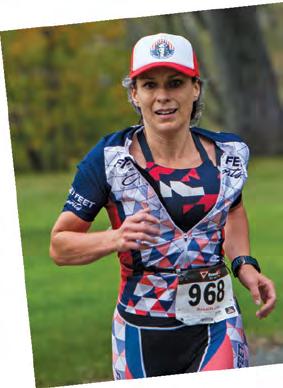
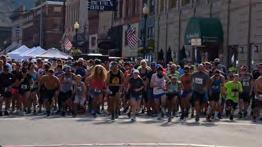
Swim the Snake event at Lyons Ferry to enjoy an open swim or compete in a team paddle event. The open swim crosses the channel from Lyons Ferry State Park to Lyons Ferry Marina. All swimmers and paddlers receive a numbered swimming cap or wristband. Volunteers help direct water traffic and keep participants away from potential hazards. Swimmers must be at least 10 years old, of good health, and of intermediate swim level or higher. Swimmers under age 15 must each be accompanied by an adult swimmer. Bring a parking pass from Washington State Parks (a day or annual Discover Pass) and enjoy this scenic water feature! For detailed course directions, and to complete the mandatory pre-registration ($25),
visit Swimthesnakedotorg.wordpress.com. (OTO)
 By James P. Johnson
By James P. Johnson

If you’re physically fit, you can hike the three highest mountains of Eastern Washington. I’ve hiked them multiple times and have also done the 50 highest in order to complete the guide book “Hiking the 50 Highest Mountains of Eastern Washington,” which came out in 2003. It has since gone out of print, but you can rely on the directions if you have a copy. Otherwise, Googling each mountain will give several websites that offer information. All three can be hiked without need of technical climbing skills. They’re

a good distance from population centers, which means a long drive depending where you live, but your bonus is uncrowded trails. More often than not, I don’t see another hiker.
#1 - Gypsy Peak / 7,309 ft. / 7 miles of hiking with 1,750 ft. elevation gain: One of my favorites of the top 50, I once got a scare while taking in the view at Gypsy’s summit. With few clouds in the sky, a deafening thunderclap struck. I dropped my
at high elevation, which means lots of views of pretty country. Within the Salmo-Priest Wilderness in the very corner of northeast Washington, Gypsy is but three miles south of the Canadian border. An important note—a yearly road closure on August 15th for wildlife consideration means you can’t access the trailhead unless you add 6.5 miles to your hike each way by walking the closed section or using an even more distant, alternative trailhead.
Washington guy, my lack of knowledge about the highest mountains on our side of the state motivated me to research, climb and write the top 50 guide.

Also located close to the Canadian border, if you made a pile of rocks at the summit, you could transform it into the highest mountain in Eastern Washington, as it’s only 1 foot lower than Gypsy Peak, which is visible from Abercrombie by looking east across the Pend Oreille River valley.

With significant prominence (the highest point by far for miles around), the rounded summit delightfully makes hiking less steep as you approach the top. It’s also the rare peak that has a staffed fire lookout.
Several years ago, I pushed my turnaround time by about 15 minutes in order to take in the gorgeous view at the summit. Descending, I couldn’t find the trail in the dark as I neared the trailhead. I spent a lot of time feeling my way through the woods.
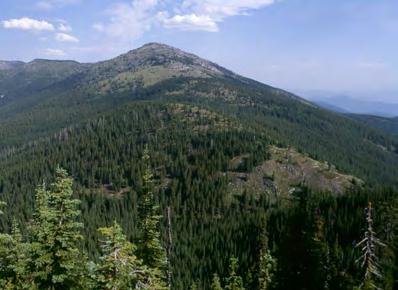
AFTER A TWO-YEAR HIATUS, 24-hour mountain bike racing returns to Riverside State Park in Spokane. The original organizers of the legendary 24 Hours Round the Clock event, Wendy Zupan and Gino Lisiecki, ran that race from 1999 to 2019. Then, quite magically, they called it quits right before the whole world ground to a halt for the pandemic, thus avoiding the economic ruination from which many large cycling events never returned. But the 24-hour race here in Spokane had become a regional institution, so conversations began almost immediately about who would take over this event even while our very survival was in question. A few concerned riders stepped up to the plate, and the 24 Hours of Riverside was back for Memorial Day weekend 2022. I was at a bikepacking race in the Oregon Coast Range that weekend, so I was unable to attend the triumphant return of this perfect mix of competition, party, and family weekend to the local race scene. But, this year my event calendar accommodated this race perfectly, and I was able to attend my fourth ever 24-hour race.
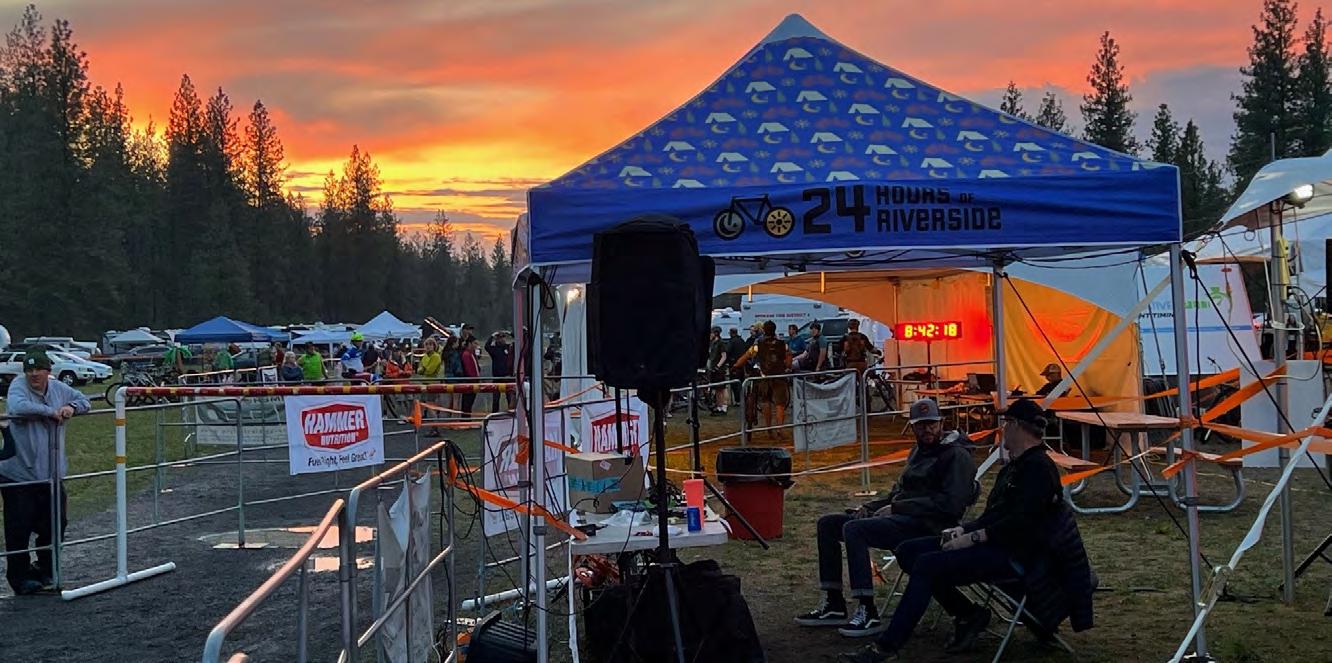
If Spokane’s Midnight Century was my gateway drug into gravel riding, it was the 24-hour mountain bike race in Riverside that sparked my fascination with night riding. I had been working mostly at night since moving to Spokane in 2012. My friend Dave, co-owner of Acceleration Physical Therapy, drafted me onto his 10-person team, and I very naturally gravitated toward the night laps. The race had been going for more than
8 hours when I lined up at the finish line tent to wait for the previous rider on our team to cross the line, at which point we would fumble with the Velcro wrist band time chip for a brief eternity to get that thing from the other rider’s wrist onto mine. I then pedaled off into a literal sunset.
The sunset lap is arguably the second best lap of the whole race, dawn being the very best. You find yourself riding straight into an explosion of colors framed by canopies, tents, and RVs as well as the iconic Riverside pines. Riders and their friends and families lining the course are still enthusiastic enough at this point to give you a little cheer as you zoom down the 7 Mile Airstrip before hanging a hard left into your first steep little climb. As the race course, which is a little different every year, snakes off into the woods in a disorienting fashion, you are left with fewer and fewer clues as to where you could be as the twilight colors of the sky breaking through the trees taper into darkness.
At this point, you’re riding into “the tunnel of gloom,” in which the only things you can see are the trail immediately in front of you and the vegetation to the left and the right. Periodically, lights and blinkies from other riders break through the trees, making you feel like you’re not alone. Occasionally, some high school team riders go flying by, calling out “on your left” as they speed off into the night. The views from atop the high points of the course are my personal favorite, seeing headlights dance through the trees far below while stars and perhaps a sliver of
moon shine above. It’s moments like this that I realize, “oh yeah, I’m riding around in a universe right now,” and an otherwise fun bike ride takes on the mystery of intergalactic travel. I think that’s what hooked me, and I experience that giddy wonderment every time.

I hardly knew a soul in the Spokane bike community when I showed up for my first 24-hour race in 2016. At one point, I was waiting for my turn at some absurd hour of the night when one of the people waiting by the finish line tent began to look familiar. It was Angela Luckey, whom I had met on a bike trip down the Olympic Peninsula in 2002. Her son, Evan, had ridden a lap that day. Several years later, he would embark on his first midnight lap at the ripe old age of 14, and was quite understandably a little terrified about heading out into the inky black darkness of night. I know adults who are nervous about this, and even I get a little anxiety if I’m dropping into the Hiawatha at midnight. He came back saying, “Mom, this is the coolest thing I’ve ever done!”
This year, Angela and I met up sometime after midnight at the finish line tent in some bizarre Déjà
vu experience. Evan was chomping at the bit for his next lap. I was beginning my first. Chris White of Mt. Spokane finished his lap and sent me on my way for 4 straight laps. I never saw Evan out there (there was no catching him), but I ran into a lot of other friends on the course, reminding me why I am so utterly stoked that 24-hour racing is back in Spokane. To enter, volunteer, or hang out at next year’s race, check out 24hoursofriverside.com. //
Justin Short has a BA in English from California University of Pennsylvania and is basically a self-taught trucker. He has been doing high intensity fish n’ chips intervals in preparation for a bikepacking trip in England with his wife this summer.
• Spokane County Library District just created an excellent opportunity to pair a visit to a popular trail system with a relaxing summer afternoon spent reading in a hammock. The new Parkside Books at Liberty Lake Regional Park is located within the Liberty Lake business office near the entrance to the park and is open daily from 9 a.m.-6 p.m. Book check-out is on the honor system, so no library card is necessary. Check out a book to add to your backpack and head for the lakeshore, cedar grove, or all the way to Mica Peak! Then find a cozy spot to read during the heat of the day. Return the book when you're done with your adventure, or drop it off at any Spokane County Library branch.
• Join the Inland Northwest Land Conservancy for a fun and informative bug walk at Saltese Flats on July 14. Enjoy the sights and sounds of the newly restored wetlands while learning about the insects that are drawn to this unique habitat where the attention is generally focused on the birds! (Inlandnwland.org)
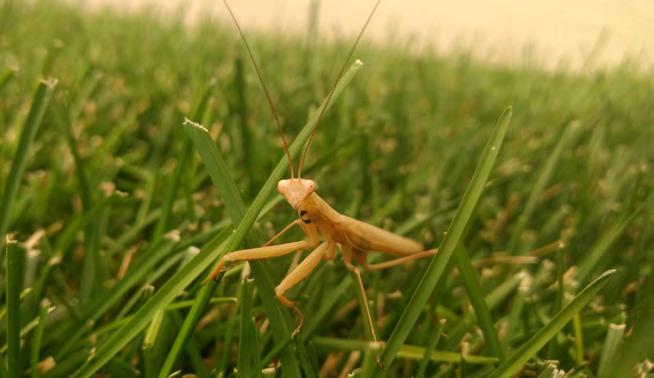
• Friends of Scotchman Peaks Wilderness has a busy July lineup of fun events for a variety of interests. Offerings range from fun hikes with kids, foraging, to nature drawing. Or plan your own trip to the namesake peak on a weekend and consider signing up for the Ambassador Program to assist in offering mountain goat safety education to other visitors (Scotchmanpeaks.org).
• Okanogan Highlands Alliance is hosting its annual fundraising long-distance running event, Get Lost!, at Lost Lake on July 9. The event options include 3-, 7-, and 14-mile distances. If volunteering is more your style, the group will also be doing some preparatory trailwork on nearby Strawberry Mountain Trail the day before the race. (Okanoganhighlands.org)
• Pend Oreille Rowing and Paddling Association, in conjunction with the U.S.
Army Corps of Engineers, is hosting the PORPA sprint races on August 12. The day celebrates non-motorized watercraft and will be held at the Priest River Recreation Area. There will be races for all ages and abilities, with a free kids’ division! (Porpa.org)
• July typically marks the beginning of wildfire season. Consider taking a closer look at lookat wildfire preparedness in your own backyard with a Firewise Risk Assessment, free for Spokane County residents through the Spokane Conservation District (Spokanecd.org/ departments/forestry-department/firewise/). Those located outside Spokane County should check with their area's Department of Natural Resources or other agencies for similar opportunities.
• July and August are prime time for summer backpacking. Raise the bar for your summer backpacking trips by joining a backpack-style stewardship project! Idaho Trails Association has trips to the Seven Devils and along the Coeur d'Alene River in July and to Hughes Fork by Priest Lake in August (Idahotrailsassociation. org). Washington Trails Association crews will be working in the heart of the Salmo Priest Wilderness as well as in the Pasayten Wilderness (Wta.org). Pacific Northwest Trail Association will be working along the Kettle Crest in addition to the Salmo Priest and the Pasayten (Pnt.org). Wallowa Mountains Hells Canyon Trails Association will be hosting projects in the Wallowas and the Elkhorn Mountains (Wmhcta.org). //
Holly Weiler is a long-time contributor to Out There Outdoors. In between leading trailwork projects this summer, look for her lounging in a hammock with a good book somewhere along the Liberty Lake Trail.
It's not often I have an opportunity to promote a trail so new that it doesn't have a name yet, but, due to the efforts of many volunteers working with crew leaders from Washington Trails Association, the new, westside connection trail out of Etter Ranch is now ready to receive visitors!

It is possible to visit this trail from any of the three trailheads for Antoine Peak Conservation Area, but the shortest access for the new trail is located at the Trentwood Trailhead for Etter Ranch. Begin by hiking up the first portion of the Arrowleaf Trail. As Arrowleaf exits the first section of forest and enters the grasslands, watch for the junction with Lost Apple Trail. Descend Lost Apple to its namesake apple orchard and hike west, crossing an old farm road. Pick up the new trail on the hillside just opposite the orchard and begin to climb. Unlike Arrowleaf, which stays mainly tucked in the trees, the upper reaches of this new trail spend a lot of time on the large, open grassy hillside overlooking the Spokane Valley. The trail connects to the Emerald Necklace Trail that encircles Antoine Peak, creating the opportunity to extend the hike in several ways, including adding on the summit or traveling east on the Emerald Necklace to the intersection with the top of the Arrowleaf Trail to create an excellent loop route. The trail is also lovely as a shorter out-and-back hike. This Spokane County Park is open dawn to dusk and is open to hiking, mountain biking, and equestrian use. Dogs are permitted on leash.
Map: The trail is so new it is not yet reflected in the Conservation Area map, but the rest of the trail system at Antoine Peak is available at Spokanecounty.org.
•
•




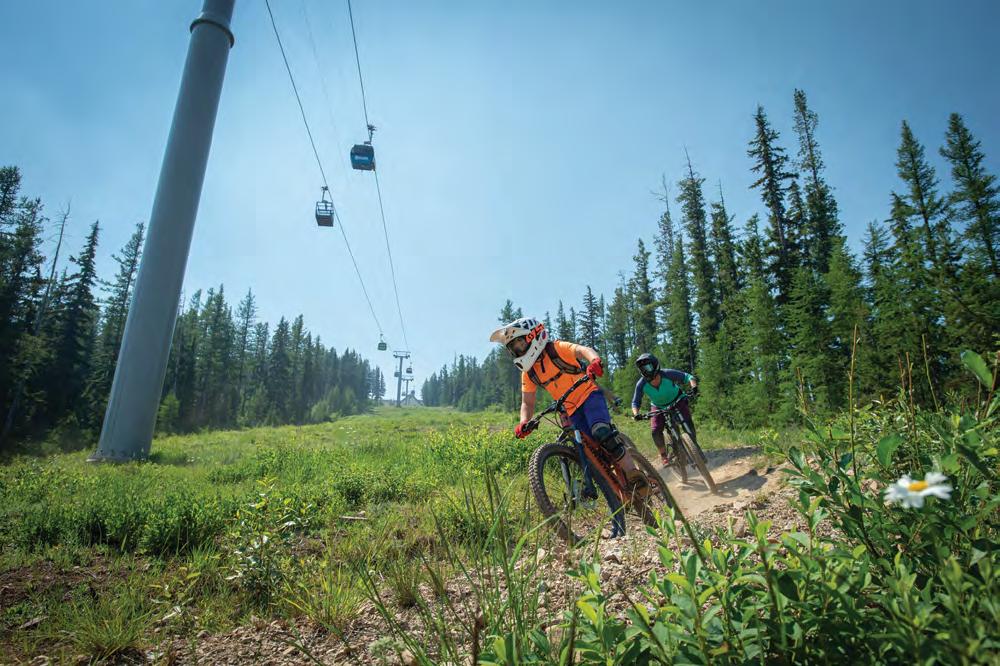




From wildlife encounters to bathroom emergencies, running and embarrassment sometimes go hand in hand. Check out readers’ most awkward running moments below— and be thankful they haven’t happened to

I WAS SO STOKED to run St. George’s downhill marathon one October. The buses shlepped us to the top of the canyons at an ungodly hour, leaving no time for pre-race restroom rituals. I knew I’d need to find a porta potty along the route, timed perfectly to shave as little time off my race as possible. Six miles in, I found it: the perfect porta potty. Except it wasn’t. There wasn’t any toilet paper in this one, and no signs that there ever was any. Anywho. Marathoners make sacrifices, so I left a piece of my wardrobe behind and ran the rest of the race commando. Gotta say—pretty freeing,
tripped and fell (HARD), did a somersault, and landed on the ground with a THUD, right in front of my husband’s coworker and a mom with babies in a stroller.
around Riverfront Park a lot. It was dusk, and I was running underneath the bridge by what is now Osprey restaurant. I hear these awful screaming noises, and see these two scrawny, tiny little weasel-like animals—mink—that are clearly in a battle to the death. I am terrified because they’re right on the path, and I’ve got nowhere to go. The right side is the river and the left side is rocks. Then the mink who is the aggressor turns toward me and starts running directly for my ankles and feet. I had to run hurdles like I did in middle school. I finally think I’m good, and then I hear this squeaking, huffing noise. The mink is chasing me—not a little bit chasing me, but full on. It’s not until a bike goes by that it decided to turn
—Anonymous
I WENT FOR A NICE 8-mile run on Thanksgiving Day in Buffalo, NY. Everything was closed and at around 5 miles in I ended up pooping outside of the university’s campus, right by the sign.
—Anonymous
I WAS ON A RUN through a neighborhood in Hayden and “it” came on fast. I had to make a decision. I wasn’t close to any businesses or gas stations. I wasn’t above going in someone’s bushes, but that was not preferable. So . . . I knocked on the door of a house that had their garage open. I was young, handsome, and sweaty, but I knew my request would still be a challenge. A middle-aged woman opened the door, and I made my case to use her bathroom. She was very hesitant, but the urgency was made quite clear on my face. She obliged. I used her bathroom, turned on the fan as I left, and gave her as many thanks as I could without paying her. I ran home having left my pride and bowels somewhere in Hayden.
—Local Educator
WHEN I WAS COACHING cross-country, I was out running with the kids and we stopped at a gate to do some stretching. While stretching, a bee flew up my shorts and stung me near my crotch. We had to run back to the school. By the time I got back, I was swollen from the neck down to my feet. I had to go to the ER to get a steroid shot and I ended up filing a L&I claim, my only work injury in 40 years of working.
—Shirley
Sarah Hauge is a writer and editor who lives in Spokane with her husband and two kids. She disintegrates in heat, so this summer she’s attempting to turn herself back into an early morning runner. Sarah is running the BRRC’s Sundae Sunday 10-Miler this fall.
SUN, GLORIOUS SUN, finally buoys days above the 45th parallel. While it’s tempting to expose as much skin as possible to the daystar, dermatologists such as Spokane’s Dr. Peter Boothman, M.D., of Clinic 5C / OPTIM Clinic, note that melanoma is on the rise. “Incidents of melanoma have doubled in the 30 years between 1982 and 2001,” says Boothman, an Eastern Washington native. “While the official recommendation is to wear SPF 30 sunscreen when outside, I recommend SPF 50.”



The FDA approves three sunscreen types. Physical or mineral sunscreens reflect the sun. Chemical sunscreens prevent skin from absorbing damaging rays (ingredients absorb instead). Combination screens are a blend of chemical and physical blockers.

According to the American Academy of Dermatology Association, “Millions of people are diagnosed with a common type of skin cancer, basal cell carcinoma, each year.” It can look like a pimple or a sore or even an




age spot. Four common skin cancers include basal cell carcinoma, squamous cell carcinoma, Markel cell cancer, and melanoma.
“Early signs of skin cancer include seeing a spot, new or changing,” says Boothman. “I tell people to use the ABCDE’s. A, asymmetrical jagged border growing unevenly; B, border growing irregularly; C, colors (different colors) on the same lesion; D, the diameter is bigger than a pencil eraser; and E, evolution of a rapidly changing, growing, bleeding or painful and red sore like a pimple that doesn’t heal.”
Experts explain that everyone should selfcheck monthly. If they discover a dark spot or growth, or a sore that won’t heal, they should make a dermatological appointment. Additionally, sores that appear in a scar or dark line under or around finger and toe nails should be examined by a physician. Even places that receive little sun such as under a swimsuit as well as feet bottoms should be included in a self-exam. People often forget that their scalp is susceptible to the sun’s power—hair stylists can help check for scalp irregularities.

Dermatologists’ skin protection rules include applying sunscreen to dry skin every two hours if outside. Reapply after swimming or sweating. Use broad-spectrum and
water-resistant sunscreen and lip sunscreen. Boothman emphasizes that largebrimmed hats and “sun-protective clothing is even better than sunscreen.” Even though some social media sites suggest that humans need more vitamin D from the sun, Boothman says, “The need for vitamin D sun exposure is overstated. Excellent supplements are available should your physician suggest additional vitamin D.”
When choosing sunscreen, organizations such as Ocean Society encourage reef-safe sunscreens to avoid bleaching coral reefs. “The scale of the problem is significant,” notes Ocean Society’s website. “Scientists estimate that between 6,000 and 14,000 tons of sunscreen—the equivalent of 25 to 60 million bottles—wash off of snorkelers and swimmers into coral reef environments each year.”
The group suggests using lotions without the oxybenzone and octinoxate found in some chemical sunscreens. They consider reef-safe sunscreen ingredients to include non-micronized zinc oxide and titanium dioxide. Both Hawaii and Key West, Fla., have banned oxybenzone and octinoxate sunscreens. As you recreate, consider what’s best for your skin and our environment. //
Trail mix and granola bars remain a favorite among outdoor enthusiasts for fuel and convenience. There are a ton of great options on the market, but I prefer to make my own so I know exactly what goes into them, without preservatives. I love both trail mix and granola bars and decided it just made sense to combine them. I have a good base recipe I like (included here), but tend to swap out the ingredients for what I have on hand or if sudden inspiration hits me. My recent Thai-inspired twist turned out amazing.
Trail Mix Bars Base Recipe: 1 c rolled oats, ½ c chopped nuts, ½ c seeds, 1c chopped dried fruit, ½ c chocolate chips, ½ c warmed nut butter, ½ c shredded unsweetened coconut, ½ c sticky sweetener (such as maple syrup), ¼ tsp spices, ¼ tsp salt. Mix together and press into 8x8 inch baking pan and bake at 350 degrees for about 15-20 min. Allow to cool completely, then refrigerate for at least an hour before cutting.
Thai-inspired Trail Mix Bars: 1 c rolled oats, ½ c Trader Joe’s Thai lime and chili cashews, ½ c pumpkin seeds, ½ c chopped medjool dates, ½ c dried mango, ½ c warmed peanut butter, ½ c shredded unsweetened coconut, ½ c maple syrup, and the zest of one lime. Mix together and press into 8x8 inch baking pan and bake at 350 degrees for about 15-20 min. Allow to cool completely, then refrigerate for at least an hour before cutting.
With so many different kinds of nuts, dried fruit, and spices, the flavor combinations for trail mix bars are endless. Try some Indian spices, maybe some golden raisins, pistachios and white chocolate, or just look in your cupboards to see what needs to be used up.
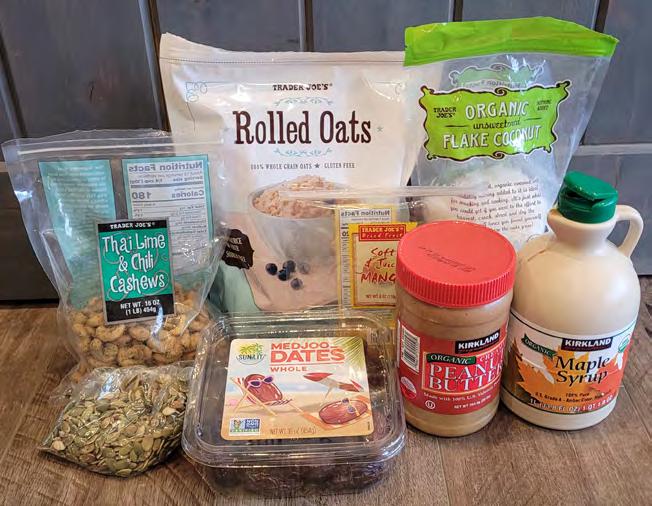 (Alana Livingston)
(Alana Livingston)
There’s nothing like fresh fruits and veggies on a backpacking or bikepacking trip! This recipe is a great option for the first night of any outing. (The fresh stuff won’t keep much longer.)
Ingredients:
Mung bean sprouts
Sweet red, orange, or yellow pepper
Carrot
Cucumber
Green onion
Cilantro

Peanut sauce

Crushed peanuts
Ramen (dried, prepackaged)
1 egg (optional)
Avocado (optional)
The night before your trip, thinly slice pepper, cucumber, and carrot. Chop green onion. Put all veggies, cilantro, and peanuts in an airtight food storage bag or container. Pour 3-4 T of peanut sauce in a small bottle. (Available at Rambleraven, REI, and other gear shops, they seal tightly, so your sleeping bag won’t taste like peanuts.) If you’d like to include an egg, crack it into another small bottle. Don’t forget to pack the packet of ramen as well. In camp, boil water and cook the ramen according to package directions, but leave out the spice packet. In the last minute of cook time, poor in the egg and stir to cook thoroughly. Drain (and drink–no waste!) excess water. Carefully mix veggies in their bag and add them liberally to the noodles. Top with peanut sauce and freshly-sliced avocado, then enjoy! (Carol Corbin)
There are many skills and habits other runners possess that I completely lack. The ability to drink water from a tiny paper cup, for instance, while keeping a normal pace in the middle of a race. The capacity to wake up early on a hot day and get a run in first thing. And then there’s my lagging development when it comes to pre-planning long run fuel. The number of times I’ve found myself on a long run with nothing to sustain me but the contents of my water bottle, or made do with a kids’-size granola bar or a couple of fruit snacks, are too many to count.
When it comes to that last one—planning on-the-go fuel—things have begun looking up. Feeling that enough was enough, I checked out what my favorite local superstore had to offer and chose a few packs of Honey Stinger Energy Chews. I’m not a fan of most gummies or gels, but these taste good, don’t irritate my stomach, and I’ve felt a noticeable boost when I take a couple every few miles throughout long runs. They are not revolutionary discoveries—but there’s a surprise (anecdotal) benefit of this brand in particular: with honey as one of their top ingredients, these chews also soothe my often allergy-inflamed throat and stave off tickles and scratchiness not just on my runs, but in everyday life. Recently, I’ve found myself eating one or two Honey Stingers instead of having a throat lozenge. With seasonal allergies that seem to worsen each year, this is an amazing side benefit.
Honey Stinger Energy Chews come in a variety of flavors and in caffeinated options. The brand also makes other athletic fuel products including gels and grab-and-go waffles.


 (Sarah Hauge)
(Sarah Hauge)

I hike anywhere from 14 to 24 miles a week, and I have learned that my body craves protein. Though, when you are lactose intolerant, allergic to wheat, and have a severe allergic reaction to almonds, it's really quite hard to find a snack that tastes good and can carry you to the end of a long walk.
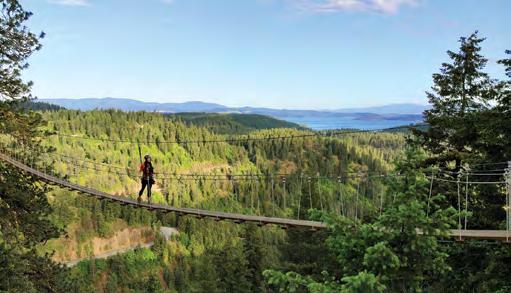
Enter the Munk Pack protein cookie. Munk Pack's low sugar, gluten free and plant-based products make it easy and enjoyable to incorporate well-balanced nutrition on the go into anyone’s lifestyle.
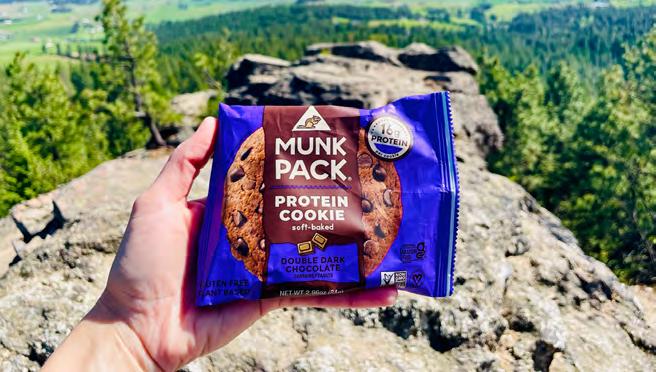
Each protein cookie is made without eggs, dairy, soy, gluten, and sugar alcohols. Packed with 16 g of protein, 36 g of carbs, 16 g of sugar and 320 calories, the Munk Pack Double Chocolate Chip protein cookie is my favorite. I buy locally at REI, where you earn a 10% off bulk discount on 10 or more power food products. Munk Pack also carries Keto Granola Bars and Keto Nut Seed Bars.

What makes Munk Pack extra tasty is its giving back program. Grant funds support the Yosemite Conservancy, the philanthropic organization dedicated exclusively to Yosemite National Park that funds the research of contaminants in Yosemite's waters. When I was about 15 years old, I had the opportunity to climb up to the cables of Half Dome (at a time when there were limited restrictions and no permits required). I will choose to remember fond memories of that trip every time I snag one of these Munk Pack protein cookies!

 (Angie Funnell)
(Angie Funnell)
 By Ammi Midstokke
By Ammi Midstokke
BEFORE WE HAD RED BULL sponsorship and Title IX, before women wore pants or even had the vote, Gertrude Bell was riding camels through Arabia and giving T.H. Lawrence pointers. And when she wasn’t doing that, she was schlepping frozen ropes up the Alps. In her underwear (because she put a skirt back on as soon as she descended). Between cigarette puffs, she explained the geographical, archeological, and political significance of what is modern day Iraq to the likes of Winston Churchill.
There is a kind of pioneering that our planet no longer supports. Our lands have been discovered. Our lines drawn in the sand, across the seas, and in no-fly zones. Our frontiers are no longer terrestrial. There is, one might argue, a kind of badassery that is, if not already having done so, going extinct.
If you’re not sure about this, read some old whaling books. Or “Endurance.” What softness has overtaken the human body and mind that we now succumb to fear and frostbite? And how, when we were far leaner back then, did we float so well?
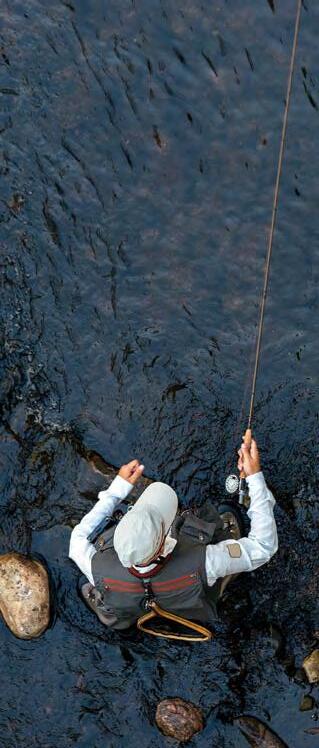
The articles we read today about the incredible achievements of our athletes and outdoors people are inspirational and edgy, not to mention well-photographed. There are people out there doing arguably insane things (I’m looking at you, Alex Honnold, Courtney Dauwalter). They drink electrolytes, wear moisture-wicking tops, get massages, and probably don’t incessantly smoke hand-rolled cigarettes.
To be humbled by the power of those who pioneered before us, one must merely pick up the biography of one of them. I suggest starting with Ms. Gertrude Bell.
Born into a wealthy U.K. family who had
hopes for her advantageous marriage, Ms. Bell pursued the usual fare of society (poetry, French, needlework) and then demanded an education. This is, of course, dangerous, for it exposed her to a world of possibilities, and she had the cash to pursue them. Which she promptly did when her parents forced her to break off an engagement to someone beneath her status.
As any of us knows, the mountains or the desert are a fine place to heal from heartache. Traveling to the Alps as a rookie and setting at least 10 new routes and first ascents, having the Gertrudspitze subsequently named after her, and spending 48 hours dangling on a rope in a snow and rain storm with her two guides on the Finsteraahorn in the Bernese Alps — this is what Gertrude did for fun on summer holidays and whatnot in the years 1899 to 1905. She was 31 on her first climb.

Having grown bored with those neardeath experiences, she traveled to Persia, learned Arabian, translated Sufi poetry, and decided to become an archeologist, as she was captivated by the ruins in Arabia. She bought camels, had dinner with Bedouins and sheiks, made maps, supported Britain in WWI as a rather sand-covered spy, and never once in her diaries complains about sores despite thousands of miles in a saddle. Which she refused to ride sideways, having a tailor make her a split skirt because she was still somehow ever-the-lady.
Her athletic endeavors were just an afterthought, a way for her to see and experience the things she desired. She wanted to understand the people, and thus needed to learn their languages and then their problems. In her untethered pursuit of a goal (like a fivemonth camel-lap through violent deserts and mountains, sand storms, bitter winters,
Druze and Bedouin raids, thieves, threats), she consumed information and dedicated herself to learning a horizon of things inconceivable to the modern mind. And she brought her body along for the windswept, sand-scraped, snow-battered ride.
Reading her accounts of conquests and discoveries, one feels not only a sense of awe, but of grief. These places and these means of discovering them are no longer available to us. There are routes to attempt and peaks to bag and miles to run, but this world is too docile for the likes of those former heroes. And while we may be disheartened to think of that reality, we can also be inspired to explore our own limitations and capabilities. The landscape of the frontier has seemingly changed. There are places and ways in which we can no longer voyage. The questions these histories incite are of what other possible ways we can expand ourselves as individuals to change the lens through which we experience the world. What new frontiers would become available to us then? If we spoke more languages, understood more cultures, deciphered ancient poems? (This author suspects the trend in psilocybin consumption may be a cognitive, if not spiritual, attempt at just this conundrum of frontiers.)
What is gained then from such perusal of pages is not just a marveling at the strength and fortitude of the human body, but also at the incredible power of curiosity and learning.
Maybe we can do far, far more than we believe. And maybe skirts are more functional than we think. //


Ammi Midstokke’s new book “All the Things” is available at local bookstores. She is a regular contributor to Out There, and you can find all of her past articles at Outthereoutdoors.com.


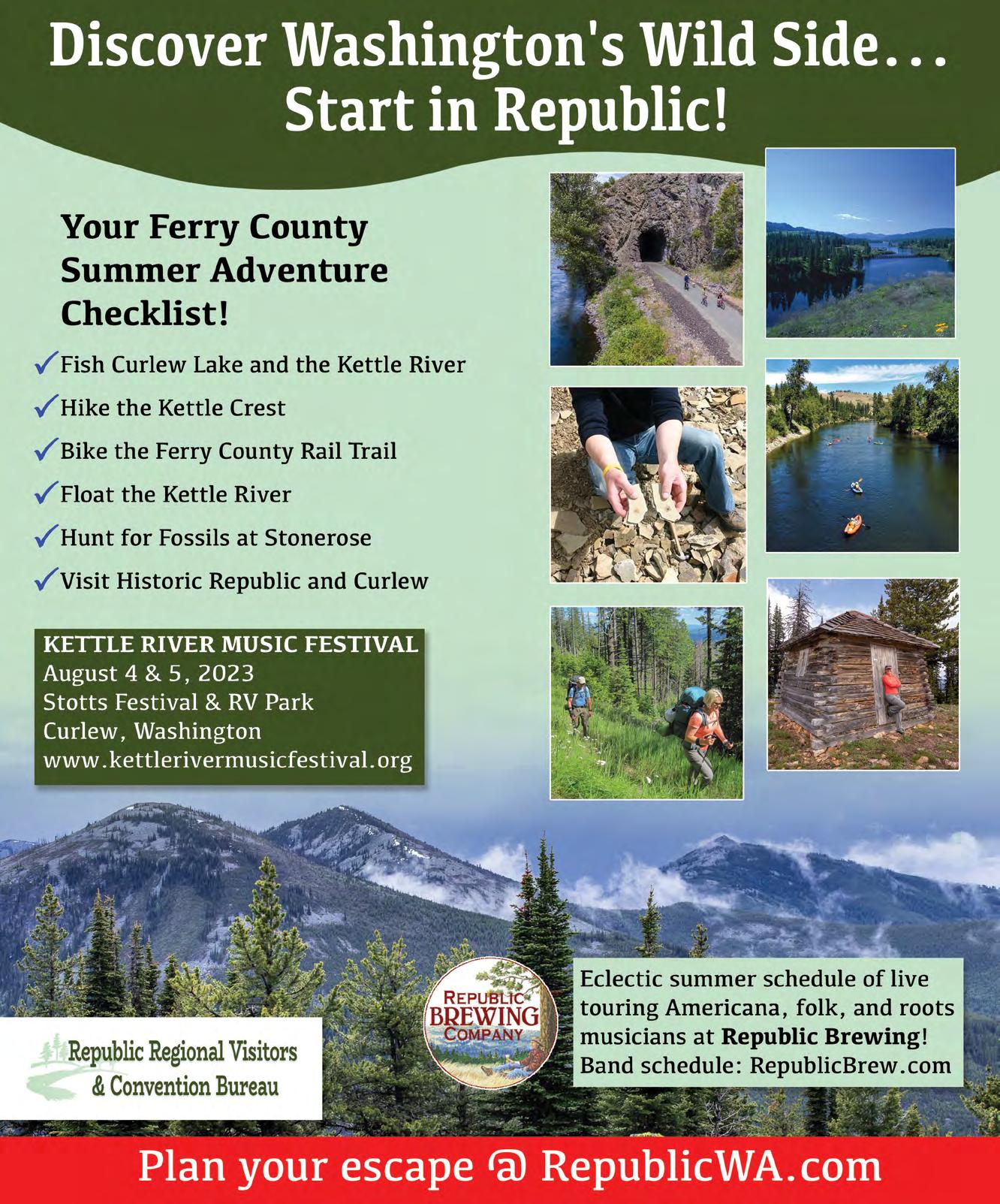

AS MY COLLEAGUE POINTED OUT , “It’s good to write about wolves; everyone is interested because everyone has an opinion.”
Wolves were functionally extinct in Washington from the 1930s until the first breeding pair showed up in 2008. This season, wolves have dispersed into new territory on the westside, edging them closer to the state’s recovery goals. The state biologist from Washington Department of Fish & Wildlife (WDFW) recently presented on the state of grey wolves (Canis lupus) in the Evergreen State, and here are the takeaways.
There are three recovery zones in Washington; eastern Washington, North Cascades, and South Cascades along with the NW Coast. The state has two possible paths to removing wolves from the endangered status, also called delisting. Each involves four successful breeding pairs in each of the three recovery zones. Along with those breeding pairs, one path has 15 total pairs for three years and the other has 18 total for one year. A successful breeding pair is a male and female that have two pups that survive through Dec 31. A pack, on the other hand, is two or more wolves traveling together through the winter.

This year saw the first pack in the South Cascade recovery area, as well as four new packs in the North Cascades and three in eastern Washington for a total of 37 packs in the state. As of yet, biologists haven’t found a successful breeding pair in the South Cascade region, but there are 20 in the eastern Washington region and six in the North Cascades.

Wolves will disperse to find new territories and mates. This year, we saw the formation of a pack on Mount Spokane with at least four individuals. There are individuals in the Sprague Lake area and Stehekin on the north end of Lake Chelan. A few wolves have even moved out of state to Oregon and B.C. Since the 2011 recovery plan has been in place, there has been an average population growth of 23% a year. This growth maintains even with wolf mortality. There have been seven natural wolf deaths that included cougars, moose, and old age. Tribes have legally harvested 11 wolves. Conflict with livestock producers has led to the death of six wolves by the state and three by producers when wolves were caught in the act. This season also saw nine unlawful deaths that are still being investigated. This includes six wolves
from the Wedge Pack in Stevens County that were found to be poisoned.
Having wolves and livestock in the state doesn't come without conflict. Seven packs were involved in livestock depredation, but only three packs more than once. There were 29 individual livestock affected with 18 deaths and 11 injuries. This is up slightly from last year of 21 instances, but much lower than the 44 from 2020. WDFW biologists state that these numbers are similar or better than other states where wolves are recovering. They also note that increased use of conflict management tools such as range riders, fence flagging, and sound deterrents are key to reducing livestock depredation.
Wolves and other large predators are integral to properly functioning ecosystems. They move deer and elk herds so that they don’t over-browse areas; they control populations of mesocarnivores, such as coyotes, thereby increasing prey for other species; and, in places like Yellowstone, their reintroduction has been linked to increases in and more resilient habitat. But the gray wolf has been back and forth as a federally listed endangered species. This has been due to politics, differences in distinct populations, and differences in state management strategies.
Currently, Washington wolves are federally listed as endangered in the western half of the state and state endangered in the eastern half. Wolf recovery is overseen by the U.S. Fish and Wildlife Service in the western part of Washington and WDFW oversees it on the east—currently, they are considered two distinct populations. Recently there have been proposals for the state to move the eastern wolf populations from endangered to a lesser listing such as threatened or a species of greatest concern. This indicates that wolf populations are not in danger of disappearing in eastern Washington but are still a management concern.
An open comment period regarding the proposed downlisting of wolves in eastern Washington to the category of state sensitive species is available until August 19. This is part of a regular 5-year review process from WDFW. To leave a comment, visit https:// publicinput.com/psr-gray-wolf. //
Adam Gebauer is busy trying to float the Spokane in any and every form he can; SUP, packraft, canoe, fly fishing raft, a few logs. He is also looking to hike, run, or bike the entire Kettle Crest this summer.
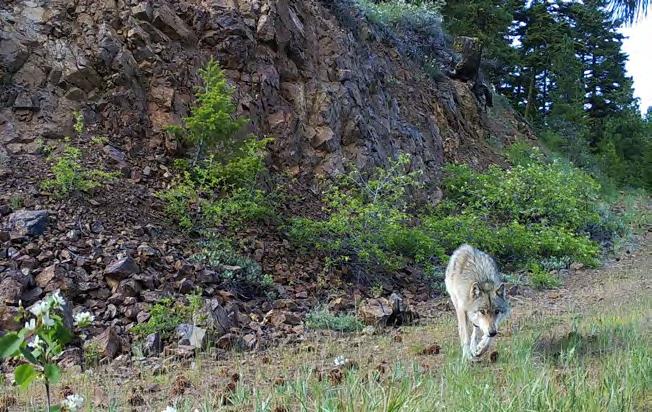
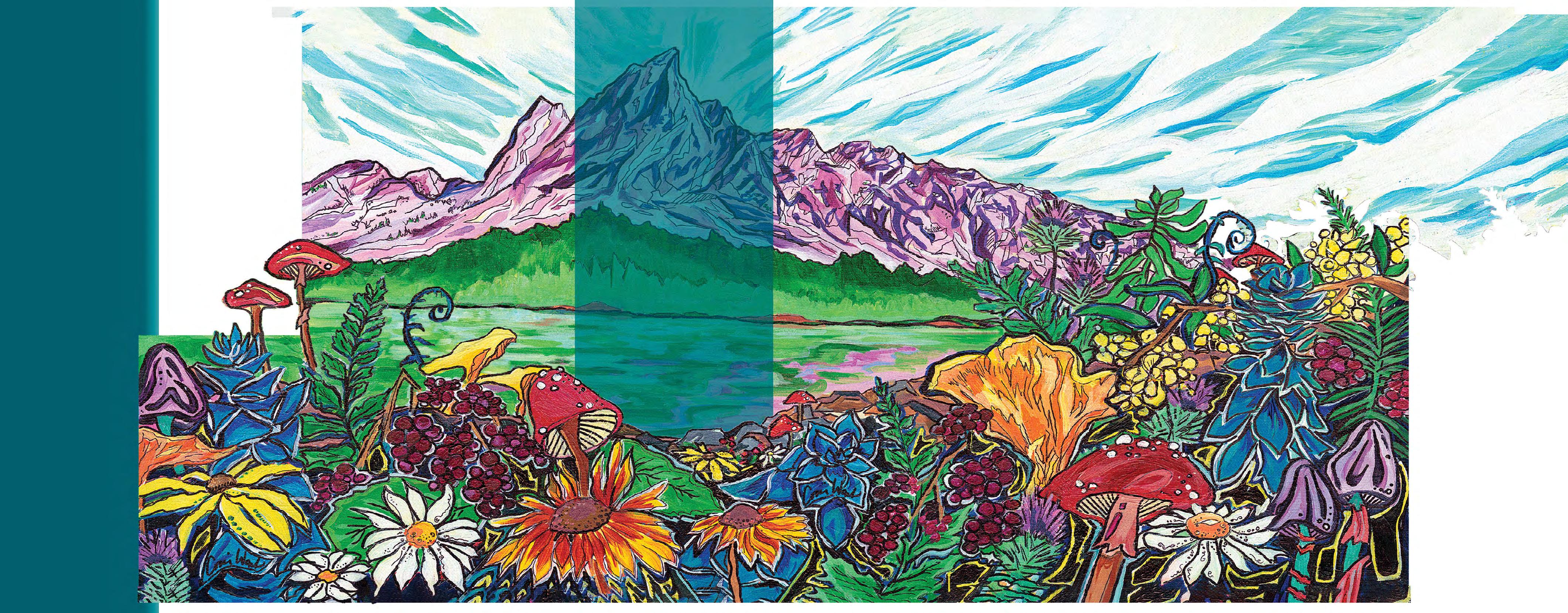
MY KIDS WERE TODDLERS when I pitched the idea of an “Outdoor Family” story to Out There’s publishers. That was nearly 10 years ago, and the precursor to this Out There Kids column, which aims to inspire and motivate families to explore the great outdoors, especially with young children.
It was easier then, in retrospect, for my husband and I to take our kids on outdoor excursions. We carefully packed all the right things (diapers, extra set of clothes, kidfriendly snacks) and our two kiddos happily came along with whatever adventure idea we planned. They had no choice.
Now that they’re adolescents, it’s not so easy. We sometimes struggle to cajole them to go on a bike ride (“My legs are tired—can we get an e-bike?”) or be happy hikers.
Despite occasional (or even regular) adolescent angst and “lazy” tendencies, I hope their memories and future outdoor experiences add up to maintain a lifelong mindset that appreciates nature and adventures. They will become voters who make decisions that can promote natural resource conservation, climate change solutions, and environmental justice.
With this in mind, here are five ideas for motivating older kids to keep loving the outdoors with you.
1. CAMPING IN NATIONAL FORESTS: Forgo a state park and its relative comforts and stay a week (or even a few days) at a rustic campground. Something magical happens—teens forget about devices and wifi, adopt a “messy hair, don’t care” attitude, and enjoy the only entertainment available: playing. Be intentional with conversations around a campfire, stargazing together after quiet hours, and having your kids plan the food menu and join you for pre-trip shopping. They’re less likely to complain about what’s for dinner if they help prepare it.
2. PACK FUN STUFF: Teens like to chill in hammocks; play cards and goofy games (try “Pass the Pigs”); and throw around a Frisbee disc (try a light-up one). And older kids, especially, need lots of food and their favorites. My husband got a Camp Chef oven for his portable grill so

we can bake pizzas (kids prep their own) and chocolate-chip cookies.
3. HUCKLEBERRY PICKING: Whether it’s Mount Spokane State Park or trails along Priest Lake, once they taste this succulent wild berry they will be inspired to hike farther for this treasured fruit. Cook in pancakes back at camp, take home and top vanilla ice cream, or simply eat right off the bush for instant gratification.
4. ADVENTURE SUMMER CAMPS: Whether local day camps or week-long camps farther from home, socializing with peers and making new friends is more exciting than the idea of hanging out with parents. They’ll return home more excited to go ziplining or mountain biking with you.

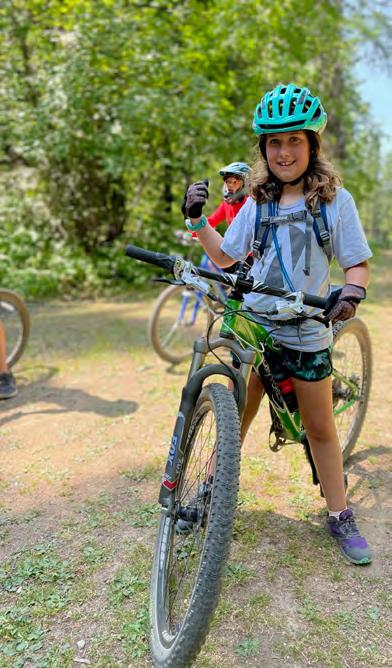
5. OTHER OUTDOOR FAMILIES: Invite another family to meet up. Planning can be tricky with busy schedules and varying kid ages and genders, but enjoying the outdoors with a like-minded family can amp up the fun. It can also reduce family tension and sibling squabbles, deepen relationships, and improve individual social-emotional wellbeing.

Some of my family’s most memorable camping trips were experienced with one or more other families. We shared supervision duties and meals; our kids inspired each other to try new physical activities and create silly games, skits, and songs; and we talked and laughed around the campfire long into the night.
Need help finding families? Ask around with current acquaintances. Make plans to attend the Spokatopia Outdoor Adventure Festival (July 8). Join an outing with a local group like Dishman Hills Conservancy or Washington Trails Association, or register for a guided family day-trip with Spokane Parks & Recreation. //
Amy McCaffree writes the Out There Kids column each issue. She looks forward to paddling on local lakes, mountain biking with her 13-year-old son, fly fishing with her husband and both kids, and camping at Priest Lake this summer.
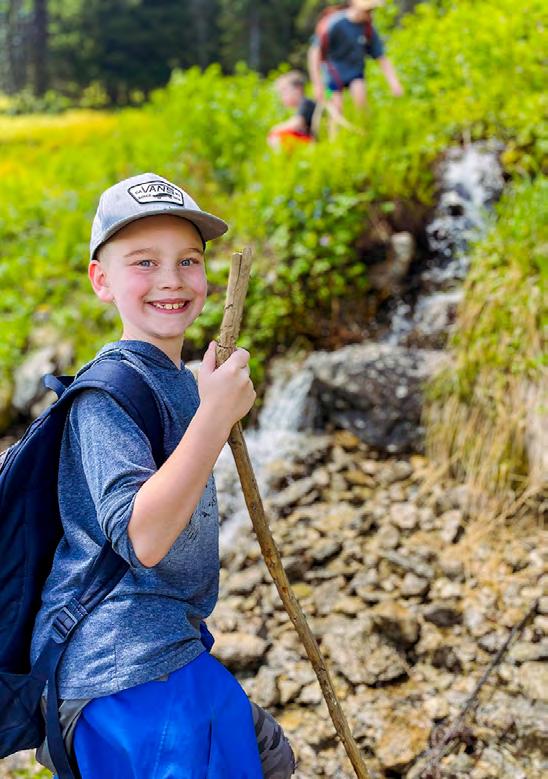

THINKING ABOUT UPGRADING YOUR CAMPING GAME? The process of trying to figure out which RV is right for you is exciting, but it can also be a little overwhelming. I found that out a few years back when we upgraded from a 1983 GMC camper van to a new Ford Transit camper build by Vandoit. Back then, I wish I would have had somebody like Noah Botnick to ask my many RV related questions. Noah, who, as part of his job, gets to take different RVs from R’nR RV Center out on his adventures, hooked us up with some great tips for anyone looking at getting or upgrading an RV.
Born in Coeur d’Alene and raised in Spokane, Noah has always been active in the outdoors year-round, from snowboarding and mountain biking to hiking, rock climbing, and dirt biking. “Being outside is like my therapy; It makes me feel grounded,” he says. When asked how he became an RV guru of sorts, he explained that he tent camped for years, but found as he got older that he didn’t enjoy it as much. “It just wasn’t as fun or comfortable anymore and I eventually got into pop-up tents a couple years ago.” Eventually, the extreme summer heat convinced him to get an RV with AC and water. “It’s not just the RVs but the whole outdoor experience I love,” he says.
There are more options than ever for a home on wheels for your adventures, from trendy camper vans, deluxe class A motorhomes, affordable travel trailers, utilitarian truck campers, light and simple tent trailers, compact class B motorhomes, and even toy haulers with living space inside. Then there are endless decisions about what amenities you want, from basic comforts and conveniences like a bed, fridge, and heat to camp luxuries like a TV, microwave, and full bathroom with hot water and a shower.
If you’re in the market for a new or different RV, we hope these tips help make the process easier and more fun!
Noah: I think the biggest place to start is to identify what type of RV you think you need based on where you plan to go. Will you spend most of your time plugged in at RV parks or more off-grid at remote campgrounds or boondocking on the side of a mountain? Are you going to use it in the winter or just the warmer seasons? Are you going to live in it full time or for months out of the year or just occasional camping trips? Finally, how much do you want to spend? An RV that’s built better and of higher quality will cost more but will last longer.
Noah: Definitely shop around and look online but also be sure to look at the options in person at an RV lot to gather information. Walk around different RVs yourself and ask lots of questions.
SHOWER AND TOILET?
Noah: There are many benefits to having a built-in water system—one or more sinks, options for a real shower, and even a flushing toilet. The drawbacks are you have to maintain it and winterize the system to avoid frozen pipes and then get it ready for summer again in the spring. An RV without a built-in water system is way easier to maintain. When
I if first got into RVing, I specifically wanted an RV without water. But, after a while, I realized it was taking me several hours to set up my external shower and toilet and then a few more hours to break down camp on each trip. Having water on board is a better option if you want to save time. You can always dry camp if you get an RV with water and want to use it in the winter without freezing the plumbing too. An RV without water, on the other hand, is less expensive and easier to maintain with less things that could break.
Noah: You definitely need an electricity source to make full use of an RV. Things have come a long ways from the old days of needing a generator or shore power hook up. Lithium batteries and solar allow you to go off-grid without a generator or the need to plug in. Some lithium battery set ups even allow you to run appliances like an AC unit, microwave, and fridge. Many simple RV set ups get by fine too with less expensive AGM batteries and solar that can run some small, energy-efficient appliances. Generators have also greatly improved and are quieter and more efficient.

WHAT ARE THE PROS AND CONS OF HAVING A TOILET AND SHOWER IN MY RV?
Noah: With smaller RVs, there are a lot of combinations of toilet/shower options, from outdoor showers and toilets with tanks or dry flush options that you can set up in tents at off-grid camps, to a wet bath toilet/shower/sink combo all in the same small room in your RV. When I first saw a wet bath, I thought it was kind of weird, but, after using mine for a while now, I found it very convenient, and it’s a great way of saving space. Then there are some higher-end RVs that have porcelain toilets and full bathrooms.
DO I NEED A FULL KITCHEN IN THE RV, OR SHOULD I COOK AND EAT OUTSIDE?
Noah: If you’re going to do a lot of cooking, I recommend looking for an RV with a built-in outdoor kitchen and a stove, sink, and refrigerator inside or outside. At least a cook top or BBQ outside is a great option. Smaller RVs and camper vans can also get away with setting up a simple kitchen outside, although set up and packing it all away takes time. Some higher-end RVs have microwaves and ovens or even air fryers built inside, along with a full indoor kitchen. Refrigerators and electric coolers can work off different fuel sources, including generator, solar, or shore power. Other kitchen appliances and grills can run off a mix of fuel sources from the RV’s power system or propane.
Noah: Heaters are great for winter and shoulder season camping and travel, especially if you’ll be visiting higher elevations or different climate zones where the temps could drop considerably. Most RVs have dual-fuel options for heat so you can run your heater off electricity (shore power or a generator) or a propane tank. Other heaters can run off of your RV’s regular fuel or diesel tank.
If you have more questions for Noah Botnick, follow him and ask questions on Instagram, Tik-Tok, or YouTube (Noah’s Ark RV Adventures). He’s also the guy behind all of the RV adventures for R’nR RV on Instagram, Facebook, and Tik-Tok. //
We’ve borrowed my father-in-law’s full sized Solo Stove for a couple of campground shindigs this past year, and while the quality and construction of these smokeless fire pits are amazing, it took up a lot of space in our small camper van. The Ranger 2.0 is the more portable, compact version of its bigger brother that is built to limit smoke billowing up in your face. At just over a foot tall and 15” in diameter, it weighs in at 15 pounds.The Ranger always comes with a removable ash pan for easy cleaning and a carrying case. Ours also came with the surface-protecting stand (purchased as an add-on). This stainless steel beast will keep you enjoying campfires for years to come instead of inhaling them. MSRP: $299. Solostove.com
 By Derrick Knowles
By Derrick Knowles
If you want a set of super strong and lightweight trekking poles that don’t blaze the trail in front of you with bright colors, the stealthy Black Series FX Carbon are for you. Pick across difficult terrain with the priceless stability of well-built trekking poles without calling unnecessary attention to them. I used these multi-purpose poles to fend off stepping on over a dozen snakes and beat back poison ivy on a recent
spring backpacking trip in Hells Canyon. This latest trekking pole release from Leki also has a redesigned grip, lightweight hollow-core construction, and supportive surfaces where your hand meets the grip. These poles are adjustable between 110 and 130 cm and quickly break down into three sections of less than 16 inches for easy stowing. MSRP: $269.95. Leki.com/us/en
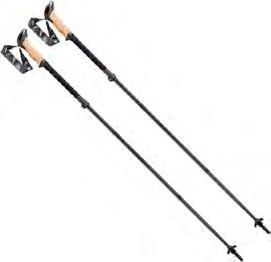
These bomber flip flops seem to be living up to their name, showing only minor wear and tear after nearly daily use for almost two months. While I haven’t had them out on the water yet, they are built for wet and dry terrain with a slip-resistant, traction-grabbing outsole. They also have an abrasion-resistant material where the straps meet the feet, so

after several 3-4 mile urban hikes in them, I’ve had nothing but comfortable strolling with no irritation or blisters. While mine are a camouflage, there are multiple prints for men and women, including women’s Salmon Sisters and FisheWear prints. MSRP: $75. Xtratuf.com

LIVSN describes its Reflex shorts this way and I think the company is right on: “Think if your favorite yoga shorts met your favorite outdoor shorts and they had a love child.” Comfortable? Definitely. They are light and soft and made from recycled polyester with lots of stretch. They dry fast and breathe well too. I like the abundance of pockets (two rear zipped ones and two hip pockets) and the elastic waist band with added drawstrings for a snugger fit. They look plenty cool, especially for an athletic pair of shorts for outdoor pursuits, but they probably wouldn’t be my first choice for hitting the pub for a pint. MSRP: $79. Livsndesigns.com
This magical little mountain jacket reminds me of an elven cloak of Lórien from “The Lord of the Rings.” If you’ve ever put on a wind-proof jacket on a hike, run, ride, or climb when the weather turns or elevation demands it, but were left wanting something with more substantial warmth, this could be your perfect jacket. Thanks to Pertex Quantum Air, a windproof, waterresistant fabric with increased ventilation and breathability, and Polartec Alpha, an active insula-
tion technology, this jacket is lightweight, windproof, waterresistant and soft, warm, and comfortable to the wearer’s touch. My only worry is that the color I have, silver grey, will, in short order, end up getting stained beyond recognition by a backcountry mix of sweat, dirt, and various trailside snacks and will lose its elven luster. Thankfully they come in darker, more dirtbag friendly colors for men and women. Price: $179.95. Jack-wolfskin.com

Equally at home on a river, lake, bikepacking trip or motorcycle tour, the Big River Dry Bag will keep your gear dry and protected on any adventure. Attach it to bike racks, a kayak or raft, or backpack and you’ll notice the extra space (5-35 liter sizes) but not the extra ounces. The durable, abrasion-resistant construction means it should last for years, and the Hypalon roll top closure accommodates fluctuating loads while keeping your gear dry. Add the Dry Bag Sling ($9.95, sold separately) to allow for hands-free, over-theshoulder carrying. MSRP: $39.95. Seatosummit.com
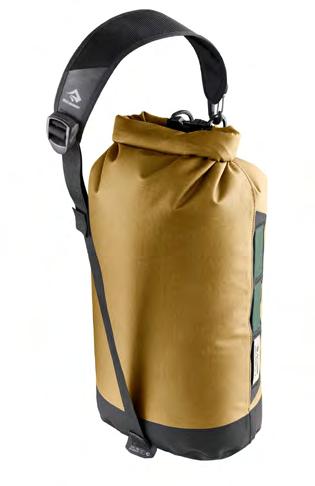
A modern-looking, ultralight day pack, the Wy’east has all of the weight-trimming tricks of an ultralight multi-day backpack, minus all but the essential trimmings condensed into a smaller 30-liter package. Wellthought design features include built-in shoulder strap pockets for a phone, snacks, or other sundries; deep, stretchy mesh side pockets to hold water bottles; an internal zippered stash pocket; a removeable hip belt; an internal pad you can pull out and sit on; and a hydration sleeve. A perfect pack for day hikes, urban adventures, chickenbus vagabonding, and simple overnighters. MSRP: $155. Sixmoondesigns.com

This high-volume, round cooler is not only bombproof, it holds up to 27 cans of beer with the high-tech insulation to keep them really, really cold for a long time. It also has some smart and convenient features, including a solid handle that doesn’t slop around while you’re lugging your load, a one-hand latch that seals the lid shut tight, a drain plug, built-in bottle opener, and a magnetic pod on the top that will secure any BOTE drinkware on the cooler top. The thing also makes the perfect seat when called upon and sports a comfy foam top for that purpose. MSRP: $270. Boteboard.com
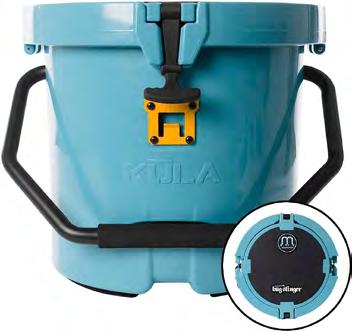
Some recreational chairs are just a place to park your posterior, ideally situated with a pleasant view, but a rare few have a style that makes a statement. The Rainbow Bandana Sunset Chair is definitely one of the latter. Modeled after vintage bandanas, these bright and beautiful chairs are attention getters. The back height is taller and more comfortable for doing things like watching a sunset, and it has longer legs so that you sit higher off the ground than some camp chairs. It still packs down and weighs just over three pounds, so it’s easy to tote around. MSRP: $169.95. Helinox.com

The first pair of hiking boots I ever remember owning as a teenager were from Hi-Tec, and I was recently glad to see the company is back making affordable hiking boots with modern outdoor gear technologies. The Altitude boot features waterproof leather uppers and Michelin rubber outsoles in what seem to be a solid design and solidly-built entry-level hiking boot, although I haven’t given them a thorough enough backcountry beating to say for sure. MSRP: $89.98.

Editor’s Note: Unless otherwise stated, product for these reviews was provided by the brand at no cost to the reviewer. Out There strives to only review quality gear and provide honest, thoughtful, and entertaining gear reviews, but readers should always do their own research.

Waaaaay back in 2018, I got it in my head that I should start bikepacking. Never mind that I had no gear for it and no idea what I was doing. Two bikes, lots of mud, and countless bike bags later, I’m finally dialing in a packing system I’m happy with. I thought that my early generation Revelate Terrapin seat bag system would always be my go-to. But then I had a gift card, and an REI dividend, and an itch for adventure. And now I’m the proud owner of the Roswheel Off-road Seat Pack and I am delighted with it.

This pack addresses one of the most common issues with large seat packs (wagging or flopping from side to side as you’re riding) by including a light-weight aluminum rigid rack to hold the bag in place in the roughest conditions. When I installed it, instead of reading the directions, I installed the rack upside down and then got frustrated that I couldn’t tighten it enough to eliminate movement. Until I realized the included heavy-duty straps loop through the platform of the rack, through the sides of the bag, and overtop of the seat rails to hold everything solidly in place.
The 15L capacity is enough space for a cold-weather sleeping bag, my favorite inflatable Sea to Summit pillow, base layers and change of socks, and a lightweight puffy— so, my entire sleep system, with an easy “compression sackpacking” technique. I will always have a soft spot in my heart for my original Revelate set-up, and the Terrapin will be my back-up. But this Roswheel bag is the bee’s knees of bikepacking gear, and I’d recommend it to pretty much anyone!

 By Olivia Dugenet
By Olivia Dugenet
I've spent many shivery nights high in the mountains with disposable hand warmers jammed into my armpits, trying to heat blood as it flows through my axillary arteries. To increase my heart rate and pump the warmed blood to my lower extremities, I roll around, fidget and alternate bursts of raised-leg crunches with sets of flutter kicks inside my sleeping bag. Woe to whomever is unlucky enough to share a tent with me. I’m what experts call a “cold sleeper,” and while the nocturnal HIIT workouts and skin-searing pit furnaces do warm things up a bit, they are also proven sleep deterrents.
About a year ago, I launched a quest for enhanced comfort. At first, I only considered upgrades to my base layer and sleeping bag. At some point it occurred to me to check the R-value of my sleeping pad. R-Value is a 1-7 rating system that measures how well a pad resists the transfer of heat from a warmblooded body directly into the cold hard ground. The higher the number, the warmer the pad. I learned that my pad, while comfy, compact and lightweight, was not intended for warmth. It was rated at around 2.5. I needed something engineered to prevent heat loss. After a lot of research, I bought the Sea to Summit Ether Light XT Extreme Sleeping Pad with an R-Value of 6.2. While bulkier than my last pad, it’s still light and packable. It’s super comfortable, ultra-insulated, expensive and worth it. //

I’VE BEEN GARDENING for enough years now to have had my fair share of common garden pests. One year, it was box elder bugs laying hundreds of eggs over my zucchini and squash plants. Another year, blister beetles (aptly named) devoured the marigolds I’d strategically planted near my tomatoes. Last year, slug babies infested my salad blend, an event I didn’t notice
until I was halfway through my dinner. And, of course, there are the usual aphids, thrips, corn earworms, and dreaded cabbage worms.
For many of us, a key point to gardening is growing food free from chemical byproducts that come from pesticides and herbicides, as well as the risk these chemicals pose to beneficial insects like bees, predatory beetles,

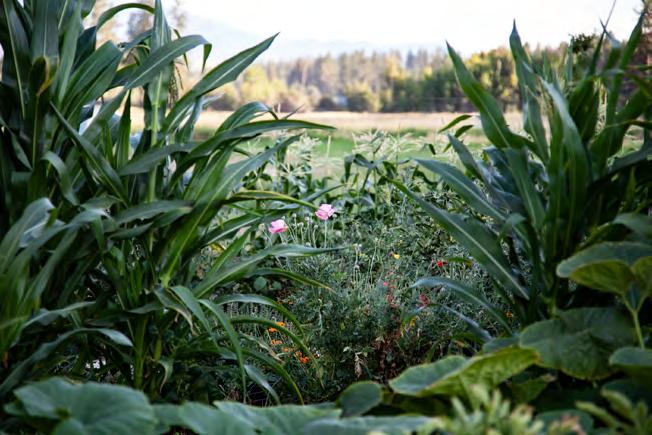
and ladybugs. Commercial pesticides disrupt the natural balance found in healthy soil and often contain toxic ingredients. Alternatively, we can turn to common DIY insect controls: coffee grounds, crushed eggshells, manual removal, floating row covers, and soapy water all offer some level of insect prevention. But perhaps the best pest deterrent is to diversify your garden with companion planting.
First and foremost, creating a healthy garden, specifically using interplanting practices, greatly improves the quality of your soil, the overall health of your plants, and increases your ability to fight off disease and infestations. Adding extra herbs and flowers like borage, nasturtiums, marigolds, basil, sage, thyme, dill and mint (container grown) attracts beneficial bugs as well as deters many of our common pests.
The University of Minnesota reports that interplanting three or more companion crops in one space greatly improves soil quality, plant health, and pest control. Thyme, onion, and nasturtium planted alongside broccoli can greatly reduce the damage caused by cabbageworm. Basil and marigolds planted with tomatoes reduce thrips, and nasturtiums and marigolds planted near squash can deter squash bugs and cucumber beetles. Petunias attract aphids,
tomato hornworms, and asparagus beetles, where the insects become trapped in the sticky stamens and die.
Some plants work at repelling insects by emitting strong smells, while others can serve as a trap crop. For example, planting nasturtiums around tomatoes or members of the brassica family helps draw cabbage moths and aphids away. Onions and garlic are also excellent insect deterrents that work the best among tomatoes, peppers, brassicas, beets, carrots, and lettuces.
Other plants work by attracting beneficial predatory bugs; cosmos, daisies, sunflowers, and yarrow all attract lacewings (which devour insects like corn earworms). Fennel, dill, and coriander attract parasitic wasps. Yarrow, echinacea, sunflowers, and cosmos attract predatory soldier beetles, which prey on slugs, snails, and aphids.
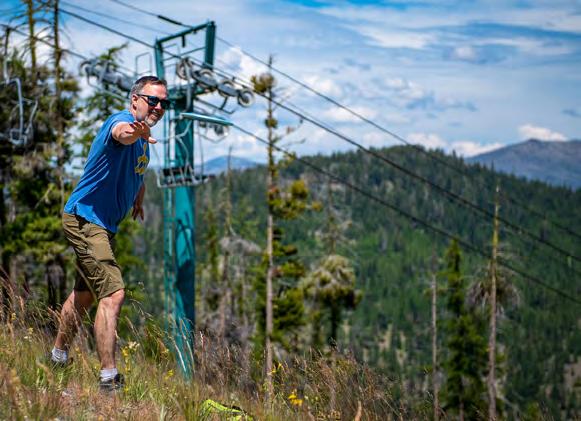
Environmental writer Rachel Carson said, “In nature, nothing exists alone.” So often we get drawn into patterns of monoculture: one crop per row with no interplanting because it seems tidy and easy. But our gardens (and the natural world) benefit the greatest when biodiverse habitats flourish. In lieu of chemical bug deterrents, look into which plants you can add to your garden this summer to attract the bugs you’ll want and keep away the ones you don’t. //
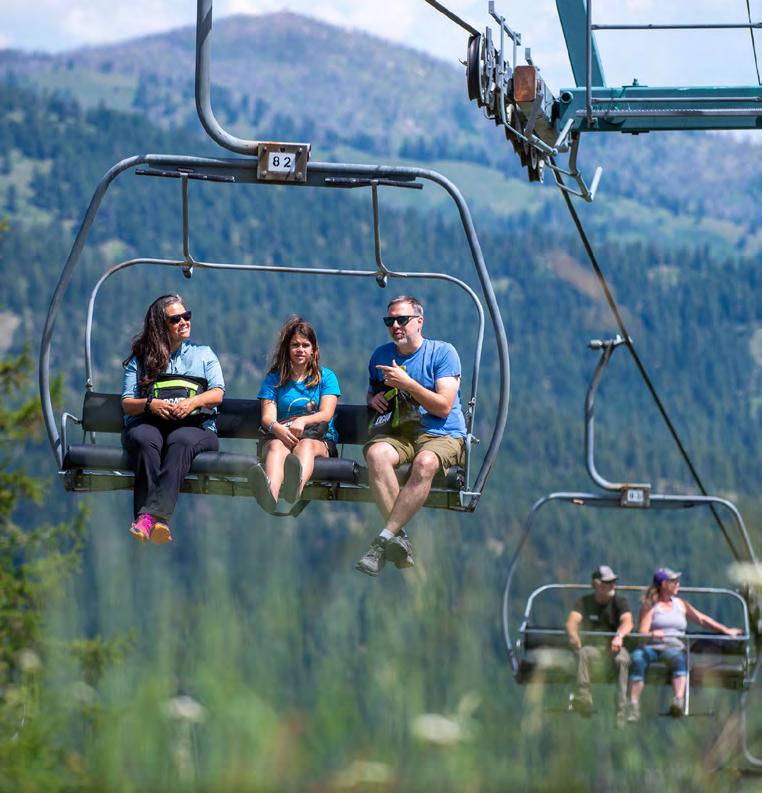



SUMMERTIME IS BERRY TIME —the time when all plants and trees are coming into their full expression in their yearly life cycle with fruit maturing into a beautiful, sweet lusciousness that we all love to eat.
I, for one, love to graze when I’m hiking in the mountains. The mountains can be prolific with berries when the weather conditions are just right. In this region, the wild huckleberry is highly sought after, but we must remember that we need to leave some for the bears. They need that sweet abundance of carbohydrates to store enough energy for the winter. And they need a lot of calories to maintain a 300-pound body! So please be mindful of their needs, so we can keep our mountains wild.
Luckily, huckleberries are not the only berry out there. We have thimbleberry, salmonberry, crowberry, black caps, watermelon berry, lingonberry, saskatoons and so much more. Many folks think these are poisonous, which is fine. That leaves more for the bears and me. Some berries are poisonous, though, so do make sure you know what you’re picking before you eat it.

During my time on Alone Season 9, I had an abundance of berries. Preserving the berries for wintertime was crucial to my survival. With no way to make jam, and no dehydrator, I chose to make fruit leather. Lingonberry, my primary berry, has a ton of natural pectin in it, which is why it lent itself to making great fruit leather.
Making fruit leather is easy and doesn’t require much. There are many recipes for making fruit leather, but all you really need are the berries. Sugar and pectin aren’t necessary. Berries already contain the sweetness of life, so why add processed sugar to a gift from nature? That’s just my viewpoint, from one who tries to live from what nature already provides.
Pectin, on the other hand, is helpful to make the fruit stick together. Some fruit contains more pectin than others, so if you
have a berry that doesn’t have a lot of pectin, you can add other berries or tart apples to assist. My fruit leather on Alone consisted of wild blueberries, crowberry, creeping snowberry, bunchberry and lingonberry.
To make fruit leather, whether you’re in a kitchen or in the backcountry, all you need to do is simmer down your berries in a stainless-steel pot. (Don’t use a cast iron pot, unless you want black teeth, like I had on the show! That took 2.5 hours at the dentist to clean. The acids from the fruit will remove the seasoning from your pot and your leather will taste like iron.)
Mash the berries and simmer until most of the moisture content is gone. It will be super thick and sticky. Then, spread it out on parchment paper and let it dry in the oven on warm heat or in a dehydrator. If you’re in the backcountry, spread the mix on something dark, like a clean tarp, or something flexible, so that when the berries are dry you can get them off the surface. Set it out in the sun to dry. The dark color will warm up the berries and help the moisture to evaporate. A good breeze will also speed up the drying time.
Once dry, fruit leather is good for a few months. Its lightweight and condensed form make it easy to take into the backcountry. Just a few bites pack the super nutrition from the berries you harvested.
Have fun out there harvesting, be respectful to the plants, and remember to leave some for the bears! //
Karie Lee Knoke is a wilderness/primitive skills instructor and founder of Sacred Cedars Wilderness School. She was a contestant on the reality TV survival show “Alone Season 9” on the History Channel. Go to www.karieleeknoke.com for more information, or follow her on Facebook @ SacredCedarsWildernessSchool or Instagram @karie_lee_knoke

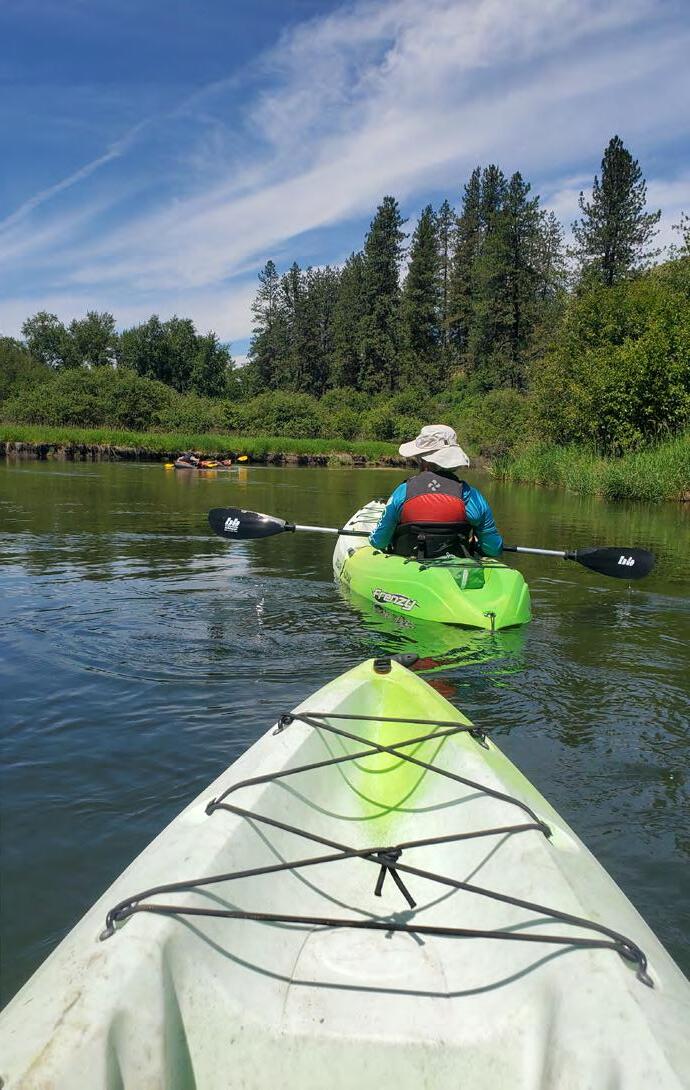 By Tabitha Gregory
By Tabitha Gregory
MY FRIEND BONNIE came to visit last summer. In addition to urban jaunts I’d planned, I wanted our itinerary to include something outdoorsy. While perusing the local Parks & Recreation catalog, I found just the ticket: Paddle the Little Spokane River in a Rented Kayak. Although I’ve never been much of a boater, Bonnie is a kayaker from way back. A four-hour adventure on a nearby waterway seemed like the perfect way to impress. I jumped online and reserved two single kayaks for $55 each.
Our kayak outing would begin at 11 a.m. the morning after Bonnie arrived. We got up late, grabbed breakfast, then, as specified in our confirmation email, headed out to the 9 Mile take out. Here, we’d register and board a van bound for the put in.
Friendly staff members oriented us, assigned us zippered float vests, and pointed to the row of boats—hard shelled, stubby, open, bright-colored vessels. We chatted with fellow river riders, then boarded the van and moved out.

Fifteen minutes later, we arrived at the St. George’s put in. Ryan Griffith with Spokane Parks and Recreation gathered us for a trip briefing. He offered instruction, told us to remain engaged on the river, and cautioned us to steer clear of three sets of highway pilings and overhanging branches that can tip kayaks. The water was high, he said, so the current was faster than normal. The fourhour trip, he said, should give us plenty of time to enjoy the river and stretch our legs at Painted Rock wayside. We hauled our boats down to a sandy launch and shoved off into the current.
The Little Spokane River is a tributary of the Spokane River. It begins west of Newport, Wash., and flows south between Highways 2 and 395, turns west at the Wandermere golf course and enters the Little Spokane River Natural Area. That day we paddled the final six-mile stretch where the river corkscrews through compact wetlands, forests and fields.
Bonnie and I let the current grab our kay-



aks, then dipped our paddles to gently steer ourselves downstream. Quickly, the group spread out, and in no time the river was our own. The sun was mid-summer high, and we were glad for big hats, sunscreen, and the cool water that dripped onto our arms and legs.
There is no whitewater on the Little Spokane. Yet, neither is it a mindless float. Bonnie and I employed our paddles not so much for forward momentum (the current was sufficient for that), but for steering ourselves around the continuous twists and turns and keeping ourselves removed from shore. In places, exposed basalt cliffs rose steeply. Around a bend, rock gave way to dense forest nudging up against water’s edge. Another twist, and tall grasses created tufts along the banks and a wildflowercovered hill appeared. Each bow presented a new iteration of the landscape. At Painted Rock wayside—our halfway point—we easily guided the kayaks to shore and took a short walk.
Bonnie and I had not seen one another in a long while, and the pace and vibe of the river promoted introspection and renewal. We talked of the months and years behind and about what lay ahead. A heron coasted in and landed on a fallen tree, grabbing at small prey. A moose stood knee-deep in water, nipping grass.
PLANNING TIME AWAY from daily life’s demands and executing a great road trip can be stressful and a lot of work. But a truly excellent trip can quickly and completely obliterate anxious feelings from unfinished work you inevitably leave behind. This past May, I put that theory to the test on a six-day family road trip with my wife Shallan and son Remi. Our destination was the West Koot Route a few hours north of Spokane in British Columbia, Canada. When we started out, being good Americans, we were hell bent on packing in as many experiences as possible, and I was pretty sure I’d be checking my phone too often and working late in our hotel rooms each night. But as I’ve learned from many adventures in the B.C. Kootenays over the past 25 years, this intensely beautiful place has a supernatural quality about it that can flip your expectations.
As we set off from Spokane, my attention fixed on last-minute, on-the-road work emails, I barely noticed the traffic thinning and the views growing wilder as we hurried toward our first stop, Rossland, B.C., the mountain biking capital of Canada. The West Koot Route is just that, a route through the west Kootenay region of southeast British Columbia that connects popular outdoor
adventure meccas like Nelson and Rossland with lesser known yet equally spectacular mountains, rivers, parks, and trails systems in and around the towns of Castlegar, New Denver, Nakusp, Kaslo, Ainsworth, Balfour, Crawford Bay and other communities.
The two-plus hour drive north went fast, and the border crossing, with a passport or enhanced WA State drivers’ license, is quick and easy. Ten minutes later, we arrived in Rossland and stopped in at Revolution Cycles for a free map and advice on which trails would be best for our hill- and rockhating 8-year-old. Driving the few blocks from town to the Centennial Trailhead, we passed a dozen people on bikes—mountain bikers heading to the trails and multiple parents on e-bikes pulling trailers with kids. At the trailhead parking lot, we opened the van door and the lush smells of spring mountain air rushed in. Friendly chatter from the handful of other people heading out for a hike or bike ride mixed with unseen birds chirping away in the trees drifted around us as we unloaded bikes and geared up. The first layers of all of that work tension began to soften ever so slightly.


Known more for its miles of challenging
singletrack, including the Seven Summits Trail and dozens of other epic rides, we learned that there are still plenty of green and blue trails to keep kids and parents happy on area trails. By far the shortest day of riding I’ve ever had after years of riding in Rossland, our pedal along the Centennial Trail, Blue Elephant, and a few short connector trails had its own unique rewards, like watching my son make it up several dreaded hills and then fly the whole way down hooting and hollering like a maniac. And instead of blowing by trailside attractions and viewpoints, we took the time to stop and look and even read the historical interpretive signs. We marveled at the trees and reveled in the silence instead of checking Strava.
After our ride, we checked into our room at the Prestige Mountain Resort and quickly set off to wander the hilly streets of picturesque Rossland in search of local treasures, which we found in droves: a cool t-shirt and biking gear at Revolution Cycles; a bananaboard style skateboard and stickers at a rad little sweets, toys, and gift shop called the Bombshack where Shallan immediately felt like besties with the owner; a bottle of BC wine at the liquor store; and a favorite Canadian cheese at Ferraro Foods. We

wandered the streets, found the impressive skate park, and then had a wonderful Thai food dinner with some of the tourism folks in town. Even though we had just met, conversation flowed like with old friends by the end of the meal.
That night, back at our hotel, I indeed cracked open the laptop to tap away some worries for an hour or two before calling it a night, but my heart wasn’t in it. After a quick breakfast the next morning, we beelined it to the skate park, which has plenty of eye candy for non-skaters in the form of murals, sculptures, and other art. We watched Remi roll around the many features, mostly riding his new skateboard on his belly, while Shallan and I sipped coffee in the morning sunshine. We had planned to hike up KC Ridge that morning for a view of Rossland, but if there’s one thing we have learned about traveling with children, it’s to be flexible and slow down. With morning edging toward afternoon, we finally loaded up and hit the road to Castlegar.
While snow still clogs many of the highcountry trails in April and May, there are snow-free lower elevation trails that are ready to ride or hike that time of year. And there are other benefits of a spring trip on the West Koot Route: fewer tourists, spring flowers, comfortable temps, and, as we found in Castlegar, incredible waterfalls.
A short drive from Castlegar, renowned for the city’s sculpture walk, there are several great waterfall hikes. Little McPhee waterfall and Tulip Falls are recommended, but we visited the crashing cascades of Rialto Creek a short drive upriver from town. The new out-and-back trail up Rialto Creek called Dirty Dreams was built as a mountain bike climbing trail, but, in the spring, it’s an incredible hike along the edge of the crashing creek cascades. Impressive wooden bridges and trail features will keep you hiking farther and farther up the trail, your curiosity piqued at what wonders may await around the next bend. Dirty Dreams looks like an awesome intermediate bike ride too, and mountain bikers of all abilities won’t want to miss the Merry Creek trail system south of town.
FAR LEFT: ALMOST TO THE TOP OF BLUE ELEPHANT. // LEFT TOP: BOMBSHACK SHOPPING. // LEFT BOTTOM: ROSSLAND ART.
OPPOSITE PAGE: TOP: LIFE IS ALWAYS GOOD ON A BOAT. // BOTTOM: RIALTO CREEK RAGES. // FAR RIGHT: MT. ABRIEL RECREATION FRIENDS.
SIDEBAR: CAST IRON PORK CHOP WITH SASKATOON BERRY SAUCE
PHOTOS: SHALLAN KNOWLES
When we first rolled into Castlegar, we stretched our legs at the sprawling Millenial Park, which features the largest bike park in the Kootenays, while we waited for a rendezvous with ChillBilly Sportfishing Charters to head out on the Columbia River in a drift boat looking to spot sturgeon. These giant, ancient fish hang out in the shallows upstream from town, and the water at times is so clear you can observe them hanging out a few feet below from a kayak or paddleboard too. We didn’t see any sturgeon on our drift boat ride that day, but our guide was a character who shared his knowledge and love for his home waters as he rowed us up and down the river.

The highlight of our stay in Castlegar, at least for the youngster, was a surprise later
helped wash away lingering unease over tasks left untended at home.
NAKUSP: A WILDERNESS LAKE TOWN WITH HOT SPRINGS AND HIGH PEAKS
We left Castlegar with so many experiences to come back for, but when the snowcapped crags of the Valhalla mountain range came into view heading north, we were ready for our next West Koot Route stop. Nakusp stands out as a lake town with some of the best sub-alpine mountain views over water that I’ve seen in North America. While Shallan had a bad migraine that unfortunately meant an early night for her in our Airbnb and no trip up to the nearby, community-owned Nakusp Hot Springs (we’ve been there before and they are awe-
to water rights on the Columbia River that we share with Canada. After dinner, Remi and I set out on a walk along Arrow Lakes on the Nakusp Waterfront Walkway two blocks away. This paved path features benches, garden areas, and gorgeous views of distant dramatic peaks. The walkway ends at a sprawling, sandy public beach where Remi found another kid his age to build a rock wall with.
The next day we made the short drive north to the relatively new biking trails and pump track at the Mt. Abriel Recreation Area. Immediately after climbing out of the van, we made friends with a few other families from Rossland, and they invited Remi to head off with them to the pump track while we finished packing up. Once we found and joined the group of parents and kids, we spent the next several hours on the pump track and then hiding under one of the picnic shelters during occasional downpours. Once the rain let up, we pedaled along several sections of fun and flowy green and blue trails, passing and being passed by dozens of other parents and kids. There were many more miles of trails for all abilities at Mt. Abriel, but for us it was time to split for our next stop.
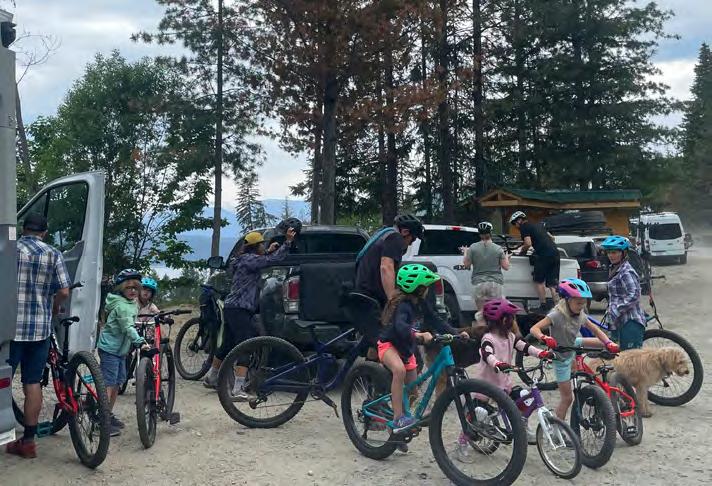
Heading south from Nakusp then east over the mountains from New Denver to Kaslo, it’s worth a stop at the historic mining town of Sandon. In the late 1800s, Sandon was a bustling mining burg sporting 5,000-plus residents, which is hard to imagine today given the tight canyon and limited structures. Back then, though, it was the hub of the richest silver-lead producing region in Canada. Touring the few remaining buildings, including the original City Hall and Pump House, doesn’t take long but is a great way to learn about the region’s history.

The weekend we rolled into the charming village of Kaslo, the typically quiet
Despite our crew having various food allergies, we found healthy and delicious meals and accommodating servers at all of these eateries along the West Koot Route.
ROSSLAND
Mook Thai: Authentic Thai food in a cool, historic Old Fire Hall building. Caffè Gabriella: All of the traditional North American breakfast favorites and a few international twists.
CASTLEGAR
The Grateful Table: Amazing Greek food with fresh veggies and plenty of gluten free and vegetarian choices.
Black Rooster Classic Bar & Grill: Canadian take on a wide range of classic North American meals, plus vegetarian and international options.

CRESCENT VALLEY
Frog Peak Café: Locally-sourced, fresh and delicious breakfast and lunch with amazing sandwiches, bowls, and salads with plenty of pleasant outdoor seating between Castelgar/Nelson and New Denver.
AINSWORTH HOT SPRINGS RESORT
Ktunaxa Grill: Fresh, local, and indigenous inspired, the Cast Iron Pork Chop with a Saskatoon berry sauce and the gluten-free burger with locally-baked bun were two of the best things we’ve ever eaten at a restaurant anywhere.
NELSON
Marzano Italian Restaurant: Excellent Italian food from chefs trained in Italy with an eye for high-quality ingredients. Highly recommended for the pizzas or pretty much anything on the menu.
Kootenay Co-op: The best place for local and organic ingredients, snacks, and other groceries as well as breakfast, lunch, and dinner available in the café.
town was bursting at the seams with Kaslo May Days celebrations featuring logger sports competitions, music, and vendors, plus the town’s usual cool shops and restaurants. Like other communities along the West Koot Route, Kaslo has excellent hiking and mountain biking trails, but the ones here start right in town, including the Kaslo River Trail system. The paddling on Kootenay Lake from public access points in town, with enchanting views of Purcell Range peaks, is the stuff of paddleboarders’ and kayakers’ dreams. (You can rent gear or book a tour with Kaslo Kayaking if needed.)
All too soon, it was time for us to make the 20-minute drive south for our reservation at Ainsworth Hot Springs Resort. Always a relaxing and restorative experience, thanks to the hot water and natural mineral content, I was about as chill as can be after a few tours through the hot springs cave with Remi. Thoughts of pre-trip life had been supplanted by dreamy meditations on distant peaks and dazzling lakes, of miles of trails out there in the lush BC forests waiting for me. After a lengthy soak, we cleaned up, thoroughly enjoyed what may have been the best meal we’ve ever had in the Kootenays at the Ktunaxa Grill at Ainsworth (see sidebar), and continued south 20 minutes to the Kootenay Lakeview Lodge in Balfour.

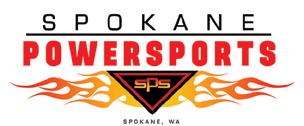

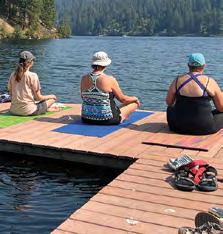
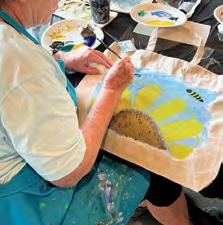





The Kootenay Lakeview Lodge, perched on a forested hillside of its namesake Kootenay Lake between Nelson and Ainsworth, turned out to be a beauty of a basecamp for the remainder of our stay in Canada. We woke the next day ready for our tour down the highway a bit at Kokanee Mountain Zipline. While the rest of the family were zip-tour veterans, it was my first time on one and I wasn’t sure what I’d think. Blowing my expectations out of the water, the rides were high and blazing fast (the views flying over the Kokanee Creek canyon are carved solidly into my psyche) and the guides were real, funny and an energetic joy to trust our safety with.
After our adrenaline fix, we set out for nourishment in Nelson, with hopes of an afternoon mountain bike ride at the oftlauded intermediate and beginner flow trail system at Morning Mountain. But Mother Nature had other plans for the day, and we ended up dodging downpours and lightning flashes inside downtown Nelson’s plethora of local outdoor gear, apparel, and other unique shops. We returned “home” to our lodge with bulging shopping bags instead of tired legs, but also happy to be free from our daily grind in such a pleasant place where the pace of life seems so much slower and sane. Thanks to a provisions stop at the Kootenay
Co-op, we spent the evening’s inclement weather swilling wine and grilling local meat and veggies at the lodge’s outdoor kitchen while being serenaded by bird song and a chorus of croaking frogs.
We woke the morning of our last day and departed from the official West Koot Route for our alternate course home through the Idaho Panhandle. In the community of Balfour, we lined up early at the Kootenay Lake Ferry for the free, 35-minute boat ride (the longest free ferry ride in the world). Our destination was the artisan community of Crawford Bay, BC, and while we waited to load the boat we watched bubbles whimsically floating past our windshield from a tie-died shirt and gift shop as ferry riders milled about engaged in casual conversation with just about everybody they encountered out of a vehicle or with an open window. Once we were on the ferry, we visited the snack stand for our ever-hungry child and wandered around the deck to watch the wind-blown water— which felt as wild and vast as an ocean
most of your work life doing. At the same time, the artisans who create their crafts out of roadside shops offer some sense of hope for the future. Maybe we can learn from the past that quality, handcrafted local goods are where it’s at.
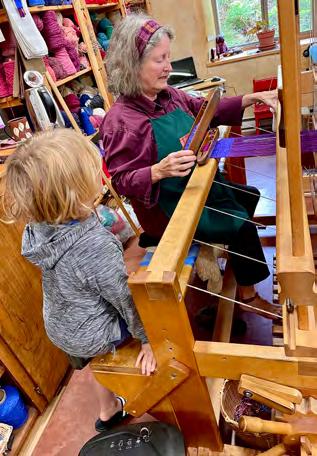
Our first stop was the North Woven Broom Company that operates out of a historic log barn, where you can watch traditional brooms being made by hand. Our family had been reading the Harry Potter series out loud to each other for the past two years and was about to finish the final book while driving home later that day. It was, therefore, a surprise and auspicious timing to discover that this incredible broom shop was responsible for making brooms that were used by the Canadian publisher of the Harry Potter book series as props and prizes for book promotion events. They even sent one to the series author J.K. Rowling. We took some photos, chatted up the broom maker, awkwardly got him to sign our copy of “Harry Potter and the Deathly Hallows,” and walked out of there with a small fortune of his authentic brooms for various family members and friends back home.

of the structure.

Soon we reached the 49th parallel with another quick and easy border crossing, this time back into the states. By this point in the trip, I could care less about all the things that had been vexing me when we began our adventure. Those stresses had been exorcised from my consciousness by the magical land-
scapes, friendly people, cool communities, and quality family time we experienced along the West Koot Route. //

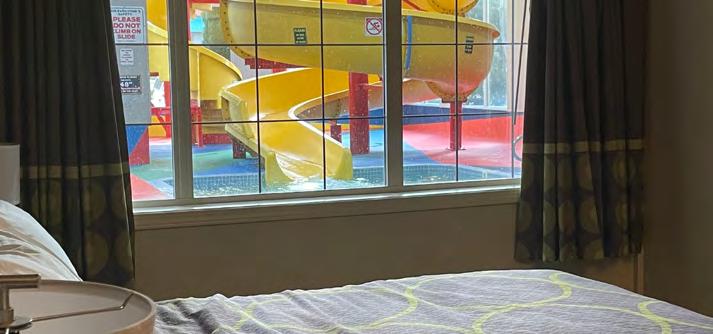
Derrick Knowles is the Publisher of Out There Outdoors. The trip featured in this story was partially sponsored by West Koot Route tourism partners.
crossing—catch sunbursts through clouds that lit up the endless mountain views. Back on land, we drove the short distance into the village of Crawford Bay, a one-of-akind collection of artisan shops and homes that make up a community that feels like it’s lost in time, a living museum experience that may make you question the things you spend
We continued down the road to the Forge and Furnace Gallery and Kootenay Forge, where we watched the blacksmith create metal hooks. We learned about how fabrics were once commonly made and watched traditional foot-powered loom weaving at Barefoot Weaving. Finally, we checked out the beautiful handiwork at Dog Patch Pottery. There’s also a jewelry shop, the acclaimed Black Salt Café, and other arts and crafts shops, which happened to be closed that day. In our era of instant Amazon gratification of cheaply-made, mass-produced crap, visiting Crawford Bay is a great reminder for adults, and an important lesson for kids, of how all of our basic necessities were once made.
We made one last stop as we meandered our way toward the border to check out a recommended roadside curiosity—the Glass House, which was built in the mid 1900s out of over half a million recycled embalming fluid bottles. Quirky, but cool, this place has a gift shop and optional tour
WHEN MOUNTAIN BIKING at 20-25 mph, a cyclist travels at 29-36 feet per second, according to a 2016 multiple-agency committee report on a bicycle-grizzly bear collisions near West Glacier, Mont.
That’s fast. Stopping 100 yards away, far enough from a bear to initially remain safe before turning around, is difficult on windy trails among thick forests. Yet, it’s not fast enough to outrun a grizzly bear, as one unfortunate mountain biker discovered as he rounded a blind trail corner in the Flathead National Forest. Grizzlies run upwards of 35 miles per hour, according to Yellowstone National Park biologists.
“The incident appears to be a surprise encounter with a bear due to the high speed and the lack of noise of bike travel, combined with a blind curve on a trail,” the Board of Review’s report stated. The cyclist, Brad Treat, a Forest Service law enforcement officer, crashed into the bear, flipped over the bear, and broke both wrists and his left scapula, the report found. Treat’s riding companion was behind Treat and able to stop. The partner said that the bear focused intensely on Treat as the companion left to get help. Neither had bear spray, firearms or cell phones with them. The grizzly ended up killing Treat.
Surprise encounters like that underscore experts’ mantras of noise, awareness and bear spray. One such expert, Chuck Bartlebaugh of Missoula, Mont., started the Be Bear Aware campaign in 1980 to raise awareness about bears and how to approach human-bear encounters. Bartlebaugh stesses that mountain biking in grizzly bear country must include safety precautions.
“People don’t use their voices enough on the trails,” he says. “When coming down the trails, people must project loud enough and know there’s a bear they might not see, but that it’s hearing them coming. I believe in making your presence known. Even if the bear doesn’t move off, it’s aware you’re there.”
Be Bear Aware works in conjunction with other local, state and federal agencies and organizations to increase public awareness of safety techniques to decrease wildlifehuman conflicts. The group travels to events with a trailer filled with safety information and even an activity that allows people to test bear spray quick-draw skills against a faux charging bear.
Bartlebaugh speaks from experience. “I had two tense bear charges and three notas-tense encounters that required bear spray,” he says. Bear sprays pack power via high-pressured capsaicin, extracted from chili peppers, and is a chemical irritant and neurotoxin to humans and animals. It burns.
The U.S. Forest Service (USFS) offers preemptive advice to bicyclists to avoid grizzly bears. The organization says paying attention and looking for sign of bear either in footprints or fresh scat is the first step. Bikers should not wear earbuds or headphones and should avoid riding early mornings and late evenings and especially avoid ripe berry patches. The USFS also notes that dogs and bears equal trouble, as dogs often complicate an encounter.
Lastly, the USFS emphasizes slowing down in bear habitat since bikes are fast and quiet, a bad combination in bear country. As Bartlebaugh noted, bikers should carry bear spray and the knowledge of how to use it.
Bartlebaugh’s team at Be Bear Aware has tested the various brands of bear spray and concludes, “The only bear spray that I consider good is Counter Assault created by Kerry Hunt.” Hunt trains Karelia Bear Dogs to haze bears away from popular places such as Logan Pass in Glacier National Park.
“If you are charged by a bear, yell ‘NO!’ loudly, emphatically,” Bartlebaugh says. He continues to instruct to spray the capsaicinfilled canister before the bear is on top of a person and spray downward so the bear runs into the cloud of spray. “And watch YouTube videos on how to deploy the pepper spray before heading onto trails,” he adds.
Spray won’t go 60 feet, he says, so people must practice and be able to judge a bear’s speed to get the feel for when it’s about 30 feet away. “The burning spray gets into its eyes, ears and nasal passages. Pepper spray inflames nasal passages, causes swelling. Bear cannot then take in a deep breath nor exhale well and will turn and run away.”
Not all pepper sprays are created equally, he adds. “I don’t recommend buying UDAP brand,” Bartlebaugh says. “It’s been recalled from Costco and Cabela’s because of numerous cans not firing. Its formulation is a private formula—and not premixed. One study
showed that UDAP canisters emptied all of the capsaicin within two seconds. The pepper spray was dispersed, leaving the rest of the product just propellent and linseed oil.”
The Interagency Grizzly Bear Committee advises: “Only purchase bear spray that is registered by the U.S. Environmental Protection Agency (EPA). The EPA registration number is displayed on the front label of bear spray canisters.”
Bartlebaugh’s final tip for mountain bikers is to pack the bear spray on waist band or hip holster, not chest. “We’ve seen numerous circumstances where bikers go over their handlebars and the canister is punctured and releases the bear spray, and sometimes, the biker breaks ribs or clavicle,” he says. All mountain bikers should look for 7-second + spray durations at 30-feet + distance. “Fun comes with a risk,” says Bartlebaugh. //
Editor’s Note: All of these backcountry trails are home to grizzly and/or black bears, so follow the advice of experts and be prepared and bear aware.
Whether you’re a shuttle enthusiast or a pedal purist, the Inland Northwest has no shortage of epic backcountry singletrack. The four rides below should be on any backcountry rider’s bucket list.

SEVEN SUMMITS TRAIL
This 18-mile north-to-south traverse of the Rossland Range (of which Rossland’s Red Mountain Ski Resort is a part) in southeast B.C. is perhaps the premier backcountry mountain bike ride in the region. In recognition of its destination-worthy dirt, the International Mountain Bike Association (IMBA) awarded it the Epic designation. Usually done as a point-to-point, the Seven Summits has it all: alpine terrain; long, grinding climbs (nearly 3,600 feet of cumulative elevation gain); and no-less-taxing talus-strewn descents.
KETTLE CREST
Eastern Washington’s premier subalpine bikeable route, the 45-mile Kettle Crest Trail, is outside the realm of one-day rides for all but the most hardy (or foolhardy). But Sherman Pass, which bisects the trail, allows for manageable out-and-back rides that start high and stay high. South of the pass, the 5.5-mile loop around Sherman Peak samples the scenery, and it’s easy to extend the ride south for as long as your legs allow. With some shuttle-rig logistics, the web of Kettle Crest feeder trails open up a world of point-to-point possibilities.
Descending almost 2,900 feet in five miles off Abercrombie Mountain, northeast of Colville, the North Fork Silver Creek Trail boasts some of the best backcountry aspen groves around—if you can slow down enough to notice them. With narrow, rough tread and tight switchbacks, this is a true backcountry experience. A trailhead campground gives riders the option to ride this trail’s rougher sibling to the south.
Oftentimes, shuttle logistics are the sticking point for point-to-point backcountry routes. The Ruby Ridge ride, northeast of Bonners Ferry, is about as good as it gets: a mostly-paved forest road to a pass on the Idaho/Montana state line. From Canuck Pass, the trail traverses subalpine tech for nearly three miles before diving into a forearm-frying six-mile 3,700-foot descent on buffed singletrack. This is grizzly country, but the hoots and whoops this ride induces should give them plenty of notice.

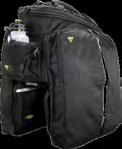 By Aaron Theisen
By Aaron Theisen
WHETHER IT’S A LONG DAY in the backcountry or a multi-day bikepacking trip, self-sufficiency on the singletrack is vital. In addition to bear spray, a few pieces of gear will keep your body and bike functioning far beyond your cell coverage.
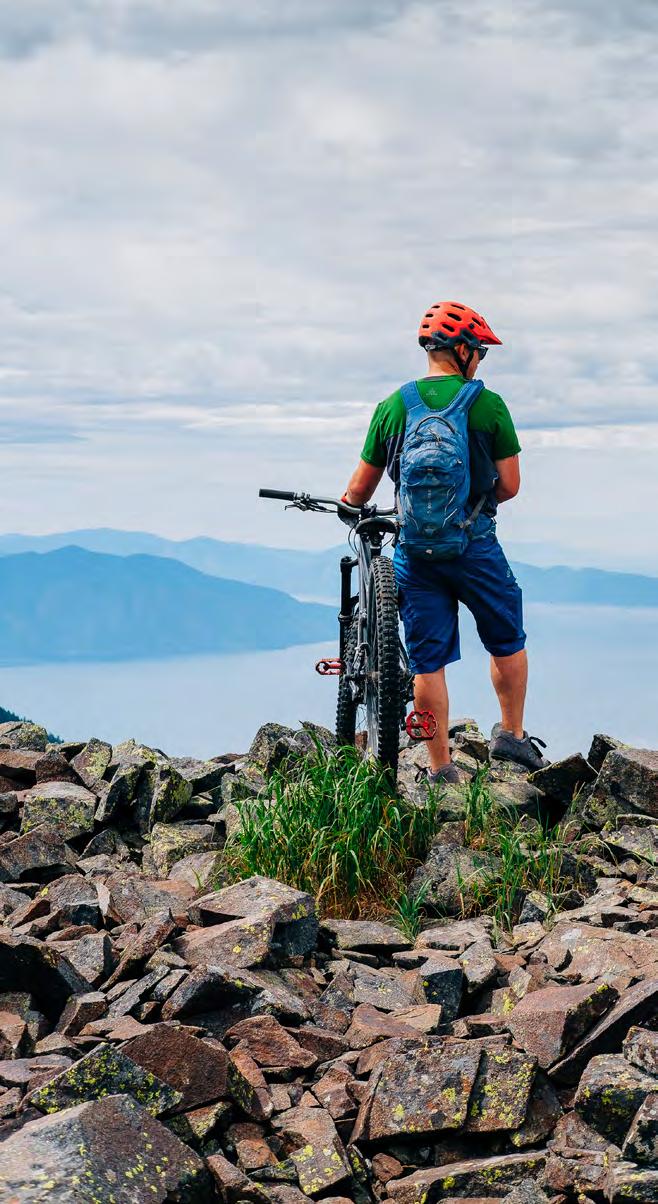
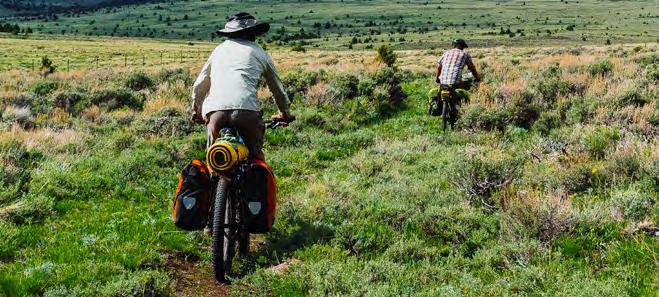
BAGS
Storing essentials on your bike rather than on your person improves your ride quality for a couple reasons: it reduces strain on your back, and the lower center of gravity improves bike handling. Bike bags come in as many shapes, sizes and mounting points as the riders who use them, but there’s a reason the Revelate Designs Mountain Feedbag is a classic. Surprisingly spacious and secured by a drawstring enclosure system that can be opened and closed one-handed, the Feedbag can store a large water bottle or a day’s worth of snacks, and the handlebar mount makes it exceedingly convenient for in-flight refueling.
WATER FILTRATION
Once you start outriding the carrying capacity of your bottles or bladder, a water filter is a must. Fortunately, the days of squatting over a streambank for endless minutes cramping your forearms on a pump system are largely gone. Camelbak’s collaboration with Lifestraw combines filtration with water storage for unmatched ease of use. The filtration systems come in two iterations: filters that attach to Camelbak’s reservoirs, and water bottles with a built-in filter. Both rely on a two-stage filtration system that removes both the harmful bacteria, parasites, and microplastics and the merely unpleasant bad taste and foul odors from untreated water sources.
In the mountains, foul weather can strike

any time. And a summer rain shower might be refreshing in the moment, but staying the night outside in wet gear, whether by choice or by circumstances, can quickly turn treacherous. The ideal set of rain gear will depend on your predominant riding conditions: fully waterproof layers will fully shed the elements but not pack as small or light, while compact water-resistant items will take the chill off from summit winds and light sprinkles but buckle under heavy downpours. The Specialized Trail Rain Jacket features fully waterproof construction and, while not pocket-portable, will still fit in a pack.
Running a tubeless setup in your tires is a must for all-day or multi-day adventures through rough terrain (i.e., anywhere you plan to go in the backcountry). Although tubeless tires will shrug off small holes, large gashes can overwhelm sealant. A set of tubeless plugs—Dynaplug is an excellent choice, although Stan’s and Muc-Off have quality offerings too—will take care of the big stuff: simply squeeze a plug into larger holes or tears and give the tubeless sealant something on which to bond. (Still, a spare tube in your pack never hurts, either.)
Fun fact: grizzly bears are still faster than you on your bike. Trail bells provide a steady symphony of noise to give creatures—and fellow trail users—ample warning of your approach. Modeled after a traditional cowbell, the Timberbell has adjustable intensities, and the clanger can be locked down for times you’d like it to be silenced. Bonus: you have your own builtin cheering section on the descents. //
Sponsored by Wheel Sport Bicycles, Spokane’s E-bike headquarters. Check out their huge selection of e-bikes at Wheelsportbikes.com.



WE HUMANS are a competitive bunch. I’m sure you’ve heard the old saying that the first bike was invented on a Monday, the second on a Tuesday, and the first race on Tuesday afternoon. Okay, perhaps your version is different, but you get the idea. We’ve been seeing who can go faster, throw farther, lift more, etc. since the dawn of time, and today is no different.
All of the world’s competitions have their proverbial climactic event. The Super Bowl. The Olympics. The Stanley Cup. The World Series. The Tour de France.
This July, the cycling world returns to the roads of France for the 110th edition of the Tour de France, or “Le Tour” if you want to sound all cool and Euro (best said sipping espresso with tight pants and a good dose of attitude). For 23 days, starting July 1 in Bilbao, Spain and ending on the picturesque Champs-Elysees in Paris, cycling’s best converge to battle over mountains, cobblestones, heat, and both good and bad luck.
“But wait, you said it is the Tour de FRANCE, but it starts in Spain?!?”
Yeah, there are times that the race actually pokes out of its namesake country, mainly for financial gain and a bit of mixing up the course to keep everyone on their toes.
So, long introduction aside, what does one need to know to comprehend this event that so many people of the world passionately view and cheer with almost lunatic frenzy?
(No, really: the audience for the Tour eclipses the Super Bowl with over 15 million spectators attending, and over a billion television viewers, compared to the Super Bowl's 70 thousand on-site fans and 200 million television viewers.)
Let’s break it down. Le Tour is known as a stage race. Each individual race day, called a stage, is a competition within itself, with daily victors and the rewards that accompany. However, each day is timed, so, for example, if you, dear reader, and I were

competing against each other, and you finished 10 seconds ahead of me today, and I, for some reason, found the fountain of youth and finished 20 seconds ahead of you tomorrow, I would be in the lead by 10 seconds. Make sense? That’s the simple way of understanding. Each day is a race, but the overall fastest time is what decides it. Stages for this year’s edition range from just over 13 miles to over 120, and can be mass start or individual “time trial” efforts against the clock. Yes, they do it in one go. Yes, their butts get tired.
“So, you’re saying that if I win a stage, I’m not the winner of the Tour (Sorry, LE Tour)?”
Correct. Although, winning an individual stage has such high merit and accolades to reward the individual rider guaranteed national pride as well as job security.
Now, for the jerseys. When Le Tour was created, it was difficult for spectators to understand who was in the lead. All they could see were sweaty, gritty-faced, emaciated athletes pedaling by. It was then that the organizers decided they would drape the current leader in a jersey resplendent in the color of the main sponsor, a French newspaper, L’Equipe’s pages color, yellow.
But things were not all right. Many of the riders who couldn’t contend for the overall prize became frustrated and wanted to have something to keep them (and their sponsors) happy.
This is where the other key competitions were included in the event. A green “sprinter’s” jersey was awarded to the rider achieving the most points at key locations along the day, including each day’s finish line. A red polka dot jersey was created to award the svelte climbers who were awarded points at the top of each mountain. A white jersey for the top placed rider under 23 years old, all being included to create a reason for all participants to challenge for something.
Cycling appears to be a sport of individual
effort. This is partially true. I’m sure you’ve seen how closely they all ride together? Well, that’s because the draft created by following another can reduce the strain of up to 40% compared to the rider in front. Just like getting passed on the highway by a semi, except this semi is a 5% body fat Italian in skin-tight Lycra.
This is where teamwork comes into place. Without a proper team, no one person can win a bike race. There are multitudes of situations that can change the dynamic of a race, and the strongest rider doesn’t always win. Tactics can trump fitness.
So, what does this all mean? It takes a bit of time to grasp the overall race, but just like any other sport, the personalities, national pride, drama, history and joy are all rewards of spending a bit of time to gain perspective of the sport that a large portion of the world endears itself to. Pick a team, choose your favorite riders, and pour a proper espresso. //
Patrick Bulger has been an active and competitive cyclist for far too long. He is also the host and creator of The Packfiller Podcast, a weekly show featuring the world of road, mountain, and gravel cycling. He has 17 bikes.
Peloton - The group of riders competing in the race. Usually designated as the main pack.
Maillot Jaune - French for “yellow jersey.”
Dropped - Left behind by stronger riders.
Echelon - A diagonal method of drafting when the wind direction is coming from the side.
G.C. - General Classification, or the overall timed rankings.
Time Trial - A race or stage that is done against the clock on an individual basis. (This is where all of the super aerodynamic stuff is used to make bike riders look like rejects from a sci-fi movie.)
Breakaway - A group of escapees in a stage or race.
Categorized Climb - Climbs are given a numerical ranking based on their severity, from 4-1, with 1 being the most difficult. (However, there are more difficult rankings simply called “HC” or Hours Categorie (beyond category).
Domestique - A team rider that is willing to sacrifice his/her chances for the team leader’s victory.
Lead Out - A method of getting a sprinter to the line without having to put his/her nose into the wind until the very last minute.
Musette - A bag full of food/drinks that is handed to the riders at designated “feed zones” throughout the course. These riders eat a lot.




choose custom nutrition or from our menu:
IMMUNITY BOOSTING:
This immune-boosting elixir will speed your recovery and can help you avoid getting sick in the first place– a must for cold and flu season!
Ingredients: 500ml Normal Saline, B-Complex, Vitamin C, Zinc
HANGOVER OR INJURY:
Like to play hard? We do too! This treatment helps your body recover from all of your adventures. From sports injuries to combating the debilitating symptoms of hangovers, this infusion has you covered!
Ingredients: 500ml Normal Saline, B-complex, Glutathione
RELAX:
(Migraine, Menstural Cramps & Constipation

Sometimes the best thing we can do for our body is nothing at all. For all of our time-saving modern conveniences, we are busier and more stressed than ever. This soothing potion is infused with Magnesium to help your muscles relax and if that isn’t doing the trick we can add Toradol.
Ingredients: 500ml Normal Saline, B Complex, Calcium, Magnesium
YOUTH ELIXIR:
A beautifying tonic to stimulate collagen production and reduce the oxidative stress that causes aging. It reduces wrinkles, brightens and strengthens hair & nails, and hydrates your skin cells. Want more collagen? Add more vitamin C! Vitamin C activates the enzymes that produce collagen, which forms all connective tissue in your body.
Ingredients: 500ml NS, Biotin, Vitamin C, B-Complex, Glutathione
ETHAN BEGAN casting with City Hall still in view. On the oars, Marc gazed at the downtown skyline and maneuvered the raft so I could get a good photo. “It’s pretty rare to have this kind of fishing within city limits,” he said. Ethan nodded, watching the cars race over the Monroe Street Bridge. “I wonder how many of those people in cars have ever been on the river,” he mused. “I bet not many.”
Ethan Crawford is the owner of Fly Fish Spokane, one of two outfitters (along with Silver Bow Fly Shop) regularly offering fly fishing trips down the Spokane River. He and Marc Fryt, one of his exceptionally knowledgeable guides, had invited me on their inaugural float. Marc handed me one of several rods he had prepared for the day tied with an orange-colored bead-head nymph and dangling below that a neon green stonefly pattern. “Our goal is to make it easy for people to fish their local river,” he said. We hooked into our first fish near the Sandifur Bridge. It was, like most of the fish we caught that day, a redband trout, one of the Spokane River’s unique species of rainbow trout, identified by a distinctive red line along its flank. We paused to admire the fish before removing the barbless hook and sending it on its way. “There are fewer fish per mile than the trout streams in Montana and Idaho, but if you know where to put your fly, you can catch some big fish on this river,” Marc explained. As we floated, he pointed to productive pocket water, slower moving water behind rocks and around bends and curves in the river’s topography. “Put your fly there,” he said. “Try there. Yes! Aaaand SET!” Before long, I was reeling in a steady haul of trout.
Ethan graduated from Lewis and Clark High School in 2021 and was handed the
reins of Fly Fish Spokane earlier this year. I asked how he got into the sport. “My dad bought me a fly rod,” he said. “He didn’t fish himself, but he’d take me out and we’d spend time together on rivers and lakes. Unfortunately, he was diagnosed with basal cell carcinoma and died when I was 10. Fishing, I don’t know. It reminds me of him.” I nodded and cast my line into a pocket of flat water. It was midday and the water had taken a golden hue, turning the rocks and boulders below the surface shades of amber and cream. I, too, learned to fish from my dad.
We chatted and cast our flies into the afternoon, arriving at the water treatment plant feeling satiated and peaceful. Ethan yanked a piece of plastic from the rocks and added it to a substantial collection of trash that he and Marc had collected that day. I asked him what he wanted people to know about the Spokane River. “The river is for everybody,” he said. “The more people fish it, the more they will love it. The more they love it, the more they’ll take care of it. We want to help people get to know the rivers and lakes around here. We want to make it easy to get started.”
To learn more about fly fishing lessons and guided floats on the Spokane River, visit Fly Fish Spokane or Silver Bow Fly Shop. Fly Fish Spokane is affiliated with The Fly Project at North 40 Outfitters in Airway Heights. //

Heidi Lasher is a steadfast admirer of the Spokane River. Over the past five years, she has canoed, rafted, paddleboarded, or swam the length of the river from Coeur d’Alene Lake to its confluence with the Columbia River. She is an ardent, impatient, and secretly competitive angler, much like her dad.




IN JUNE , I took my family to test the trail on the Route of the Hiawatha. We were of various ages and biking abilities, from my 84-year-old grandfather, who bikes at his gym, to my parents, who don’t ride bikes, to my younger brother and sisterin-law, who occasionally race in triathlons. My immediate family included my 3-year-old son and 1-year-old daughter, who were pulled in a Burley bike trailer behind my husband on an e-bike. You could say our group ran the gambit.
The Saturday we chose favored us with cool, overcast summer weather. I had only done light research on the trail before arranging rentals, shuttle passes, and hauling my extended family up to the trailhead. My first surprise was the Taft Tunnel, the longest tunnel of the route at 1.66 miles. It is the first tunnel you’ll experience when starting at the east portal entrance to the Hiawatha, which is in Montana and a different time zone if you’re coming from Spokane.
Headlamps or bike lights (400+ lumens) are required on the Route of the Hiawatha precisely because of the Taft Tunnel and the lesser tunnels that follow. It’s completely dark inside. For a summer ride, it was also shockingly cool. A Hiawatha trail marshal told us to look for the thermometer at the middle of the tunnel—it hovered at 50 degrees, cold enough to start numbing my hands by the end of our long, echo-y ride through the dripping, dark and muddy tunnel. (For this reason, even on hot summer days, I’d recommend packing a jacket.)
When we emerged into the light after Taft Tunnel, we were treated to a waterfall. After turning off our bike lights to save power, we felt happy to pedal in the open, soaking up the rich, woody smell of the Idaho backcountry. It wasn’t long before we hit another tunnel. There are 10 tunnels in total. Some are short enough to see the light from the other end when you enter, which our group tended to favor. The variation of trail features keeps this ride interesting.
Soon we found our party spinning over wide, wooden trestles (seven in total), an assortment of pines descending in spires beneath us. We stopped to comment on a tree with beautiful, fan-type foliage: a Grand Fir. We saw cedar, tamarack, and other trees we didn’t know. When we stopped to eat the sandwiches we had packed, we noticed the chipmunks and butterflies.

While we exchanged greetings with numerous bike groups on that busy Saturday, we rode the trail almost entirely on our own. Like most places in Idaho, there was room to spread out, making this a backcountry ride that lends a solo-in-trees feeling to be treasured.
Interpretive signs along the route explain the trail’s rich history from the time when the Milwaukee Railroad was operating. I also discovered my family had a history with the trail, which was the reason it had been a goal of my grandfather’s to complete long before I went to write an article about it. In 1935, on the heels of the Depression, his father rode the rails hobo-style along the same route, heading to Idaho to look for work from the plains of South Dakota.
While we pedaled, my grandfather mused on how we were looking at the same sights his father would have seen on his all-in journey, off to start a new life. My grandfather was born in St. Maries,
Idaho, three years later, so the trail was the path my family took into the Inland Northwest many years ago. It added significance to complete the ride with my grandfather and kids this summer.
A few tips from the young and the old on the tunnel rides: turn on a tent light or kids’ lantern in the bike trailer before entering each tunnel to give kids some light. If you wear auto-tinting glasses, like my grandfather, he’d advise removing them before each tunnel, as his didn’t adjust very quickly and contributed to a crash he had in the first tunnel. That early crash made my grandfather doubt whether he could complete the ride. After a bandage, the open, scenic views of the trail buoyed his spirits, especially the stretches where he could coast without pedaling. (Staff from the Hiawatha bike the route every hour to check on riders in case of emergency, but packing your own Band-Aids like my dad had is a smart call.)
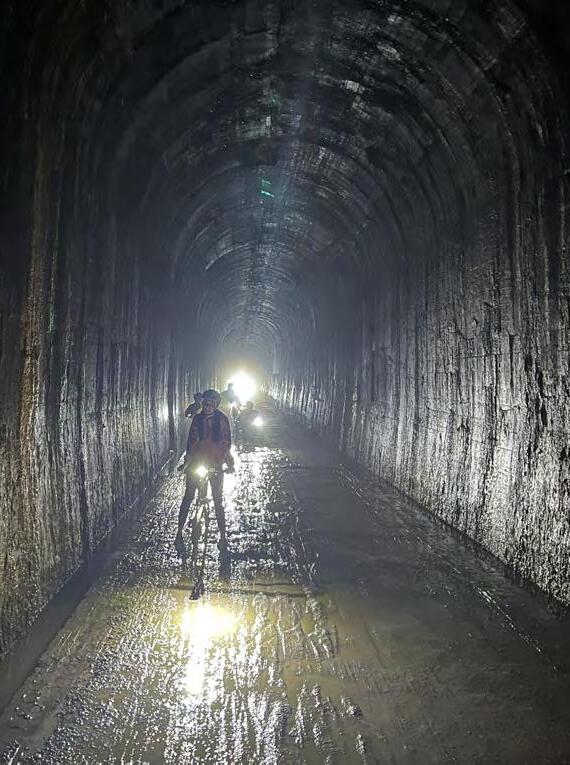
After riding the trail as a mother with young kids, I’d recommend packing snacks, water bottles, sweaters for the tunnel rides, and factor in time to stretch your legs. On the other end of the age spectrum, my grandfather would recommend to anyone 70+ who wants to ride that they should try to be in the best physical shape possible before going, adding that any conditioning to strengthen the legs and back would be helpful.
Biking is not my primary outdoors pursuit, so I rode this trail on my husband’s road bike. For future rides, I’d recommend a gravel bike or mountain bike, as the rock and dirt path became tiring terrain to navigate with thin road bike tires. You can rent bikes from Lookout Pass to make sure you get the right type of bike and fit. If your bike doesn’t have a fender, you’re also likely to end up with a mud stripe up your back, so a change of clothes for the car post-ride is advised.
Our extended family group rode the Hiawatha slowly with several stops and finished the ride in 4.5 hours. (There were riders in spiffy bike outfits whom I’m sure finished in closer to 2 hours.) Plan ample time to complete your ride and remember that this experience should be more about enjoying the nature around you than completing a speed goal. One of the joys of this downhill ride was the sensation of easily gliding along the tree-lined trail. I found myself looking forward to each new tunnel and trestle.
Overall, the Route of the Hiawatha is an accessible way to experience the backcountry

and a reminder that biking is just pure fun. To book your trail pass and shuttle ticket, call Lookout Pass Ski Area (208.744.1301) or visit Ridethehiawatha.com. You can bring your own bike or rent a bike for an additional cost. The trail will be open until September 17 this season.
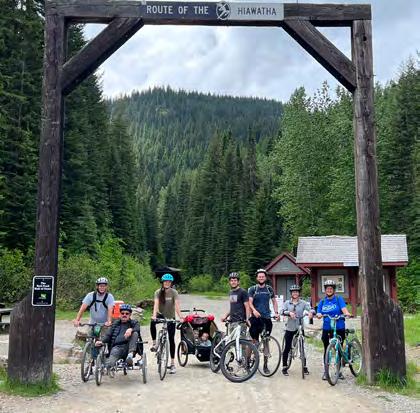


On the day of your ride, you must stop at Lookout Pass (I-90 exit 0, on the Idaho-Montana border) to pick up your physical trail pass and shuttle ticket before going to the trailhead. Rentals are good all day long, but it is best to hit the trail before 2 p.m. to ensure you make the last shuttle. While the shuttle takes riders back up most of the elevation, it stops just shy of the infamous Taft Tunnel, so all riders from the east portal trailhead will ride this long tunnel twice. It is unforgettable to ride through the dark with the knowledge that all the rock and debris that makes a mountain sits above you. //
Lisa Laughlin is the Managing Editor of Out There Outdoors. She’s gotten back into trail running this summer and rolled her ankle several times accordingly. She lives and works in Spokane.
OPPOSITE PAGE: DIZZYING HEIGHTS AT A TRESTLE ON THE ROUTE OF THE HIAWATHA. PHOTO: BRYAN HEER
TOP RIGHT: RIDERS CROSS SKY-HIGH TRESTLES WITH GREAT VIEWS OF THE LAND. PHOTO: TOM HEER // TOP RIGHT: THE ROUTE OF THE HIAWATHA IS GREAT FOR FAMILIES WITH VARYING SKILL LEVEL. PHOTO COURTESY OF LISA LAUGHLIN // FAR MIDDLE: BIKING THROUGH A SHORT TUNNEL ON THE TRAIL. PHOTO: LISA LAUGHLIN // MIDDLE: TAKING THE SCHOOL BUS SHUTTLE BACK UP TO TAFT TUNNEL. PHOTO: SUE HEER // TAFT TUNNEL IS A DARK AND MUDDY RIDE. PHOTO: BRYAN HEER
I nearly always backpack solo. The adventure and admiration of nature largely replaces any need for social interaction. But I often find myself wishing for someone to banter with after setting up camp in the evening. Pegging a reason for this is difficult. But usually by the time darkness falls and I crawl into my sleeping bag, my thin layer of tent fabric provides a feeling of insulation from the outside world, and the prospect of a good night’s sleep after a long day of hiking helps to sooth any worries.
While I’ve done plenty of solo backpacking and hiking, as a longtime eastern Washington hiker and resident, it’s almost embarrassing how little hiking I’ve done in the Cascade Range. Recently I decided to start tackling this big debt, and first up was a 5-day solo backpacking trip in the Alpine Lakes Wilderness.
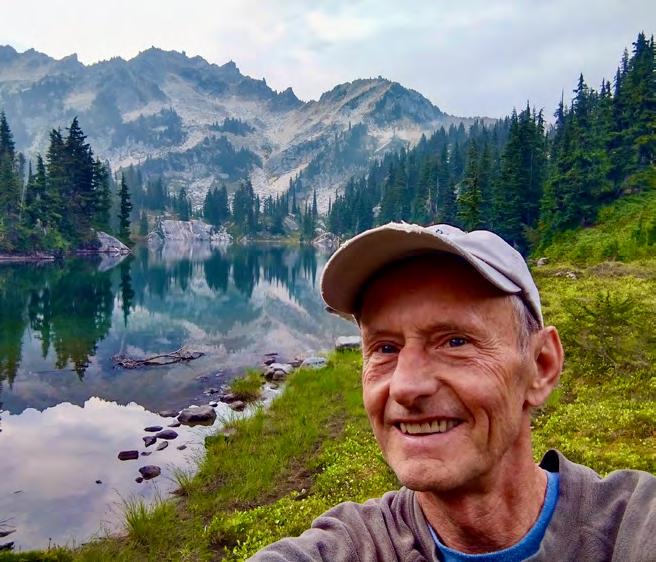
Heavily used areas of the wilderness have restricted camping, and available permits must be obtained in advance. I chose an area with less use and self-issued permits that you fill out at the trailhead, which was super accessible at Stevens Pass on Highway 2.
Starting my hike at 9:30 a.m. by heading south on the Pacific Crest Trail, it was soon apparent how far I was from being an early bird. Streams of hikers were coming at me, finishing their hike soon after I’d started mine. I found out this time of year is when PCT thru-hikers reach this area too, with
many stopping at Stevens Pass to re-supply. One group was getting a hotel room in Leavenworth for a short break. I talked to two parties who’d started the first week of April at the US-Mexico border. It was the first week of September, so they’d been hiking for five months.


Reaching a trail junction at mile 3, I left the PCT and traffic diminished greatly. Though my first night’s destination was a modest 10-mile hike in, the last 2 miles had a 2,000-foot elevation gain. Shouldering a full backpack, I had to take frequent pauses. I arrived at Chain Lakes and unloaded at the first campsite I found. There would be no rambling along the lakeshore looking for the most scenic spot. Unexpectedly, I had to slap a few bothersome bugs while setting up camp, though things got better as my trip progressed. They’re more of a problem in the Cascades than I’m used to in the drier areas of eastern Washington. I give this issue attention because bugs, along with inclement weather, are big factors in backpacking enjoyment. Add in easier stream crossings because of late summer’s low flows and it’s my opinion that August and September are the best time for backpacking.
The next morning, I trudged on, going deeper into the wilderness. My second night was at a pretty, timber-shrouded lake with plenty of campsites but none occupied except mine, which brought some unease.
After a solitary night, I awoke to another
beautiful day, and my evening edginess was gone, as always happens with a new day. After packing up and heading out, I hiked to another lake not too far away and set up camp. Carrying a light daypack, I explored the area and went off-trail to scramble up a couple of peaks. At a high-elevation pass, I conversed with a couple of women, one who looked to be in her mid-70s. As a fellow older hiker, I was hoping she’d reveal her age as we talked. A multi-day backpacking trip into the mountains is a tough gig even for the young. Alas, she didn’t, but I learned she and her friend were camped at the same lake as myself. Come nightfall, I wouldn’t be the only camper for miles around that night.
I enjoy hiking alone, so my occasional
foreboding restlessness after I’ve set up camp in the evening is difficult to explain. If I hurt myself or became incapacitated, having help nearby would be reassuring. Trouble with an aggressive animal is a possibility, but has never happened in my years of camping experience. As best I can figure, being in the company of others is a natural human inclination. After a full day of solitary hiking, the desire for company comes about strongly, even if it’s only company by proximity without interaction.
The next day, I began my two-day journey back to the trailhead. I hiked an open ridge top that paralleled the trail, giving me great views and an interesting landscape to explore until challenging rock formations
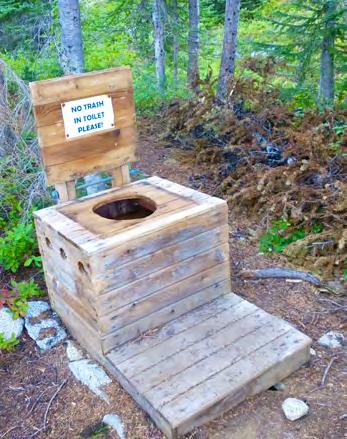
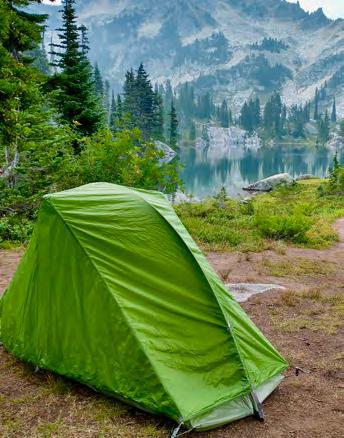
made going difficult. I descended a steep slope and got back on the trail.
On my last night out, I experienced something new. I awoke in the early morning and couldn’t get back to sleep for more than an hour. It was very still—no wind, no moving water, no noise at all. At home, the quietest time of night is punctuated by a couple of clocks gently ticking, the refrigerator motor, the occasional distant sound of traffic. But the entire time I was awake, I heard not a sound. Perfect stillness and silence. It really struck me.
As I drove home the following evening, nearby fires were growing and smoke would envelope the Cascades. The Bolt Fire would close Highway 2 for weeks. I’d hit the perfect

window to avoid bugs, smoke, and inclement weather.
I’m sometimes reluctant to do solo trips because of a nagging worry of some kind of unpleasantness happening. However, as I hike and explore a setting that sparks such admiration, reverence, and joy, it hits me how glad I am when I overcome my reluctance and get out on the trail. Despite the exertion and occasional discomfort, spending five days backpacking alone in the wilderness was a pleasant stint of an adventure. //
James P. Johnson was born, raised, and is a longtime resident of the Inland Northwest. He’s the author of “50 Hikes for Eastern Washington's Highest Mountains.”







 By Jon Jonckers
By Jon Jonckers


LONG BEFORE Spokane received any permanent settlers, Etienne Eduard Laliberte (later Steve Liberty) homesteaded the west side of Liberty Lake in 1871. The area surrounding the marsh was developed into a cattle ranch. The rancher diverted Liberty Creek (originally named Kalez) into a hand-dug channel along the eastern edge of the marsh. Later the creek was diverted into another hand-dug channel along the western edge. Over the years, the lake was loved and enjoyed by many people throughout the region. In fact, it was loved just a little too much.
From 1900 through 1924, Liberty Lake featured several dancehalls, hotels, and resorts. The new electric trainline delivered scores of people from Spokane and Cheney. In 1940, Department of Fish and Wildlife (WDFW) introduced large mouth bass and carp. Soon after, WDFW introduced perch, two species of sunfish, small mouth bass, crappie and bullhead. But these non-native fish, alongside several underground septic issues, sent Liberty Lake into a tailspin. Those elements combined proved to be the first of many epic failures.

Admittedly, hindsight is 20/20. There are over a dozen reasons why we shouldn’t judge the past based on modern knowledge. But it’s worth mentioning that WDFW poisoned the lake with toxaphene in 1965 to overcome some fish problems. When this treatment failed, the lake was poisoned several more times to combat the algae blooms and decaying aquatic weeds. Rotenone poisoning was the popular choice in the early 1970s. Unfortunately, each solution introduced a
new problem.

Thankfully, the Liberty Lake Sewer District formed in 1973 by a vote of the residents. Three commissioners were elect ed: Dennis Ashlock, Art Toreson, and Bill Lancaster. The same year, Washington State University participated in a water quality study of the lake and the creek. Along with a pending sewage collection system, these three events were pivotal in saving Liberty Lake. By 1982, with a wastewater treatment plant completed, the lake showed major signs of improvement. By 1984, the locals reported they could finally see the bottom of the lake again.
Saving Liberty Lake required thousands of other people working together with a common goal. This doesn’t mean it was a seamless process throughout the 1980s. However, reviving the lake did show that it was possible to tackle other major regional projects. For example, Dennis Ashlock was also a charter member of the Centennial Trail Steering Committee, and he labored tirelessly to make the Centennial Trail possible. Ashlock passed away in 1998 at the age of 59, but he will always be honored for his efforts to save Liberty Lake and build the Centennial Trail thanks to the bridge that bears his name at the Islands Trailhead near Plante’s Ferry. Thank you Denny! //
A quick search on the Out There Outdoors website brings up over 100 articles written by Jon Jonckers. He's been a constant contributor since 2006, and he still enjoys sharing his love for the region with anyone willing to listen.


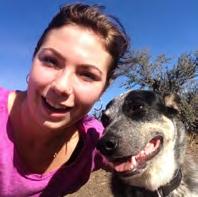
The Inland Northwest is home to hundreds of lakes within an hour's drive in any direction. When the temperatures start to rise, it’s time to get out on the lake! Pick something in the list below you might enjoy, then find the corresponding number for details on which lakes make the best fit for your activity.
1. Go Surfing
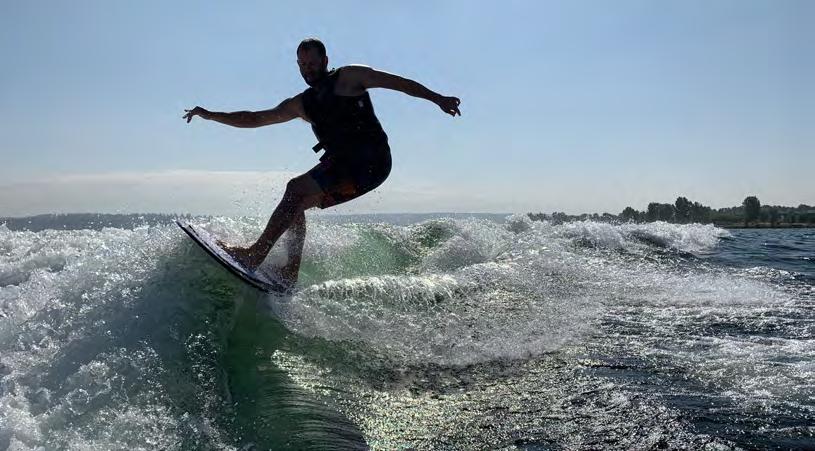
Wake surfing is a water sport in which a rider is pulled behind a boat, riding the boat's wake without being directly pulled by the boat. The big difference between wake surfing and water skiing is the speed. For wake surfing, the boat only goes about 8-10 MPH, unlike water skiing at 20-40 MPH. This makes it much easier for children or older adults to enjoy the sport. After getting up on the wake, you can drop the rope, and ride the wave's peak in a fashion reminiscent of surfing. The only types of boats safe to surf behind are those with the propeller located beneath the boat rather than behind the boat. You can also try the growing sport of hydrofoil surfing on lakes.
2. Hike The Lake
Whether it’s an all-day hike around or up to a lake, or a short hike from your car to the beach, the idea is to get out and look around. The Enchantments are considered one of the most beautiful and scenic wilderness areas in the Pacific Northwest and home to Inspiration Lake, Perfection Lake, and Crystal Lake, where nature has carved out an alpine paradise of granite worn smooth by glaciers. Spirit Lake in Idaho has a relatively new hiking and biking trail system around the lake.
Dusty Lake and the Ancient Lakes, located in the Quincy Wildlife Recreation Area, are famous for their unique beauty, deep coulees, and even a waterfall, all in a desert landscape.
Lower Gospel Lake in the Gospel Hump Wilderness in Idaho’s Wind River Range has remained somewhat off the radar for hikers, it’s tough going, but you’ll be rewarded with an uncrowded lake and excellent trout fishing.
All three of these websites will help you find great hikes around lakes according to your desired location and related activities.
• The Washington Trails Association (Wta.org)
• Fat Map (Fatmap.com)
• All Trails (Alltrails.com)
3. Boat in for Happy Hour and Dining
There’s nothing better than pulling your boat up to the dock and hopping off for a happy hour, lunch, or dinner. Here are a few lakeside favorites worth trying.
Cedars Floating Restaurant or Tony’s on Lake Coeur d’Alene serve an array of drinks and dining options. The Cycle Haus in Harrison is also a great boat-in favorite.
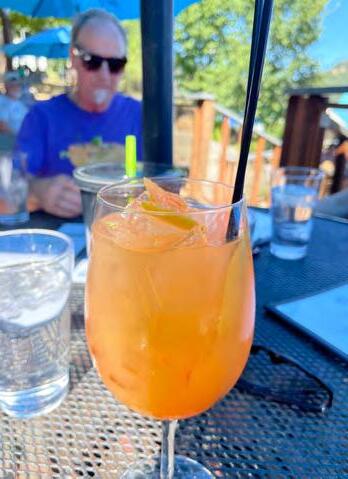
The Raven on Flathead Lake in Montana is a premier spot for dockside dining.
The Floating Restaurant in Hope on Lake Pend Oreille (ID) has been a local landmark for over 35 years.
The Dock n Duck on Kootenay Lake in Balfour, BC offers great dining and comfy lodging.
The Blue Diamond Marina and Resort on Priest Lake (ID) offers lakeside lodging and The Waterfront Restaurant & Wine Bar.

• Check out Dockwa.com to find marinas with dining options, just about anywhere! Dockwa.com
1 3 5
4. Go Skydiving
4
Take the leap with Sky Dive Chelan and get a whole new perspective on the beautiful vineyards of the region around Lake Chelan. The scenic ride to altitude provides stunning views of Lake Chelan, the Cascade Mountains, and the Columbia River. After your adventure, swing by your favorite tasting room for a much-needed glass of wine!

5. Join A Boat Club
The Carefree Boat Club on the Spokane River in Post Falls, Idaho, is all about boating without owning. To join the club, you’ll need to pay an initial fee and annual dues. You can use just about any type of boat, all geared up for you and ready to go! They even have kayaks, jet skis, or paddle boards. You don’t have to worry about insurance, maintenance, or storage, and you can try different types of boats. You don’t have to know how to boat, because membership includes training by certified instructors.
6. Explore Nature and Wildlife
There is an endless amount of wildlife to explore in the greater Inland NW. The most common animals found around lakes include fish, snakes, herons, otters, beavers, muskrats, turtles, frogs, ducks, eagles, and salamanders. However, depending on where you are, there may be more. It’s best to check websites for the National and State Park Services, Fish and Wildlife, and Fish and Game if you’re interested in exploring the wildlife on your next trip to a lake. Here are a few suggestions worth learning more about.
Potholes Reservoir, located in central Washington, is in the Columbia Basin Wildlife Area. Wild Horse Island Unit at Flathead Lake State Park in Montana is known for its wildlife including wild horses, bighorn sheep, mule deer, eagles and falcons.
Wallowa Lake in Oregon is known for its diverse wildlife, nearby including black bears, badgers, cougars, coyotes, elk, lynx, minks, and wolverines.
7. Learn about Tribal Lands and Heritage
There are seven Inland NW tribes that at one time made part of their living off the bounty provided by nearby lakes. The Colville, Kalispel, and Spokane in Washington, the Kootenai, Coeur d’Alene, and Nez Perce in Idaho, and the Flathead in Montana. Learning about the heritage, culture, and experience of Native Americans in your area is a wonderful way to learn about the contributions of the region’s first Americans.
9. Go for a Scavenger Hunt
You can look for scavenger hunts in your area, or you can create your own. Showing your kids or grandkids that you love the outdoors will teach them to appreciate it as much as you do. Teaching them to be observant and to notice nature will carry over into other aspects of their lives. There are websites for buried treasure, ghost towns, and geocaching, or you can create your own scavenger hunt by hiding items in your boat, camp, or car and seeing who can find them based on clues provided throughout your trip.
10. Enjoy Live Music
If you have a guitar, harmonica, or recorder, bring it along and serenade your friends and family, or join in with the frogs. There’s nothing better than playing music while floating along in a canoe. However, you can also enjoy plenty of live music at some of these great music festivals.
• Bluewaters Bluegrass Festival on Medical Lake (Bluewatersbluegrass.org)
• Kaslo Jazz fest on Kootenay Lake (Kaslojazzfest.com)
• Bands on Boats Coeur d’Alene Lake (Cdacruises.com/bands-on-boats)
• Under the Big Sky Fest, MT (Underthebigskyfest.com)
• Whitefish Songwriter’s Festival, MT (Whitefishsongwriterfestival.org)
• Sunbanks Rhythm & Blues Festival, Grand Coulee (Sunbanksfestival.com)
11. Participate in Lake Clean-up Days
It’s always important to clean things up and leave everything as you found it, but a great way to do your part and teach your children the importance of keeping our natural surroundings beautiful is to participate in a volunteer clean-up day. All the lakes have them. Here are a few to keep in mind:
• Flathead Lake Flathead Waters Clean Up
• Stewards of Wallowa Lake Clean Up
• Lake Pend Oreille Clean Up Day
• Priest Lake Spring Clean Up
12. Discover a Lake Monster
In McCall, Idaho, there’s a lake monster known as “Sharlie.” The Native Americans were said to fear the calm, seemingly bottomless waters of the Big Payette Lake and told stories of an evil spirit that lurked in its hidden depths.
Sightings report a creature at least 35 feet long, with a dinosaur-type head, pronounced jaw, humps like a camel, and shell-like skin. The infamous monster has been supposedly seen many times, and in 1954 McCall residents had a contest to name the monster, now fondly known as Sharlie.
13. See Fireworks on the Water
Many of the lakes have firework displays on the 4th of July, but here are some of the biggest ones.
• Lake Chelan’s Rockin Fireworks Display
• Festival of America at Grand Coulee
• Lake Coeur d’Alene has the largest Fourth of July celebration in northern Idaho

• The Fourth of July Mountain Music Fest on Payette Lake in McCall
14. Go Ziplining
Soaring along the treeline is an exciting way to see the lake and the beauty that surrounds it! Here are some thrilling, action-packed zipline tours to explore.
These websites will get you started in your search for places to find local wines or beers on your next lake destination. By going to local wineries or breweries you can relax, meet new friends, and grab some supplies for the rest of your trip.
• Washingtonwine.org
• Lakechelan.com/drink/wine-tasting
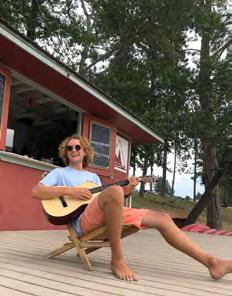
• Visitidaho.org/travel-tips/how-to-tour-northern-idahos-award-winning-wine-country
• Glaciermt.com/wineries
• Bigskybrewscruise.com
• Glacierparkcollection.com/glacier-national-park/stories/the-best-breweries-in-flathead-valley
• Visitnorthidaho.com/stories/breweries
• Washingtonbeerblog.com/eastern-washington-breweries
• The zipline tour at Tamarack Resort at McCall Lake includes eight zip lines and two suspension bridges. (Tamarack, Idaho.)
• Experience the feeling of flight while overlooking the sparkling Columbia River from the high mountain cliffs at Tunnel Zip Lines, Castle Vineyards (Lake Chelan, Wash.)

• Mica Moon Zip Tours include the thrills of ziplining while visiting old moonshine camps. (Liberty Lake, Wash.)
• Soar high above the trees with views of the lake while you zipline or explore the sky bridge and treehouse ad Timberline Adventures (Coeur d’Alene, Idaho).
• Soar hundreds of feet above the trees on Montana’s longest zipline tour with views of Glacier National Park. (Whitefish, Mont.)

15. Go Fishing
There’s a song by Van Morrison that says it all, “Hands are full of a fishin' rod, and the tackle on our backs; Yeah, we looked at the swim and we jumped right in; Oh, the water!”
Fishing in the lakes of Inland NW are some of the best fishing experiences in the world. It’s an angler’s paradise. Whether you’re lying on the bank watching them jump, learning about hatcheries, or fishing from a kayak, you can never go wrong making fishing part of your lake experience. Before you go, learn about the type of fishing you’d like to do, take lessons, get the right equipment, and study the regulations for the area. Here are links to the fish and wildlife sites. Expert tip, check out the ‘tournament section,’ for contests and cash prizes.

• Wdfw.wa.gov
• Idfg.idaho.gov

• Fwp.mt.gov
• Dfw.state.or.us
16. Do the Chain Lakes
Coeur d'Alene River Chain Lakes are made up of 10 small lakes. Anderson Lake is about 1,183 acres and holds the state record for the biggest largemouth bass; Thompson Lake is one of the smallest chain lakes at 380 acres; Blue Lake and Swan are only accessible by boat; Cave Lake is the largest at 1,640 acres and includes caves; Medicine Lake features several undeveloped camping spots; Killarney Lake includes Popcorn Island; Bull Run Lake is small and marshy; and Rose Lake is a quiet and stocked with channel catfish annually.

17. Have A Picnic
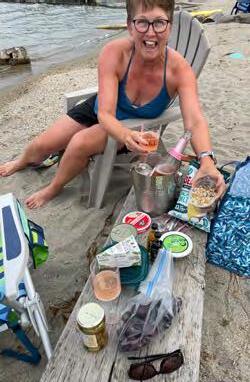
In your boat, at the dock, floating along under the big blue sky, nothing tastes better than food on the water. There are stores with ready-made sandwiches and salads sprinkled around the lake, or you can get creative with your own charcuterie to go. Whatever you do, don’t forget the picnic blanket. In a kayak, canoe, or paddle board? Don’t forget to pack your picnic in a dry bag.
18. Be A Pirate
Legends say that pirates arrived in Lake Chelan in 1812, and the Lake Chelan Pirate Fest happens every July. You can also take the Lady of the Lake Pirate Cruise, including events for kids and a pirate costume contest. Be sure to visit Captain Dan Mimmack, well-known to locals as the Sandpoint Beach Pirate (ID), who offers free boat rides aboard his authentic-looking pirate ship, called the “Wild Spirit.” Lakechelanpiratefest.com
19. Visit A Castle
Stay at the Schweitzer Castle & Château de Melusine, a unique vacation rental near Schweitzer Mountain near Sandpoint, Idahom or the Idaho Castle overlooking Hope. Both are located near Lake Pend Oreille.
20. Paddle All Day
There are many ways to paddle at the lake, whether in a kayak, a canoe, or on a stand-up paddleboard. Spending your day enjoying the water while paddling is not only fun but also a great workout. Additionally, you can paddle in just about any lake, rentals are inexpensive and easy to transport, you can do it alone or with friends/family, and it’s quiet and peaceful.
If you’re just getting started with paddling, it’s recommended you start by taking lessons. The Spokane Canoe and Kayak Club Sckc.club is a great place to begin. Its first priority is safety, next they will teach you the skills you’ll need to fully enjoy the art of paddling. There are paddle clubs in most recreational water areas. To find one near you I recommend exploring the American Canoe Association Americancanoe.org website.
Things to do while paddling:

• Fishing from a canoe or kayak isn’t new, but what about a paddleboard? Fishing paddle boards are equipped with mounts to attach rod holders, bait trays, down riggers, fish finders, and more.
• Yoga on any paddle board is possible, but for the most comfort try an inflatable paddle board with a spacious deck pad.
• Take your pet! Many motorized boat rentals will not allow you to bring a dog, but bringing your dog along for a peaceful paddle, if done safely, can be wonderful. Remember, they too need a personal flotation device (PFD).
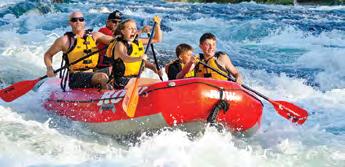

• Explore wildlife while you quietly paddle close to shore or through wildlife sanctuaries. Not only will you see birds and plopping frogs, you might also see beavers, muskrats,

turtles, and soaring eagles.
Resources:
• The Spokane Alpine Haus has everything you’ll need for your paddling adventures, including rentals, clothing, and gear. Specializing in Hobie Cat kayaks and peddle kayaks. Thespokanealpinehaus.com

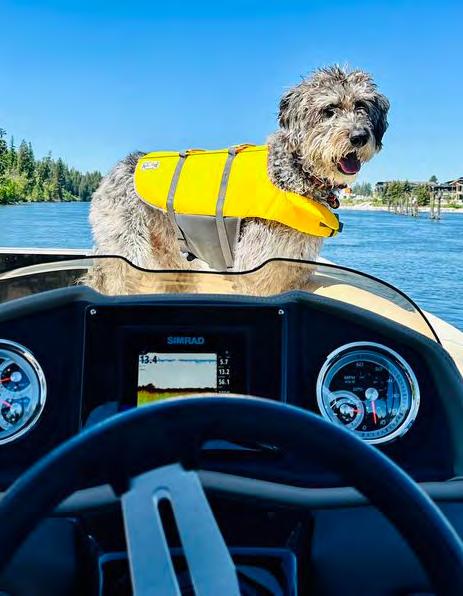
• Rambleraven Trader in Spokane has an expansive selection of both new and used equipment and rentals. Their website allows you to select different categories to see what’s available and schedule rentals. Rambleraven.com
• Breakwater Expeditions provides custom expeditions, such as teen trips, women’s retreats, and full moon paddles. Unique and fully customized, these personalized expeditions are perfect for families (or groups of friends) who want to experience paddling together. “Different people have different comforts outdoors,” explains Angie Roberts, one of the owners, “if you allow yourself to try something new, you’ll find you’re quite capable of doing quite a lot.”Breakwaterexp.com
In the summer, roadside stands line the lakes, selling fruits and vegetables throughout the day, but why not pick your own? Cherries are especially sought after around Flathead Lake in Montana, and eastern Washington and North Idaho are legendary for their huckleberries. Research berry picking safety before you go, because bears like them too!
Magnet fishing is all about searching for metal objects you can pull up with a strong neodymium magnet. This cult hobby/environmental treasure hunting trend has become quite popular and allows you to remove large debris such as discarded bicycles and tire rims from bodies of water. Initially started by boaters to recover fallen keys, magnet fishing has uncovered some interesting artifacts. Magnet fishing is legal in WA, ID, OR and MT. Considering the Spokane and Columbia Rivers were once important transportation routes for early settlers in the Inland NW, there’s potential for some great finds.
23.
Balfour, B.C., is less than 4 hours from Spokane, and Kootenay Lake is one of the province’s largest lakes. Okanagan Lake spans 84 miles, north to south, and boasts long, sandy beaches. The 100-mile-long Arrow Lakes region has two hot spring resorts. There are five parks in the region including McDonald Creek, Rosebery, Summit Lake, Syringa, and Valhalla, and several private campgrounds where you can set up a tent or park an RV.
24.
Fly with commercially licensed pilots in a colorful hot-air balloon above Lake Chelan (WA), Lake Coeur d’Alene (ID), Flathead Lake (MT), or Lake Wallowa (OR). If you really love hot air balloons, be sure to attend the Spirit of Boise Balloon Festival (Boise, Idaho) or the Great Prosser Balloon Rally (Prosser, Wash.).
25. Bike the Lake
Whether biking around the lake, entering a race, going mountain biking, or cruising on an E-bike, there are endless ways to get on your bike around the lakes.
• For something easy, try the Medical Lake Trail, a 2.9-mile trail east of Spokane off I-90, which can also be accessed from Waterfront Park.

• For something more extensive, try the Trail of the Coeur d’Alene’s, a 73-mile paved trail that spans from Mullan to Plummer through Idaho’s chain of lakes region, connected by Lake Coeur d’Alene. The Cycle Haus, a bike shop and restaurant in Harrison along the trail, has rentals for any type of bike, including E-bikes, and a shuttle to transport you and your bike to any trailhead. All you have to do is bike back! https://thecyclehaus.com/


• For bike races near lakes, consider the WaCanId (an annual bicycle tour taking cyclists on paved roads encircling the Selkirk Mountains); the Coeur d Alene Ironman; the Enduro Pescado in Whitefish, MT; Cycle Chelan (Wash.); Spokane Valley Cycle Celebration (Wash.); or the Kootenai River Ride (ID).
Helpful Resources:
• WA Bikes.org Wabikes.org
• TrailLink.com Traillink.com
• WSDOT.wa.gov
• DiscoverBicycleTours.com
• AllTrails.com
26. Get Inspired
Impressionist painters started something called Plein air painting, which is about getting outside to ‘experience painting and drawing in the landscape,’ and what better landscape than a sparkling lake with the mountains and trees surrounding it? Next time you go on a lake adventure, be sure to bring whatever art supplies suit you and let the lake’s beauty inspire you. If painting or drawing seems too complicated, try writing instead. Whenever we went on outdoor excursions as children, we had to bring journals and were asked to write something, even if it was only a haiku, a poem with only three lines, five syllables in the first line, seven in the second, and five in the third.
27. Forage for Plants
Non-commercial foraging for plants is legal on most public lands and state parks, and the bounty of wild mushrooms, berries, and edible and medicinal plants in the Northwest is prodigious. There are foraging groups around the lakes you can join, such as the Wilderness Crafts & Forest Foraging Camp in Coeur d'Alene, and you can also look for foraging groups on Facebook.
Resources:
• INaturalist.org
• NorthernBushcraft.com
• Facebook Group Inland Northwest Foraging
• Washington Native Plant Society
28. See the Lake from the Sky
Enjoy the lake(s) from above! The bigger lakes have seaplane tours that pick you up and drop you off at the dock. Look into Brooke’s in Coeur d’Alene (ID), Backcountry Flying Experience in northern Montana, or Sandpoint Seaplane Service at Lake Pend Oreille (ID). Lake Chelan Helicopters can take you above the lake and the Cascade mountains, and the Moses Lake Airshow is one of the biggest in the West. Or, if you want something a bit more daring, try paragliding. You can go tandem with an expert or take lessons to go up on your own.

29. Visit Museums and Visitor Centers
Let’s face it, the best days at the lake are when the sun is shining, but if you catch a rainy day or need a break from water, seek out the local museums and cultural centers. A great place to start is the visitor center in the town you’re visiting. Most state and national parks have one as well.
30. View Famous Homes
Since lake property is limited, the homes around it can be rather spectacular. If you take a boat or seaplane tour, they will most likely point out some of the more famous homes. Also look for walking tours, garden tours, or historic home tours. You might even spot a celebrity!
31. Go Sailing
Sailing on a lake can be less intimidating than the open sea, and therefore a great place to learn. The North Idaho College Outdoor Pursuits program has a rental shop on Lake Coeur d’Alene run by students in the summer. Here you can find a variety of paddle boats, as well as sailboats and sailing lessons. The Lake Chelan Sailing Association provides lessons, rentals, and several sailing events. The Sandpoint Sailing Association features several races, and Go Sail Montana at Flathead Lake offers lessons, rentals and charters. Fun To Sail offers lessons and rentals on Spokane and North Idaho area lakes as well.

32. Go Snorkeling
Snorkeling is a fun way to explore the lake. Depending on how clear the water is, you may be able to see fish, shells, and other aquatic life. Snorkeling can be a great learning experience, and unlike scuba diving, which requires a certificate and expensive gear, you can go snorkeling with a good pair of goggles, a snorkel, and a pair of flippers. Lake Chelan is a great choice for this.
Lake beaches are a great place to sunbathe, but the swimming is divine. The cool waters can be perfect after a long day playing at the lake—skinny dipping in a moonlit cove, cannon ball jumping off a dock, floating on your back staring at the clouds, tubing behind a boat, or riding about on a giant inflatable. Whatever or however you get into the water, always proceed with caution. The mountain waters can be cold, so always have a towel and a change of clothes. If you start to shiver, get out of the water; never swim alone; always keep your eye on the little ones; and if you’re in open water or not a strong swimmer, wear a PFD.
34. Learn About Wooden Boats
Wood has been a reliable material for boats, but now we live in an era of fiberglass, aluminum, and steel hulls. Traditional boat owners and historians revere wooden boats as a symbol of boating culture. Because of that, you’ll find several wooden boat events around the lakes in the summer months. Here are some of the bigger events, but you can also look for wooden boat clubs in your area.
• The Wooden & Antique Boat Festival (Sandpoint, Idaho), July 15
• Payette Lake Wooden & Classic Boat Show (McCall, Idaho), August 4,5,6

• Coeur d’Alene Antique & Classic Boat Festival (Coeur d’Alene, Idaho), August 12 & 13
• Mahogany & Merlot (Chelan, Wash.), October 6-8
35. Explore Wallowa Lake
Wallowa County is in Oregon’s northeastern corner and is full of snowcapped mountains, wild prairies, pristine waterways, and North America’s deepest river gorge. It’s also home to
Lake Wallowa. Fed by icy snowmelt, this dazzling lake was formed by a series of Pleistocene glaciers. Here you will find fewer people, mind-boggling stars, and the Wallowa Lake Tramway that climbs 3700' to the top of Mt. Howard with sweeping views of all four states. Enjoy hiking, biking, watersports, horseback riding, wildlife viewing, fishing, and sightseeing around the area, and the 4-day Alpenfest in September.
36. Ride With the Ladies of the Lake

At the top of Lake Chelan is a little town called Stehekin, a breathtaking destination nestled in the heart of the North Cascades that you can only get to by boat. The Lake Chelan Boat fleet can take you there, and consists of the Lady of the Lake, the Lady Express, and the Lady Liberty—the three ladies of the lake. Once you reach Stehekin, you’ll be surrounded by trees over a 100 feet tall as you wind your way up the one-lane road into a serene and magical place full of unique places to stay, biking, hiking, fishing, horseback riding, and electric boat rentals. The Lake Chelan Boat fleet also provides charters and activity packages.
Hawk Creek Falls State Park, and Fort Spokane. A little farther north, you’ll move into the land of mountains carved from prehistoric glaciers and the Kettle Falls that plummet nearly 50 feet, carving “kettles” in the quartzite rock. To the south is the Lake Roosevelt National Recreation Area, located along the upper Columbia River and cradled in walls of stone carved by massive ice age floods.
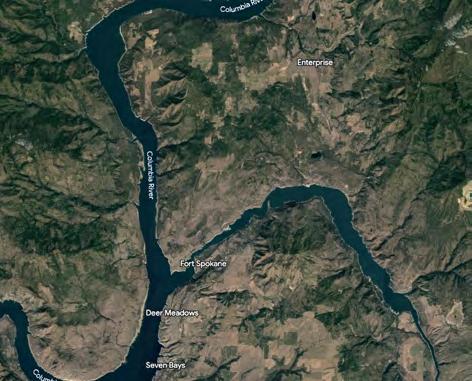
38. Find Peace



There are numerous reasons why lakes are so popular, but, for many, it’s the peace of a lake that calls to them. Most of this list is about activities you can do at, in or around a lake, but after writing it I realized there was one thing missing, and that was the feeling a lake can give you as you lie beside it, float along it, or slumber upon it and the sense of inner peace it can bestow.
“A lake is a landscape’s most beautiful and expressive feature. It is Earth’s eye; looking into which the beholder measures the depth of his own nature.” -Henry David Thoreau. //

THE DEEP, CLEAR LAKES scattered around the Spokane region provide fascinating evidence of the unique geologic history of the Inland Northwest. The stories they carry are rich enough for myth or legend: massive ice sheets, lost glaciers, churning floods, and fresh flows of groundwater from underground rivers and aquifers.
Geologist Bruce Bjornstad has devoted years of research and field work to the study of the cataclysmic Missoula Floods that shaped many of the local landscapes. “Out in the scablands of southeast Washington,” he says, “Medical Lake and Sprague Lake— those are fed by groundwater exclusively. There are actually no streams or rivers flowing in.” He describes how the floods carried huge amounts of rushing water and debris that, “scoured out big holes in the basalt. The places where these floods scoured below the water table are now filled with lakes.”
According to Bjornstad, as many as 100 such floods occurred over a few thousand years toward the end of the last ice age, when the Cordilleran ice sheet covered a large part of the Pacific Northwest. During this period, ice repeatedly blocked the Clark Fork River, creating a dam up to 30 miles wide and 4,000 feet thick that blocked the river’s flow. Water from the resulting lake periodically overpowered the ice dam by flowing under it or by permeating and breaking up the ice.

In one of his many lectures, Central Washington University geologist Nick Zentner says that at its top speed, water from Glacial Lake Missoula moved at 70-80 miles per hour, and for multiple days following the breaking up of the ice dam, flowed at a rate of 500 million cubic feet per second—10 times the flow of all the rivers of the world combined.
Idaho’s Rathdrum Prairie sits directly downstream of the outburst area for the Missoula floods. “When the glacial dam broke,” Bjornstad says, “the rushing water dropped so much sediment that it raised the level of the Rathdrum Prairie and blocked tributaries,” damming streams and preventing accumulating water from escaping. This phenomenon created today’s Coeur d’Alene, Liberty, Twin, Newman, Hauser, Hayden and Spirit lakes, all of which are fed from rivers and streams that drain down from surrounding highlands and feed the prolific Rathdrum Prairie-Spokane Aquifer below.
Lake Pend Oreille, the fifth deepest lake in the Unites States, was formed by a combination of grinding ice and floodwater. According to Bjornstad, a lobe of the ice sheet crept down from the Purcell trench (a long, glaciated valley extending from British Columbia into North Idaho), carving a deep trough where the lake rests today. The Clark Fork River, formerly dammed with ice during the Missoula flood period, now feeds Lake Pend Oreille, along with the Pack River.
Bjornstad says a second ice lobe carved out and filled Priest Lake, which is bordered by a buildup of sediment at its southern end unrelated to the Missoula floods. “At the extreme front end of the glacier that carved out Priest Lake, the ice started melting back and dropped a huge amount of sediment, which formed a natural dam. This type of sediment is called a glacial moraine.”
Bjornstad says “there are lots of natural lakes in this area. They’ve formed in a lot of ways, including erosion from the Missoula Floods, glaciers, as well as damming and filling of water behind glacial moraines.” He says floods made the biggest contribution
by creating many scour holes and troughs that lakes now occupy. Today these depressions receive water from rivers, streams and groundwater. Still other lakes, like Lake Roosevelt and Long Lake along the Spokane River, are recent lakes created by man-made dams immediately downstream. Banks Lake is also a modern, man-made lake created by the pumping of irrigation water 500 ft above Lake Roosevelt into the upper Grand Coulee.
When asked where one might find other lakes and landscapes similar to those in the Inland Northwest, Bjornstad says: nowhere.

“What we have here is unique worldwide. It’s one of a kind. We find evidence elsewhere to suggest the story of perhaps a single large Ice
Age flood, but nothing on the scale of what we see from these repeated Missoula floods.”
For more local geology, check out Bruce Bjornstad’s books (available at Auntie’s Bookstore): “On the Trail of the Ice Age Floods: A Geological Field Guide to the Mid-Columbia Basin,” and “On the Trail of the Ice Age Floods—The Northern Reaches: A Geological Field Guide to Northern Idaho and the Channeled Scabland.” //
Olivia Dugenet is a frequent contributor to Out There Outdoors. This summer, she will be sleeping on the shores of at least eight different lakes and rivers in remote sections of Wyoming, Montana and British Columbia.
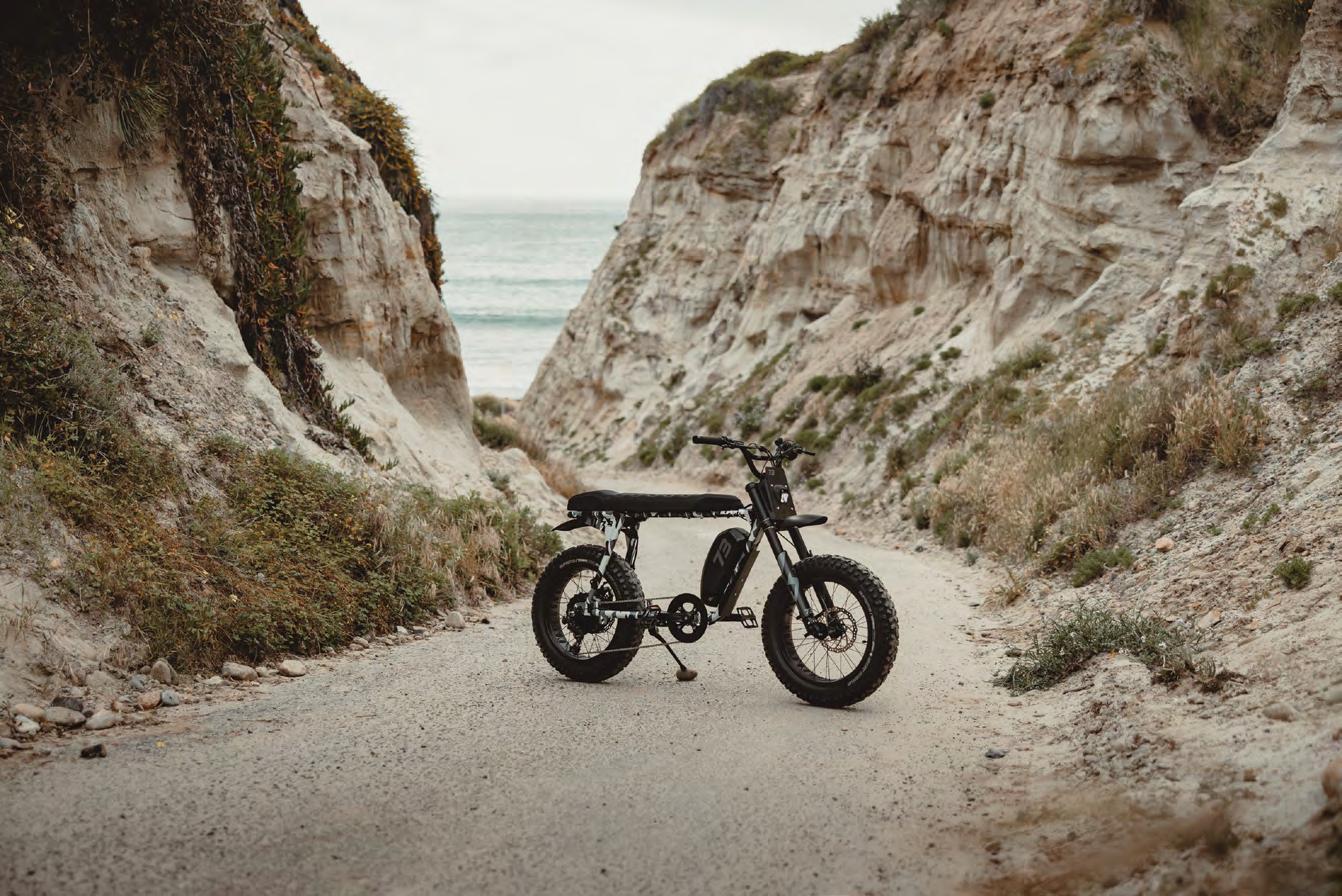
at least two forms. Previously, the lower level of mineral-dense water was hauled up from the depths for therapeutic “deep sea baths.” More commonly, visitors cover themselves in mud from the lake and let it dry on their skin, leaching impurities from the body.

While mineral density in the lake is 20
century put a damper on the mud and water treatments. The spas offering them dwindled and closed, leaving the city we know today.

There’s more to Soap Lake than the lake. As the gateway to the Grand Coulee, visitors can explore the Ice Age Floods National Geologic Trail leading to Dry Falls. Then
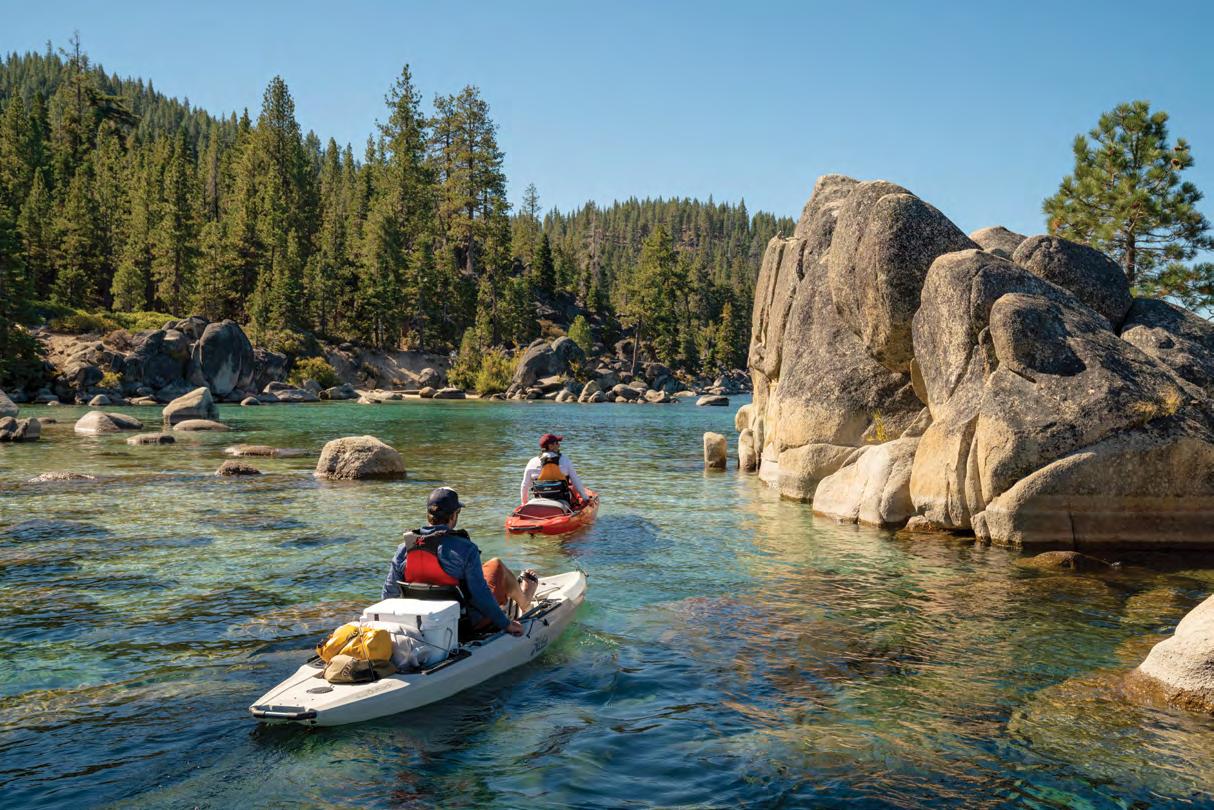
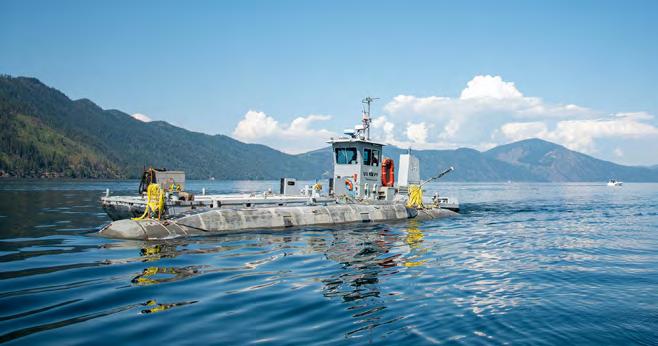 BY JAMES P. JOHNSON
BY JAMES P. JOHNSON
LOCATING A SUBMARINE BASE on a lake, hundreds of miles from the ocean would be a huge, strategic error. If military action called for a submarine, the time needed getting to the ocean, if it could, would cause navy commanders to stomp and yell in frustration.
Military leaders recognized this and established bases on our coasts. However, in Bayview, Idaho, at the southernmost point of Lake Pend Oreille, a U.S. Navy submarine base has been in operation since 1946, and its siting there was done because it’s a great

place for a base despite the trouble any sub would have making it to the ocean.
One reason the Navy chose Lake Pend Oreille is because of deep, deep water. The lake bottoms out at 1,150 feet, the fifth deepest lake in the United States. Pend Oreille is also the largest lake in Idaho with 148 square miles of surface area. It has quite a long trench of deep water that gives plenty of maneuvering room for subs. It offers more seclusion and shelter than a coastal location too. The calm, clear and chilly water mimics ideal ocean conditions.
So what do submarines do at Lake Pend Oreille? No matter how dire any situation may be, the subs won’t see battle. Operating under a branch of the Navy called The Calderock Division of the Naval Surface Warfare Center, the Bayview site is one of eight nationwide that does testing and development of new technology for ships and submarines. Bayview’s specialty is the testing of new submarine design and propulsion systems that focus on acoustics to create the quietest submarine possible. A sub that can sneak around without our enemies knowing where it is or how to locate it makes for an advantageous position. The importance of this is why the Bayview facility, called the Acoustic Research Detachment, has been in operation for 77 years.
Perhaps this causes worry for you deep state zealots that this is a covert, top secret operation, and whenever wrongdoing is detected, such as a fisherman reeling in one too many, helicopters are airborne, soon to converge on your boat.
Take comfort that though details of specific, new technology is kept secret, the base itself is not. The Acoustical Research Detachment has been part of the community for a long time, and, on special occasions, has opened its doors to the public, allowing
tours and displaying the subs used to test new technologies.
The base’s large-scale submarines range from one-fourth to one-half the size of the battle-ready ones plying the ocean. They are unmanned, remotely-controlled and packed with gear. Sensing equipment installed at the bottom of the lake is used to pick up the acoustical footprint of propulsion systems (the submarine moving through the water) and, quite often, the noise of equipment used inside subs. Testing is usually done at night when lake traffic is low to nonexistent, giving the best conditions to evaluate acoustics.
The Acoustical Research Detachment also does work for other defense agencies, private firms, academia, as well as allies of the United States. The facility is considered the best available for testing marine acoustics, allowing introduction of new technology at a low cost. Many design elements and components tested at Bayview have been integrated into Navy submarines past and present. Next time you recreate on Lake Pend Oreille, imagine the submarine-worthy depths below you. //
GROWING UP in eastern Washington, Bryan Heer didn’t have much exposure to the world of sailing. “My dad sailed a little bit, but I was really young,” he says, “And my uncle had sailed before, so it was something that was interesting, but I never got a chance.”
That is, until Heer moved to Seattle, where sailing is a part of the city’s culture. He noticed that every Tuesday evening during the summer, Lake Union would fill with dozens of sailboats, ranging in size from large racing yachts to single-person dinghies. Then, last summer, a friend of Heer’s bought a sailboat and invited him to join as crew for the Tuesday night events.
“A couple weeks after he got it, he said, ‘Hey, let's do Duck Dodge,’” Heer says. “So pretty much my first experience sailing was Duck Dodge.”
Duck Dodge began in May 1974 as the “Lake Union Beer Can Regatta.” Three friends, Ron Lloyd, Mike Rice, and Bruce Gilbert, approached the City of Seattle and asked permission to hold a casual Tuesday evening sailing event on the lake. The city declined, citing potential concerns about boats interfering with waterfowl. The friends decided to hold the event anyway, but they instituted a rule that remains to this day,
“Never make a duck change its course.”
Because of its unique rule, the “Beer Can Regatta” was also known as the “Tenas Chuck Duck Dodge.” In Chinook, a Northwest indigenous language, Tenas Chuck is the name for Lake Union, meaning “little water.”
Over time, the name shortened and the event became simply known as Duck Dodge.
From those early days, Duck Dodge has grown and become a Seattle institution. This year, it’s bigger than ever, according to organizer Mike Danger Adams. “Last week, we had 92 boats,” Adams said in May. “The two largest yacht clubs in the area are Sloop Tavern Yacht Club and Corinthian Yacht Club. And neither of them on their weekly races approach how many boats we have on the lake.”
While there is a set course and a committee boat full of volunteers who start the boats in a series of five staggered waves, Duck Dodge isn’t really a race. It’s a floating party. Unlike many sailing regattas, any size or type of sailboat is welcome to participate. Each week, there’s a theme, and sailors are encouraged to dress in costume and decorate their boats. Themes for the 2023 season include “Pajama Night,” “Mardi Gras” and “Prom.” After everyone completes the course, there is a big “raft up” in the middle of Lake Union
BY CHRIS MACCINIwhere sailors socialize and cross boats to get to know one another.
Adams says the event strives to be inclusive and welcoming to everyone regardless of age, creed, heritage, gender, orientation, or skill level. If you’ve never sailed before, but want to learn how, he says one of the best ways to get involved with Duck Dodge is to volunteer with him on the committee boat.
“Once the raft up comes along, go boat to boat, make friends and find a boat to be on,” Adams says. “The event is an amazing stepping stone into the sailing world for people that have never been part of the sport before, and it opens the door to an amazing, closeknit community.”
It’s that community that keeps new sailors like Bryan Heer coming back week after week. “It's been a good way to really get into sailing,” he says. “And there are a lot of spectators too. You have a good view of the city as you’re going around. It's pretty fun.”

You can learn more about Duck Dodge on the “Duck Dodge - Lake Union” Facebook Page or at Duckdodge.org. //
Chris Maccini is a writer, audio producer, and sailor based in Spokane. During the summer months, you can find him sailing his Catalina 22 on Lake Pend Oreille.

WHEN I THINK OF RACE DIRECTING, I imagine someone hanging onto a cliff by their fingertips. If all goes well, they scramble up, carry on, and no one notices. But one rock tumbles, a handhold slips, and they plummet to jeers of disgruntled participants who believe idiots seal their own fate.
Eighteen years ago, I was invited to cover and run the Himalayan 100-mile stage race in West Bengal, in the northeast tip of India. For five days, at elevations from 6,000 to 12,000 feet, partly on a road that forms the border with Nepal, I joined 40 runners (including a handful of fellow journalists) from 12 countries to race a loop through terrain tourists never see.

The director and founder of the Himalayan 100-mile stage race, now in its 33rd year, was known to us only as Mr. Pandey. He bossed us like schoolchildren, so we kid-bonded, playfully uniting against a common foe. His Indian-accent English speech tended to be a list of imperatives and so we rebelled by teasing him (behind his back).
“You will be waking at 5:47 a.m. and you will be enjoying your breakfast and you will not be late,” announced a cheeky South African journalist in a perfect imitation of Mr. Pandey. Naturally, Mr. Pandey walked in during our hysterics. We were, he said, very naughty boys and girls.
The first day of the race, we slogged up 24 miles on cobblestones as big as babies to unheated, rustic huts at the peak in Sandakphu National Park, the only place where four of the five tallest mountains in the world are visible. Nearby was Kangchenjunga, number three (in height) after K2 and Mount E.
The rest of the race, slightly less grueling, was the hardest physical thing I’ve done. I
tried to enjoy the scenery, but I was then still a competitive little beast. I cared most about winning the stand-alone Mt. Everest Challenge Marathon on the third day.
I came home with the trophy, thankful I did the event, and relieved it was over. I hadn’t considered returning to India. Then, last summer, my brother Mark and his wife Debra bagged U.S. government jobs and moved from West Virginia to New Delhi. They sent photos from weekend jaunts to fabulous places. They mentioned a spare bedroom.
Before I left for India this spring, I reached out to Mr. Pandey to ask for places to run in Delhi. He offered to host me on a trek through his homeland in the Himalayas, but there wasn’t time. So, I invited him to my brother’s apartment for dinner.
Mr. Pandey brought his 13-year-old son, Om, and many gifts. The stern dictator I’d known as a race director was now all warmth, enthusiasm, and insistent on documenting our joyous reunion with photos. Before, during, and after dinner Mr. Pandey talked nonstop, offering a Hindu nationalist’s insights. I was eager to get his take on local issues and he was happy to offer opinions.
What do people get wrong about India?
So much, he said. “They think it’s all monkeys and snakes.”
Prime Minister Modi, he said, paved roads and brought infrastructural and technological improvements (while also, I didn’t point out, jailing political opponents and eroding democracy). Mr. Pandey said I would not recognize the Himalayan 100 today. There is now a real hotel at Sandakphu. Heat! Hot water! Toilets!

Pfft, I said. Who wants an easier race? Then I thought, Me!
When we returned to New Delhi after a
weekend trip, Mr. Pandey invited my husband Toby and me to his home for lunch. His wife prepared fried bananas, taro root, dal, chapatis made with millet, and a zillion other things I can’t name but devoured with relish.
Over lunch, under photos of our host taken with various Indian luminaries, Mr. Pandey talked about his early days mountaineering—the many ascents, the difficult treks, the dangerous rescue missions to aid the Indian military. He is a badass from way back, something I didn’t bother to consider all those years ago when I was a narcissistic competitor running 100 mountainous miles.
I thought about what it takes to put on any race, then added in the complexity of a loop through rural areas (especially before cell coverage). Wrangling a group of international runners with different cultural expectations: more challenging than running 100 miles.
Americans, he said, were easiest. They just need to know the plan. They like informa-
tion, and once they have it, they relax.
What a treat, I commented, to hang out, to chat freely, to experience warmth and generosity I hadn’t been able to see 18 years ago.
“Rachel,” Mr. Pandey said, leaning across the table and taking my hand, “you are my friend of the heart. The racers, they are all my friends, but during the event they must be so only in my heart.”
Mr. Pandey’s job as race director—to keep us safe and on schedule—meant hanging on by his mountaineering fingertips. No room for playfulness, for fun.
At home in Delhi, I got to see a man in full: father, son, husband, friend. The spirit in me greeted the spirit in him. Namaste, Mr. Pandey. //
Rachel Toor, professor of creative writing at Eastern Washington University and author of six books, now works hard at staying upright on the trails, especially when running with a bouncy 60-pound mutt.

